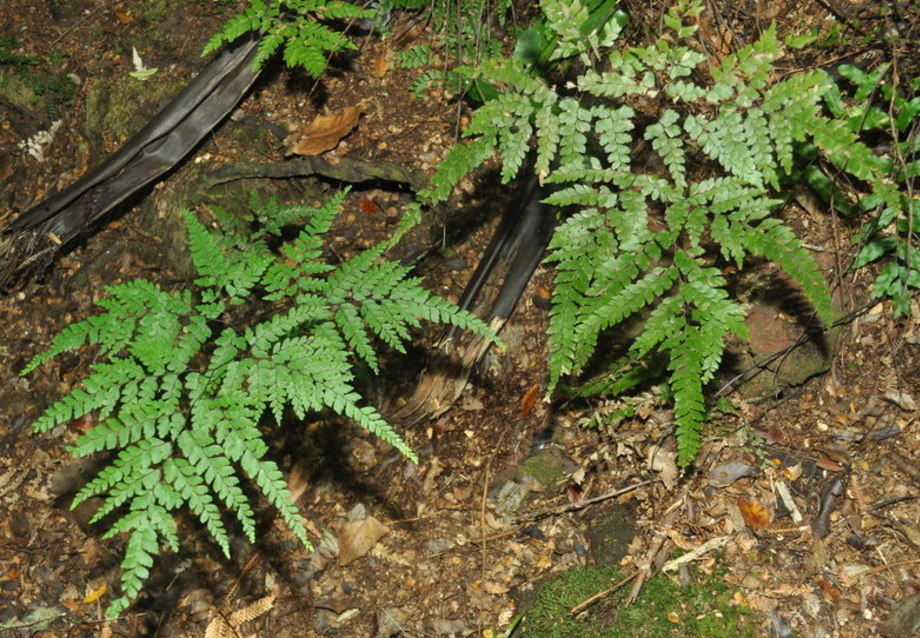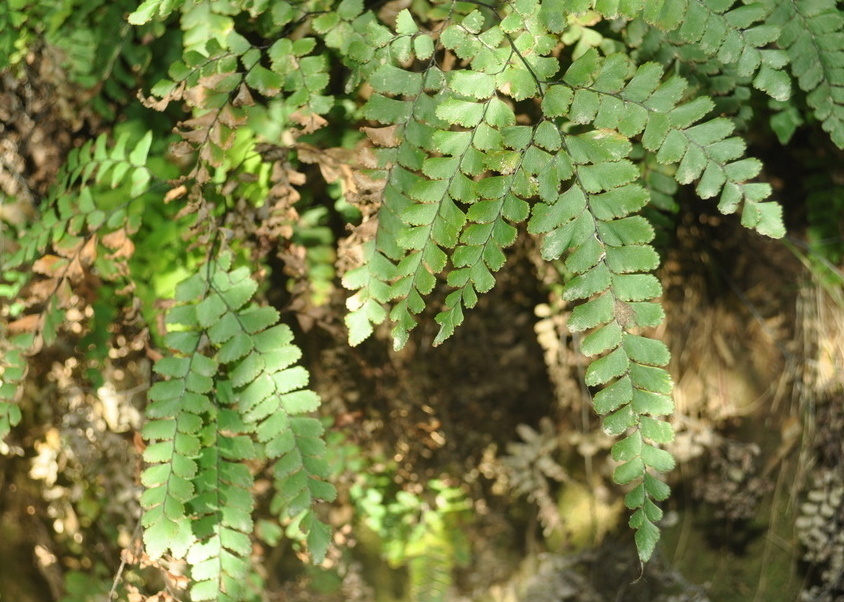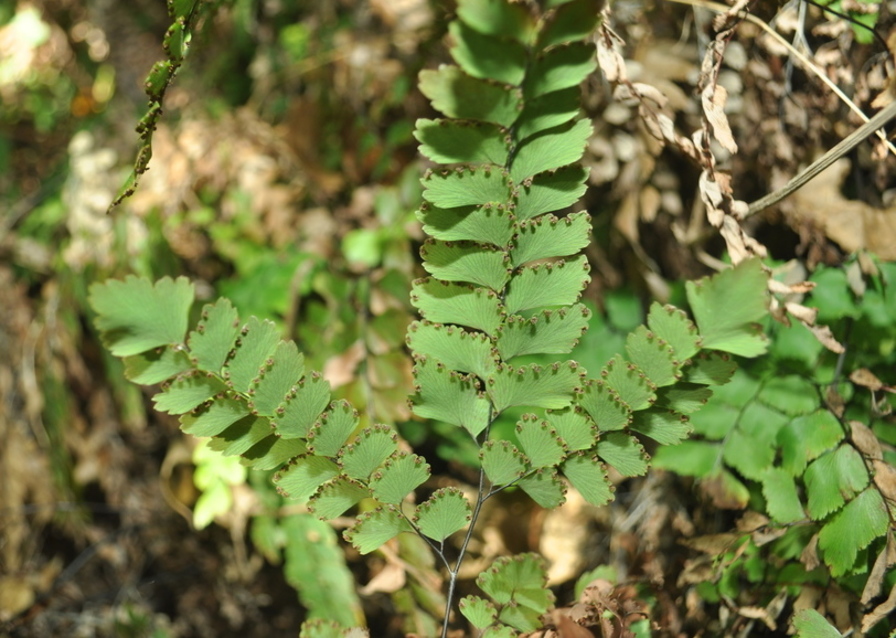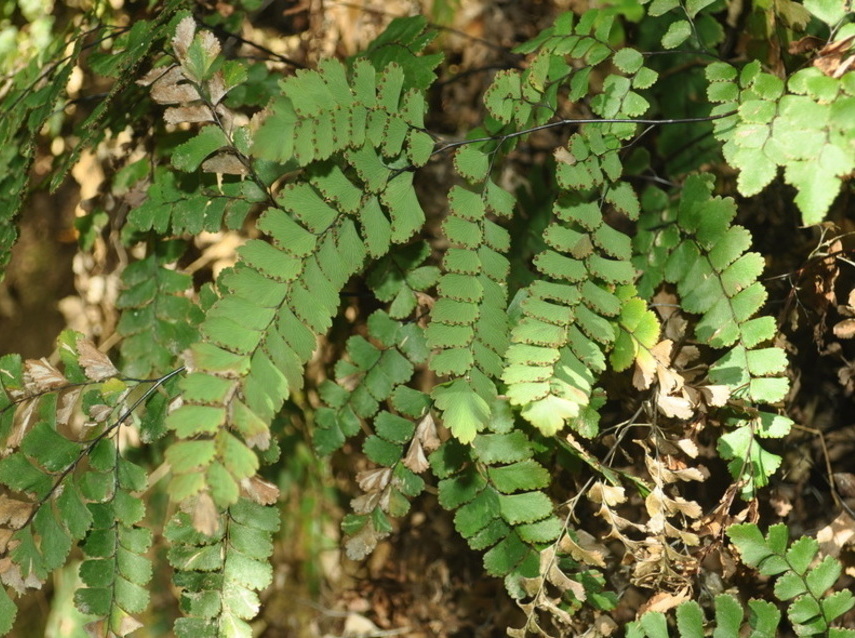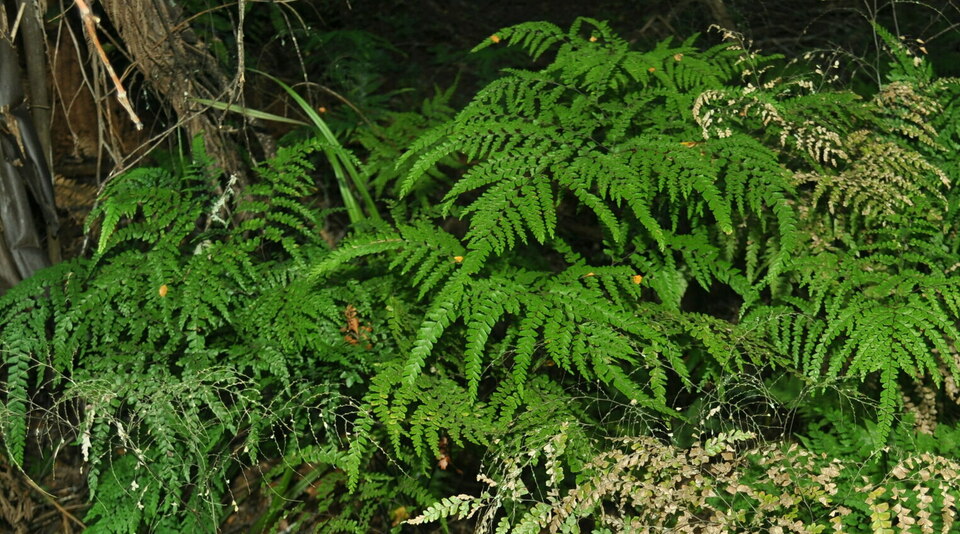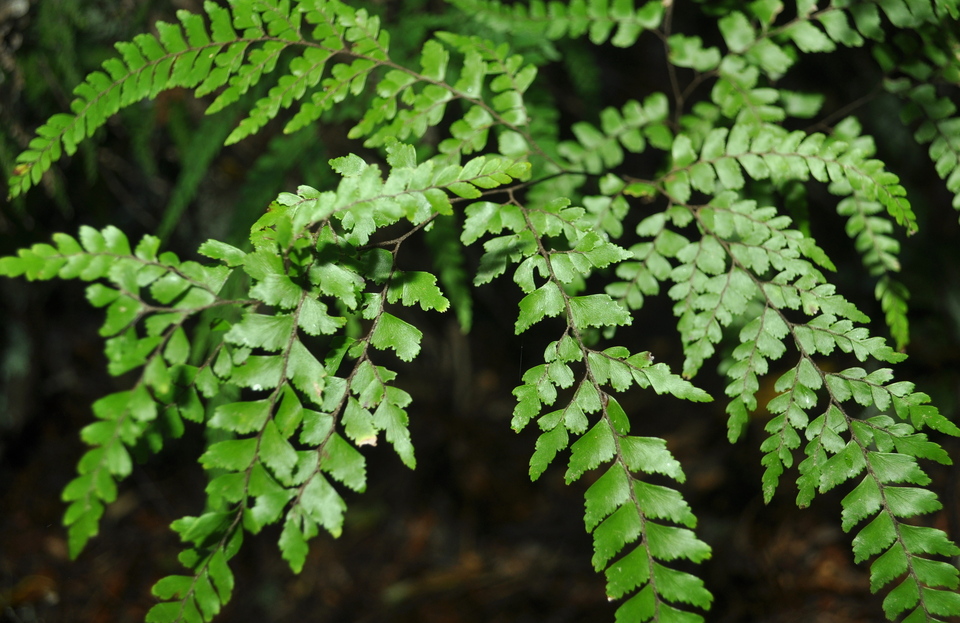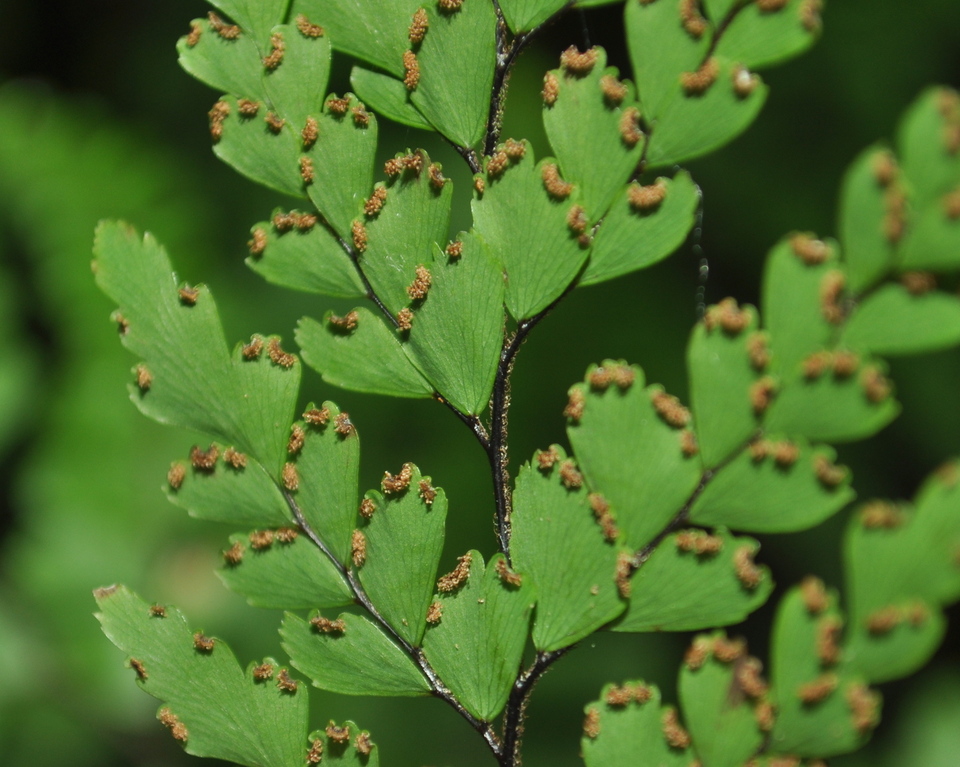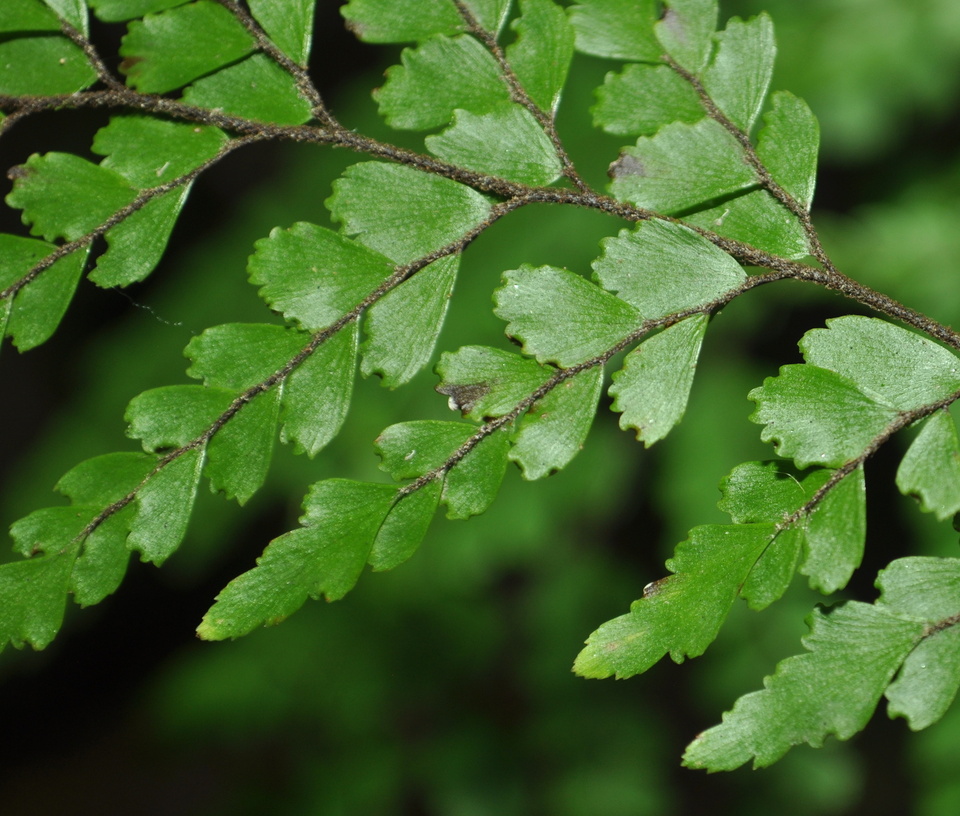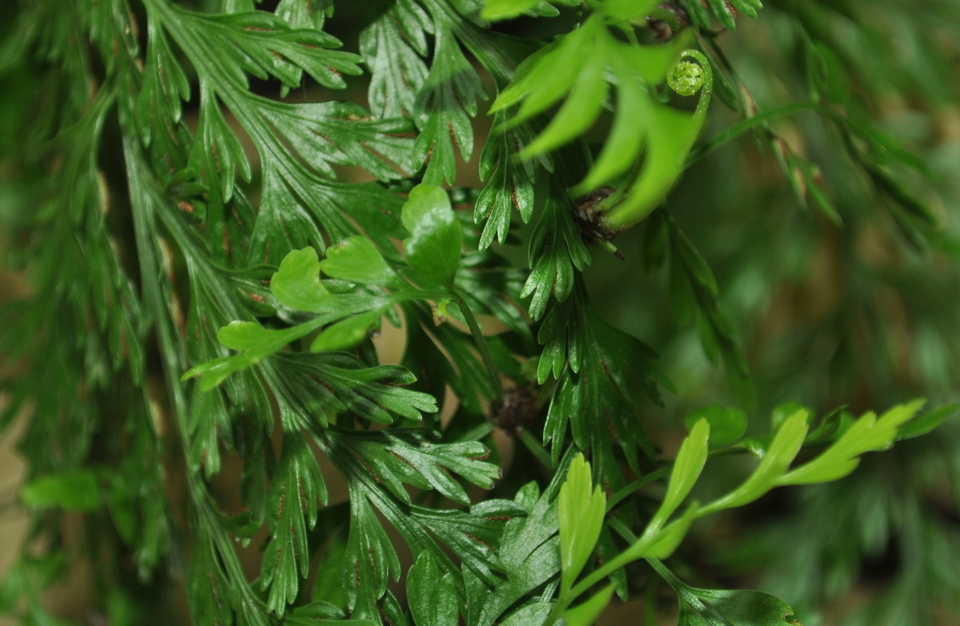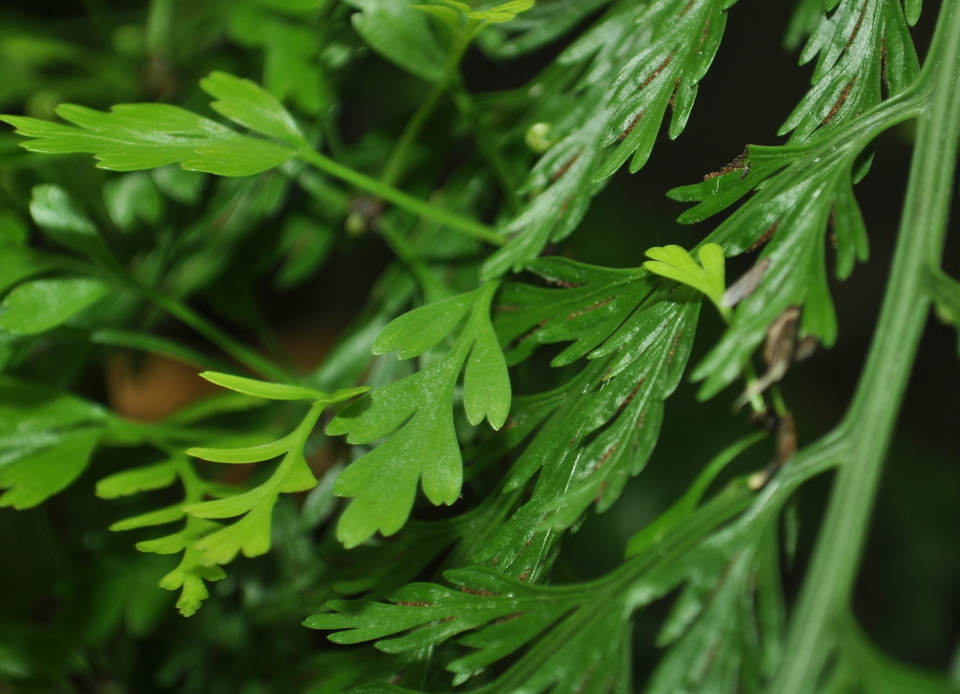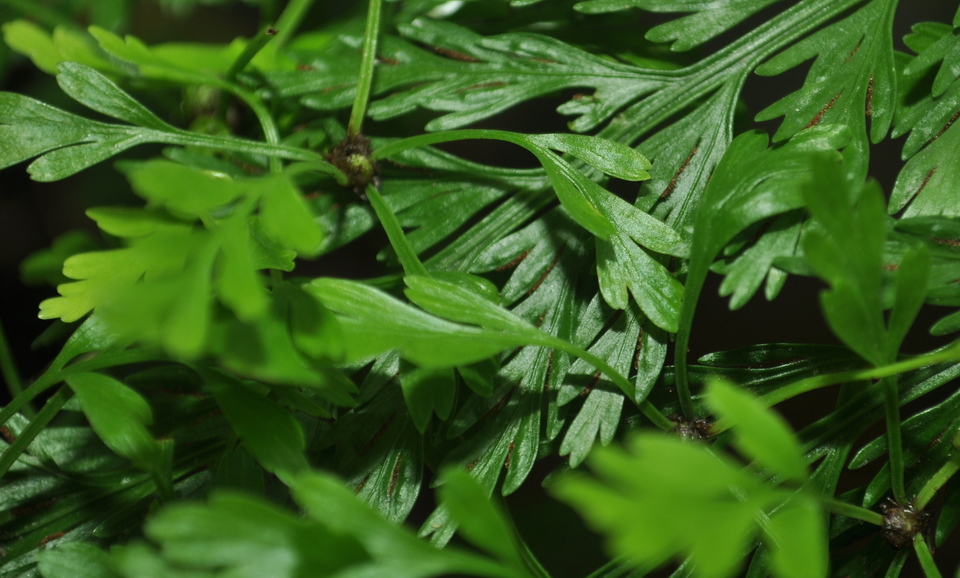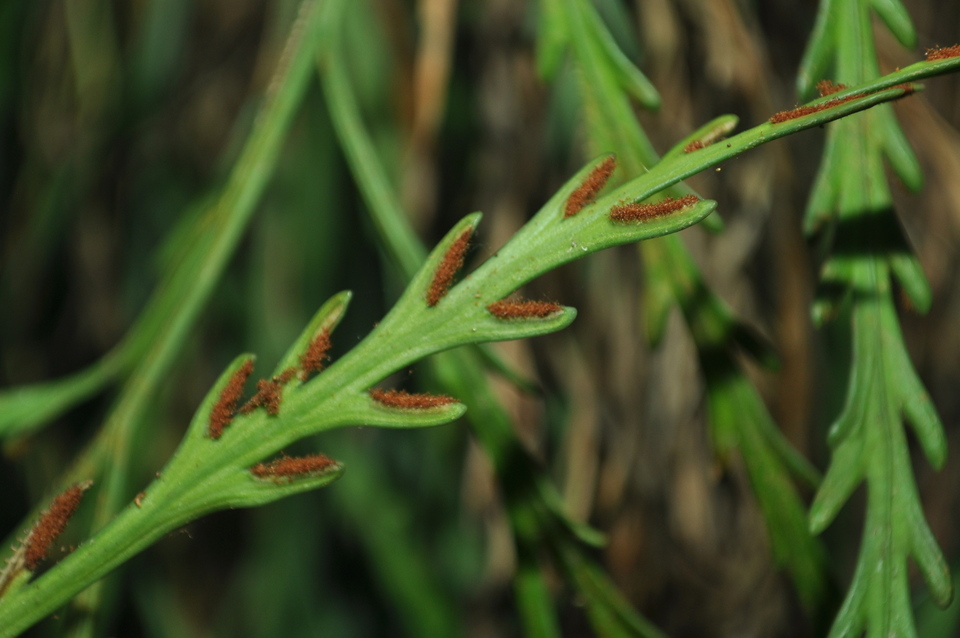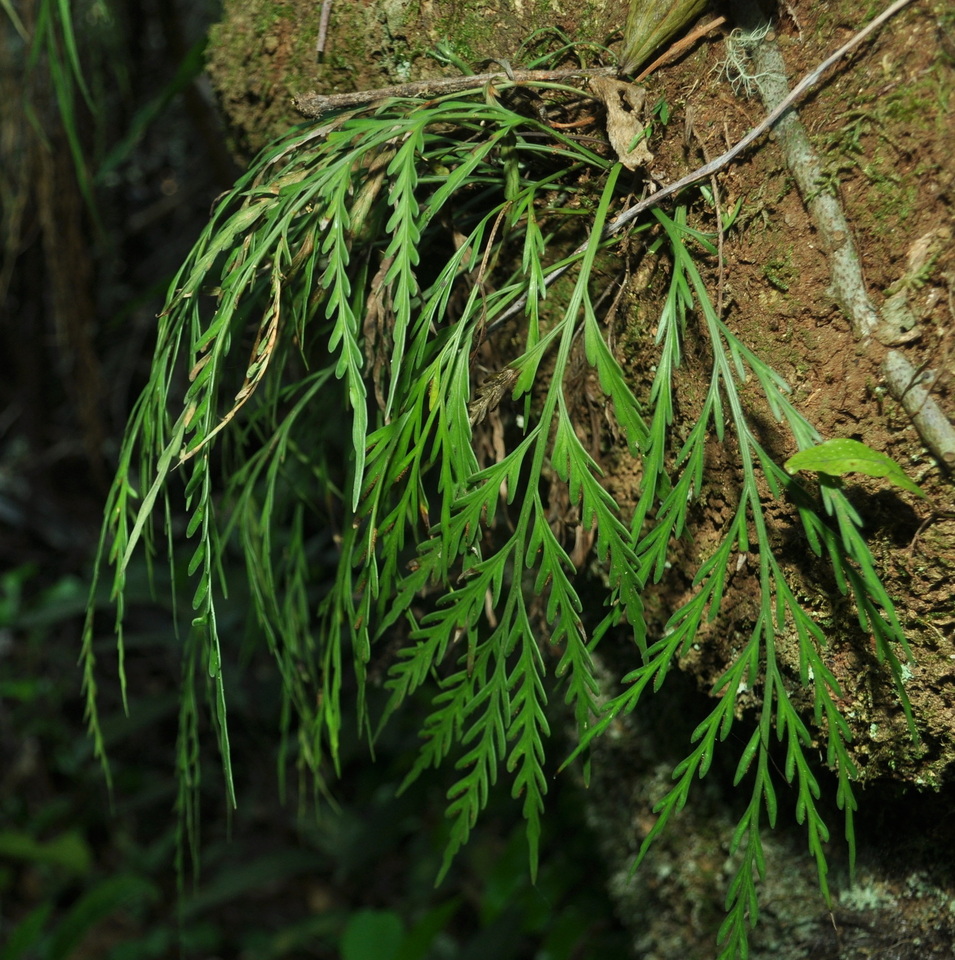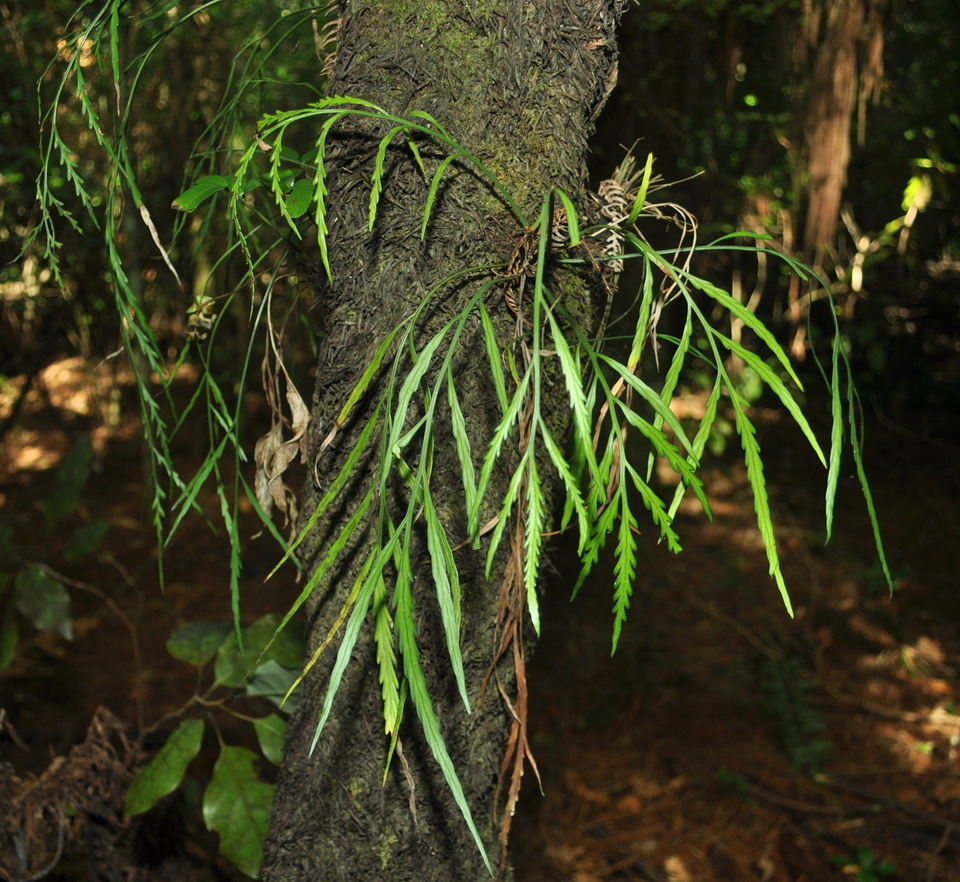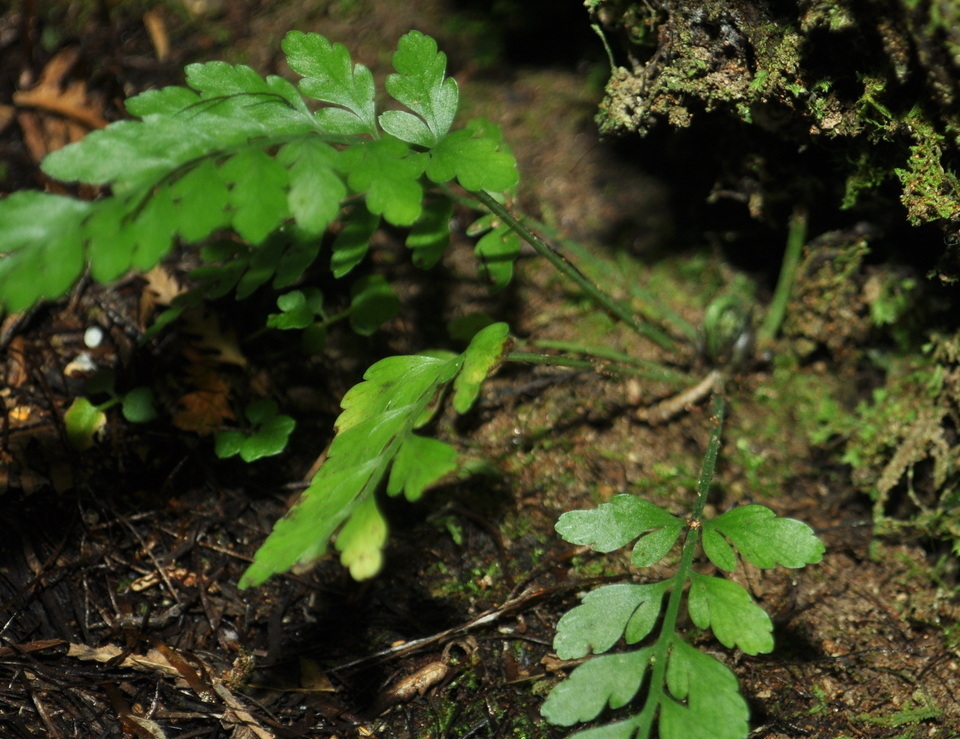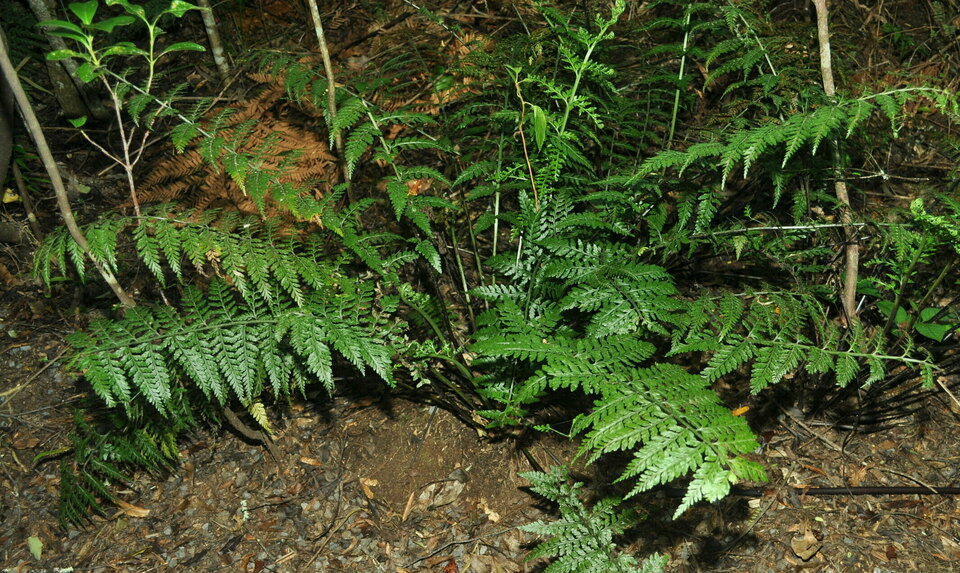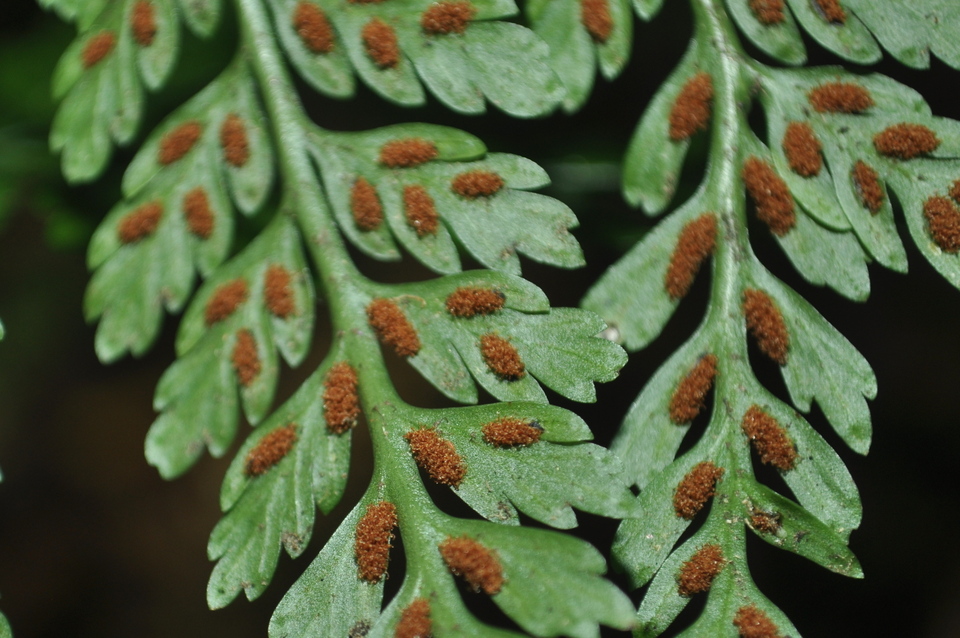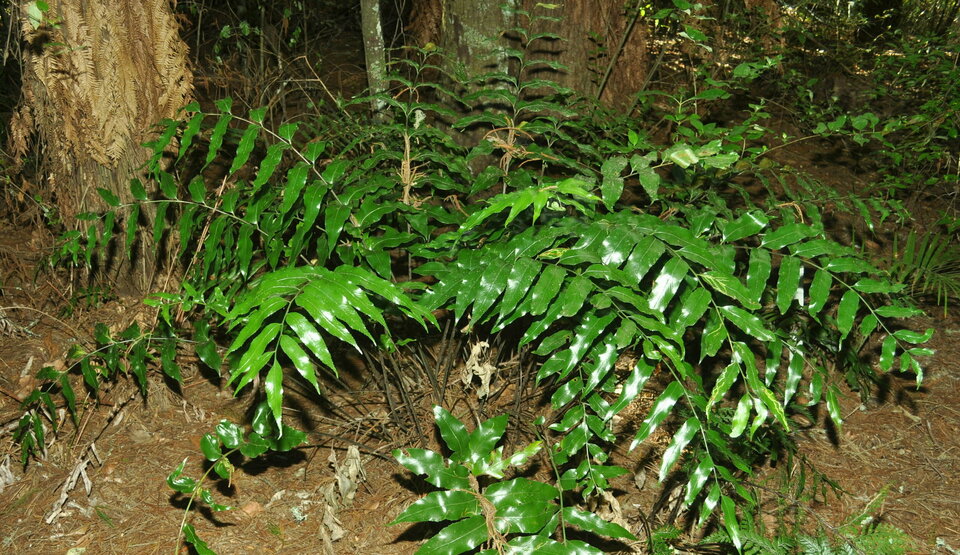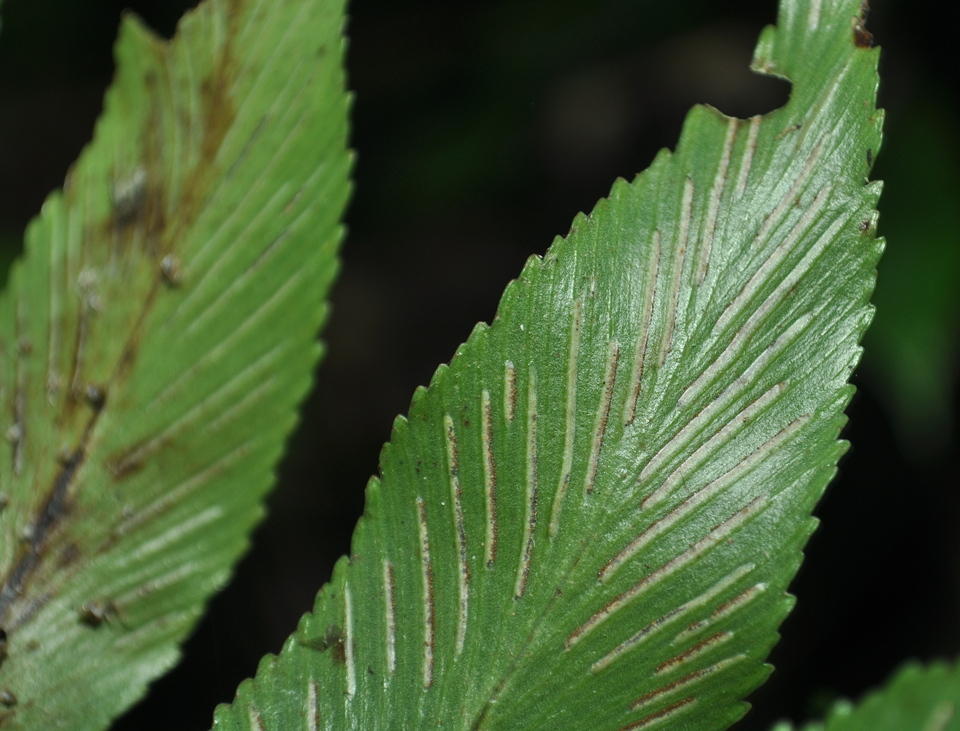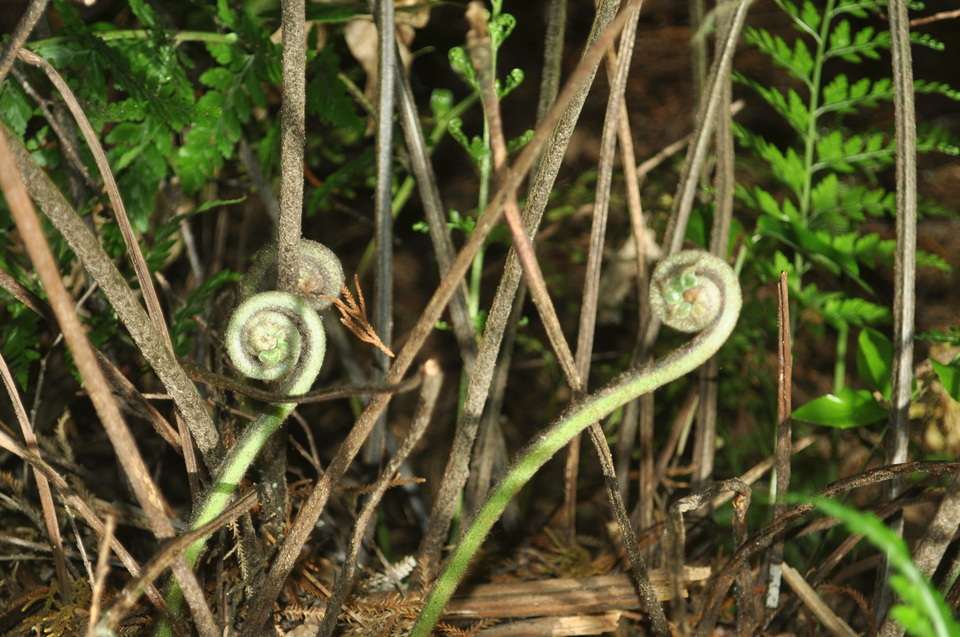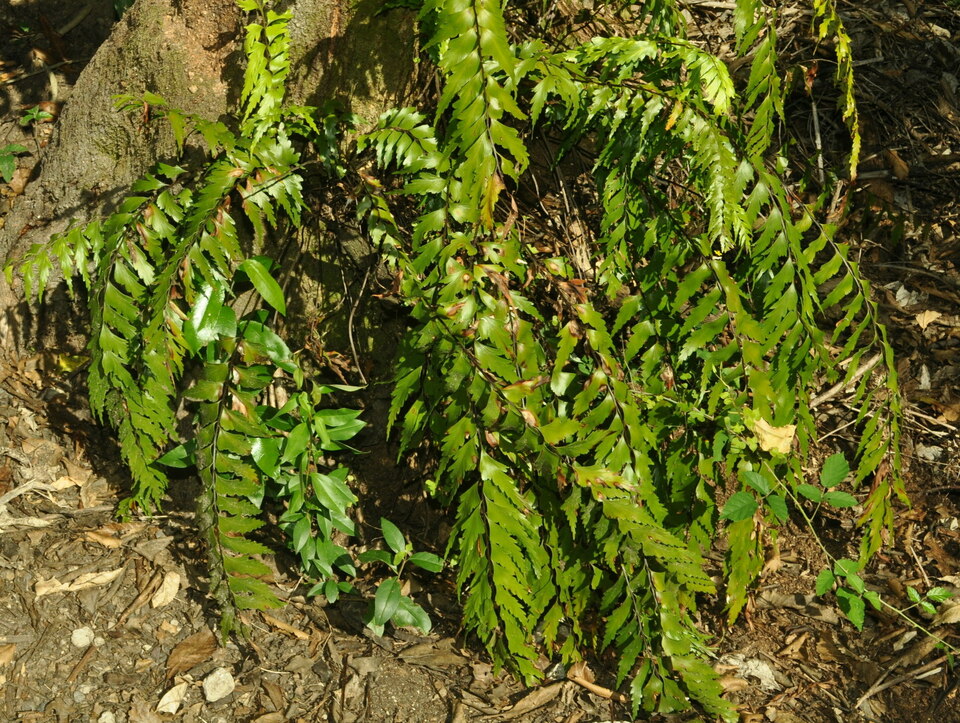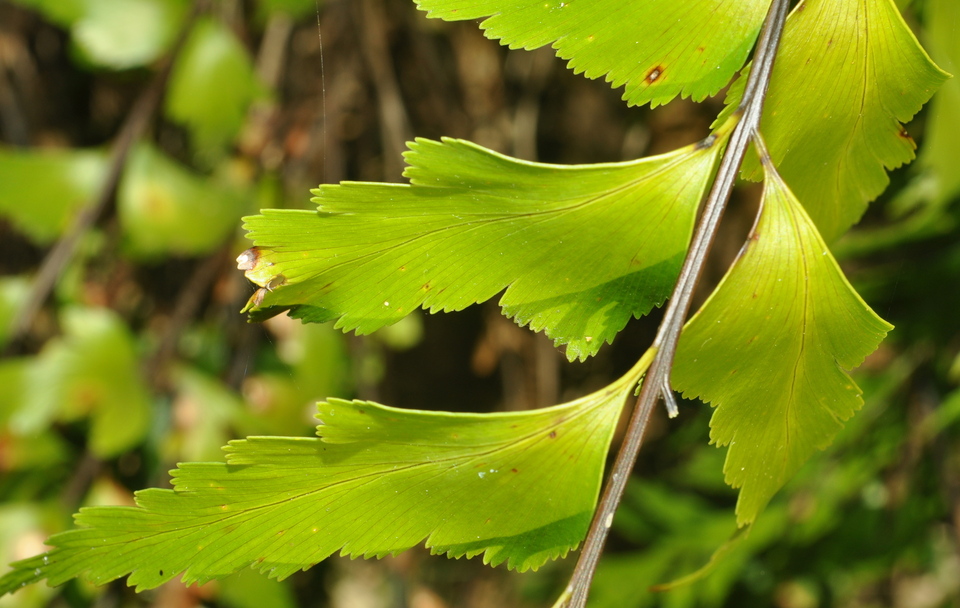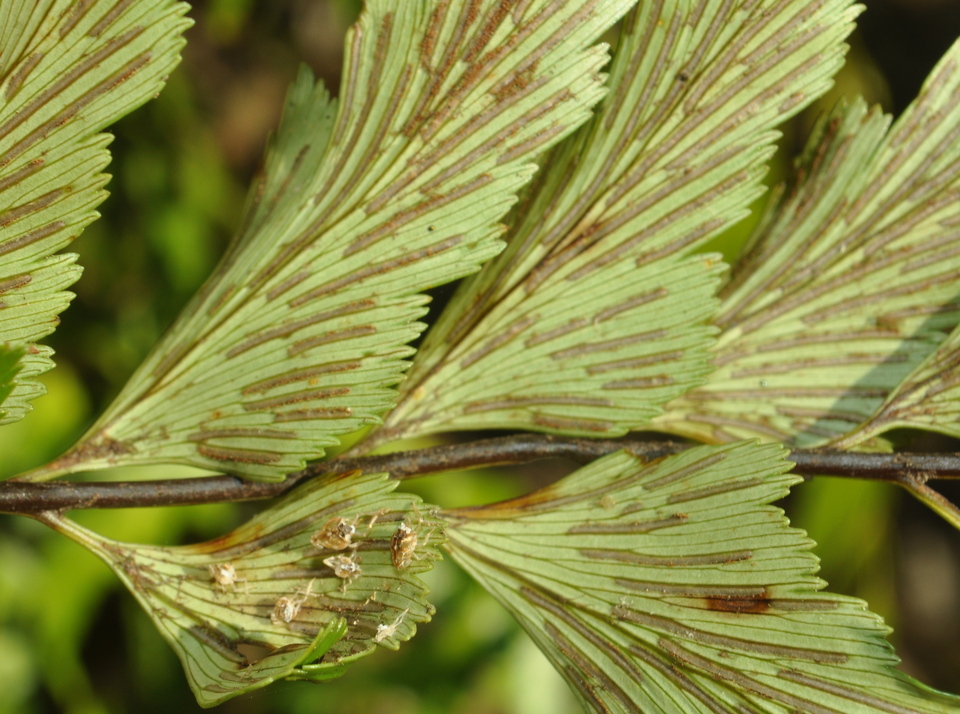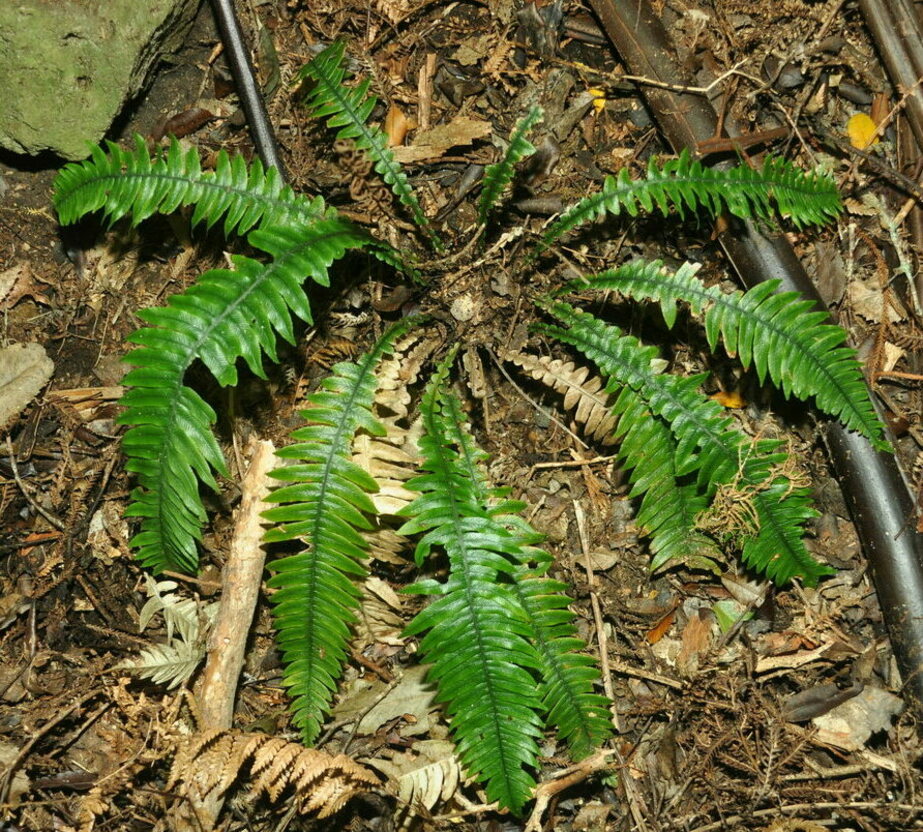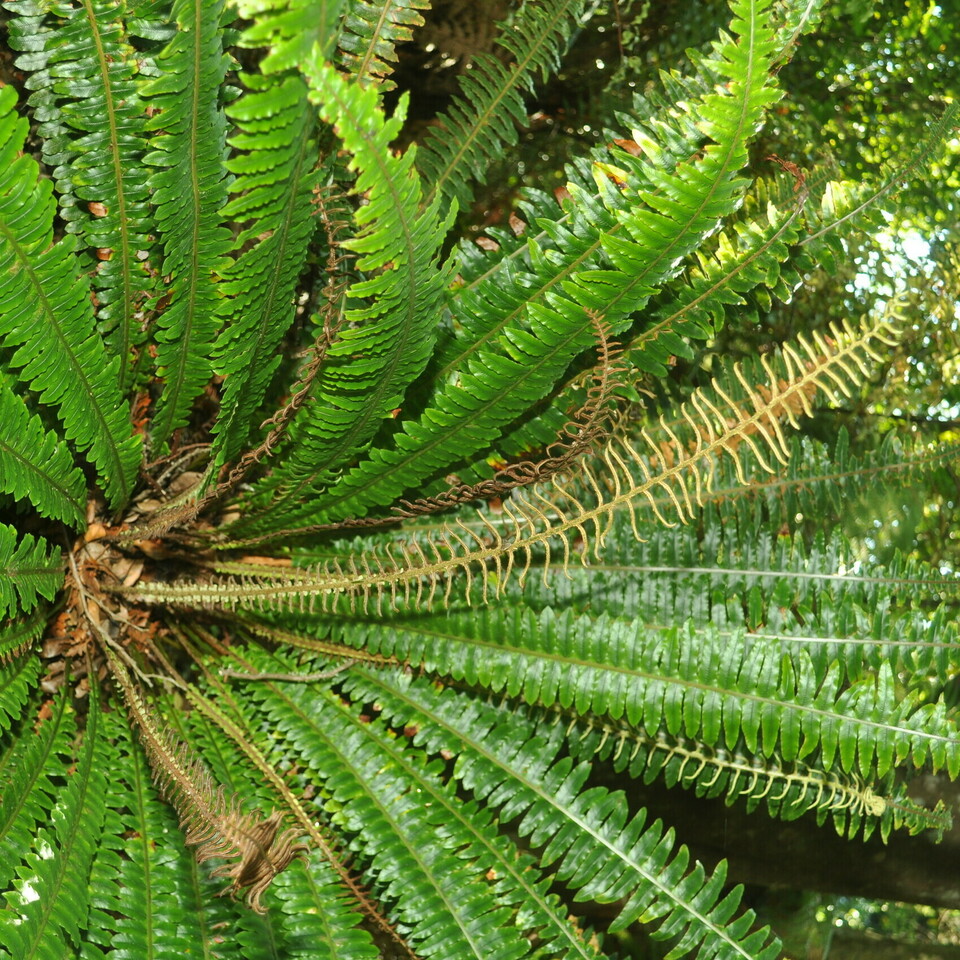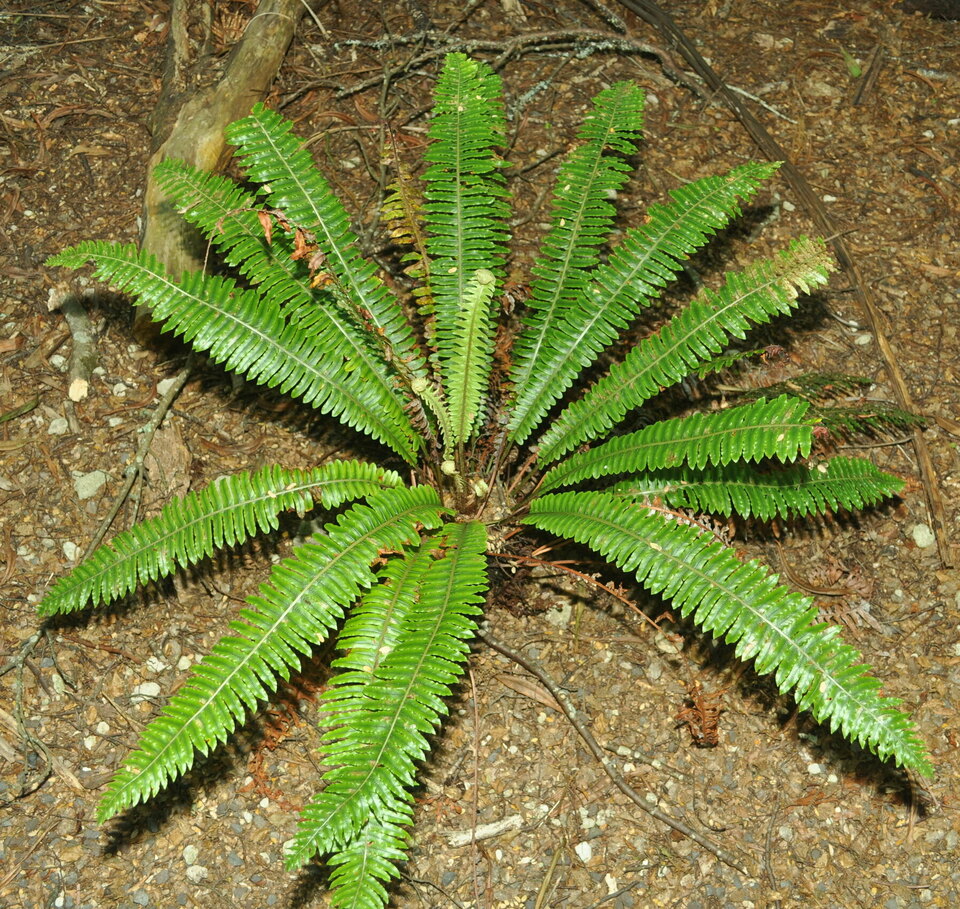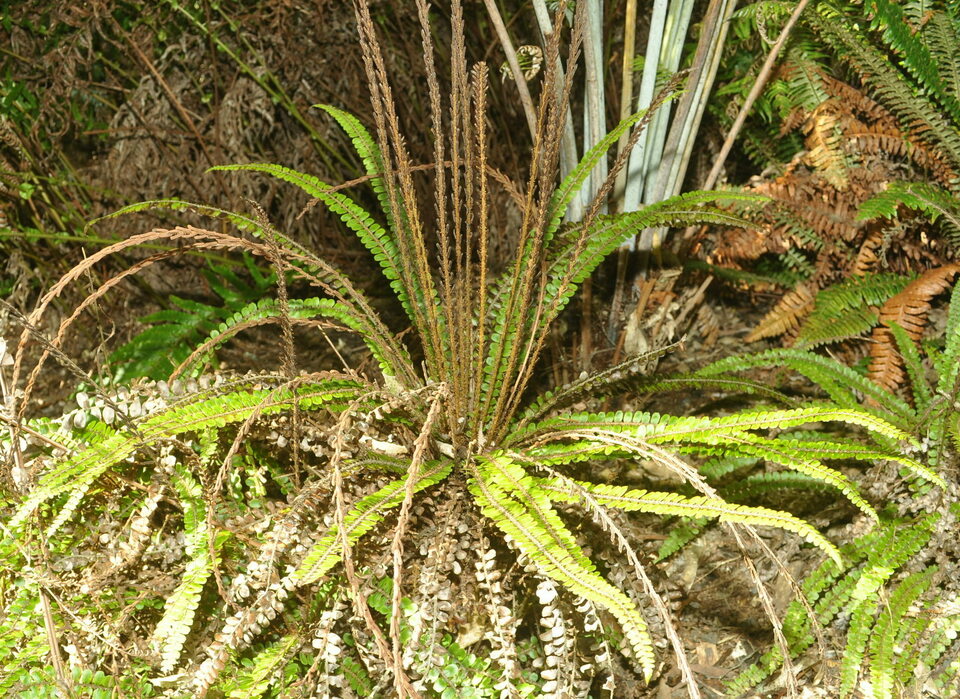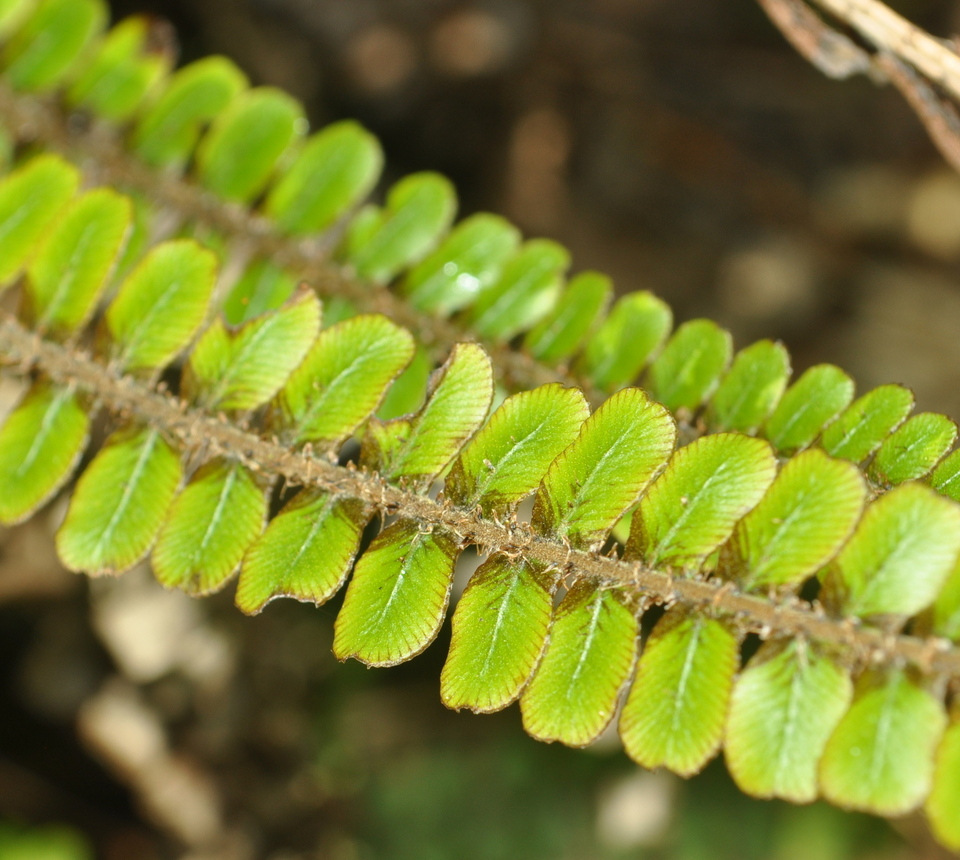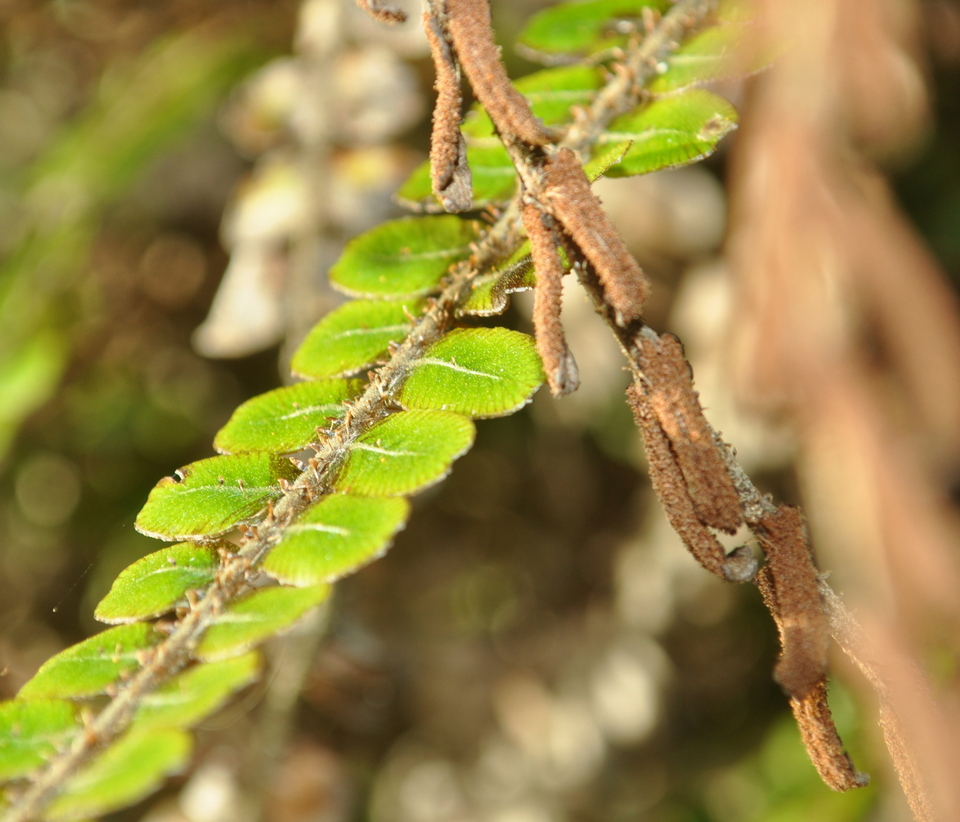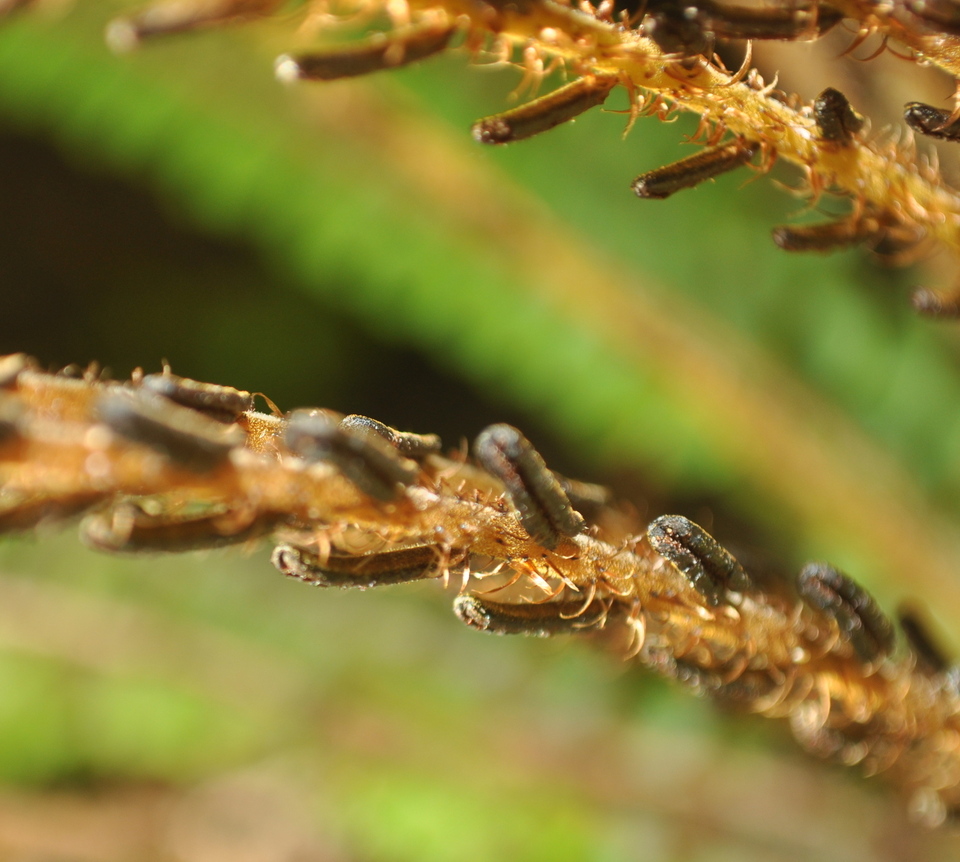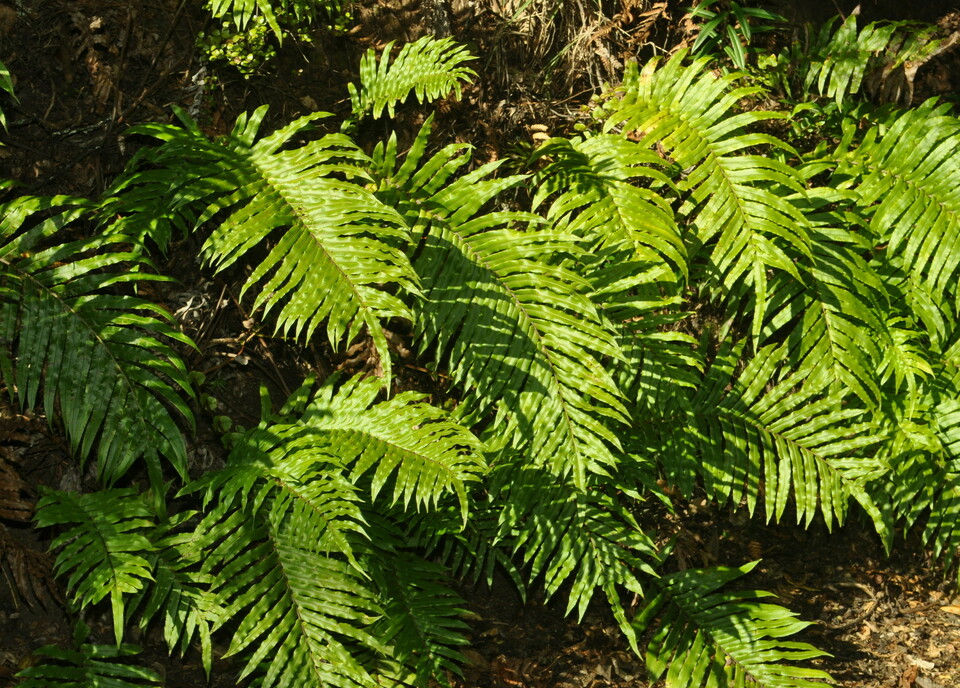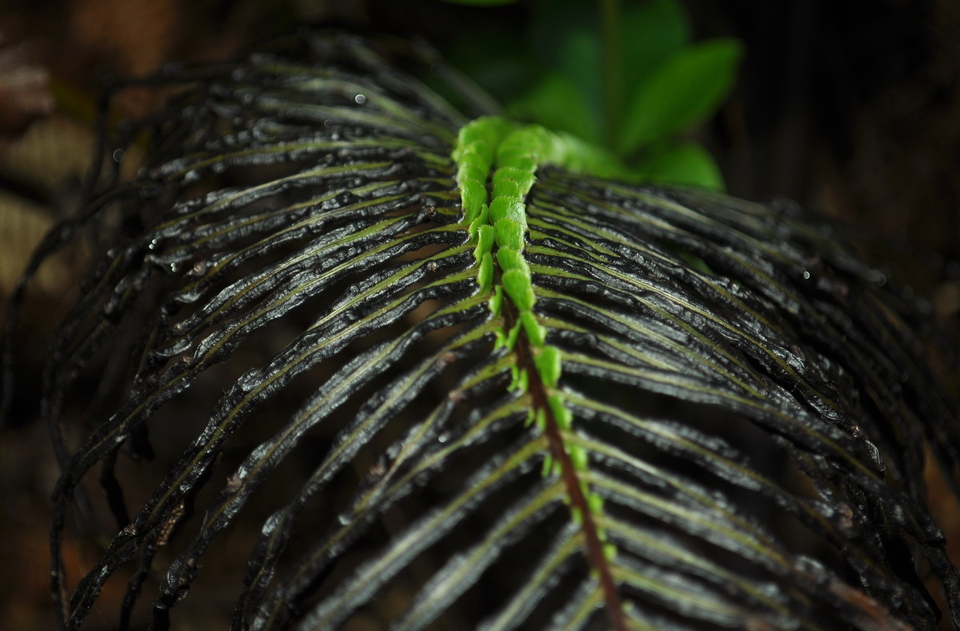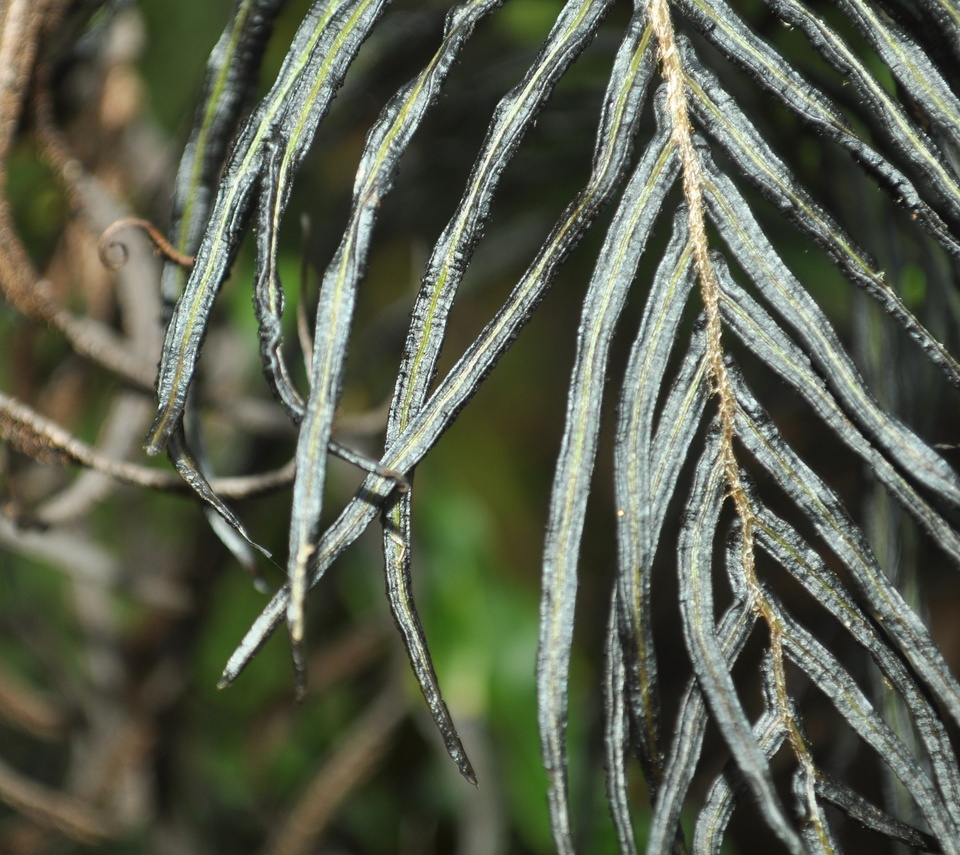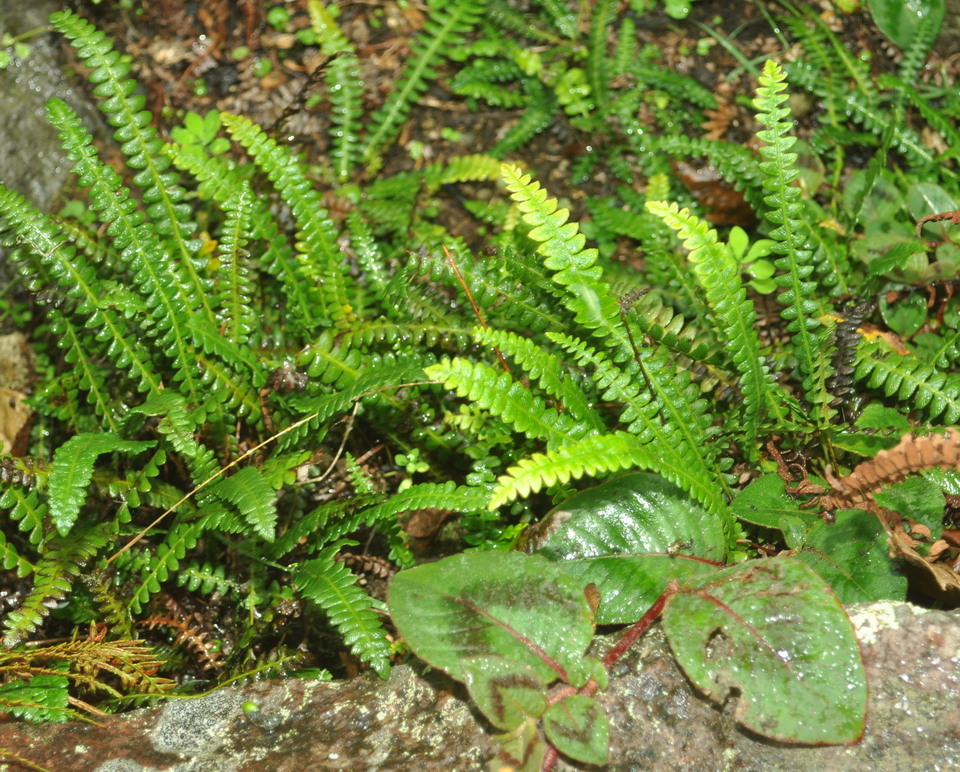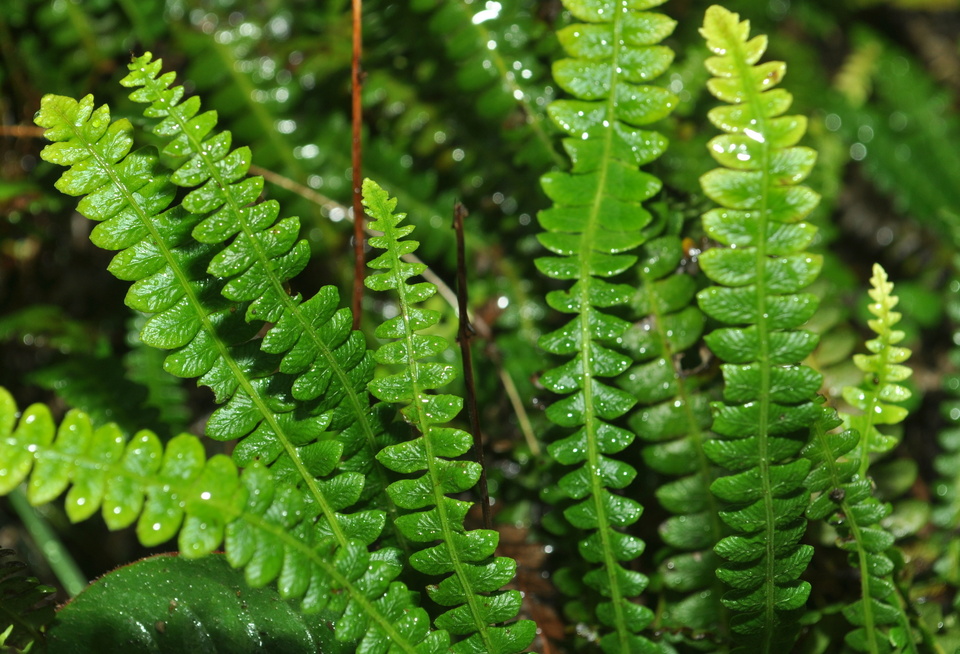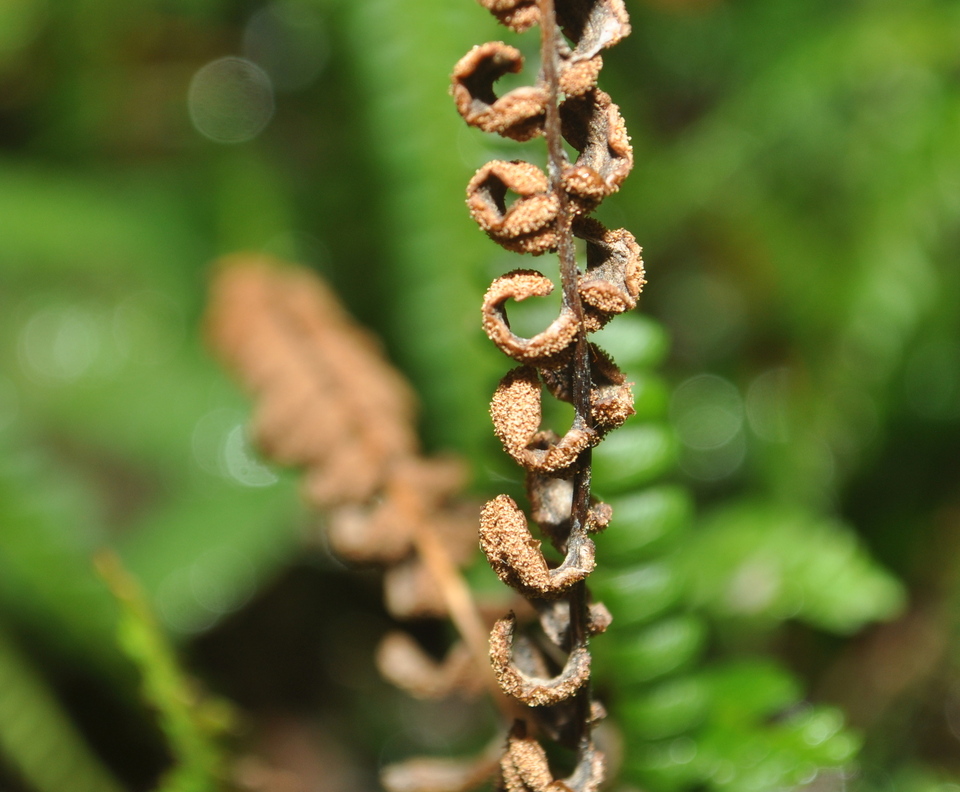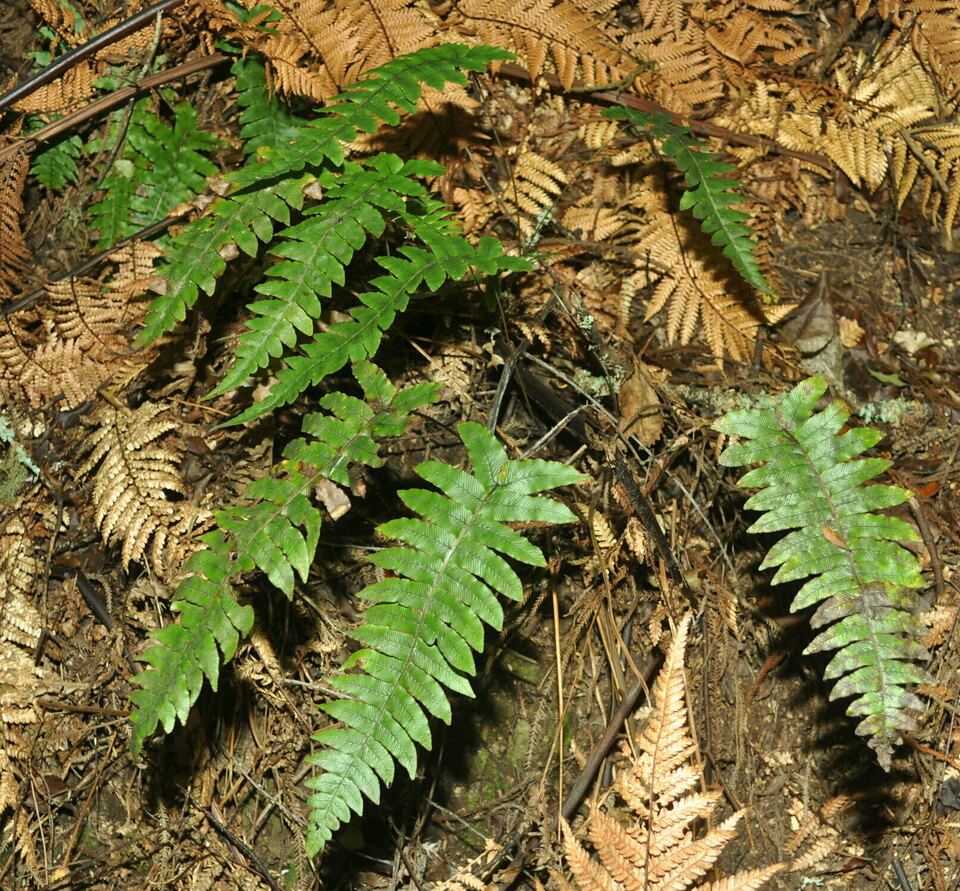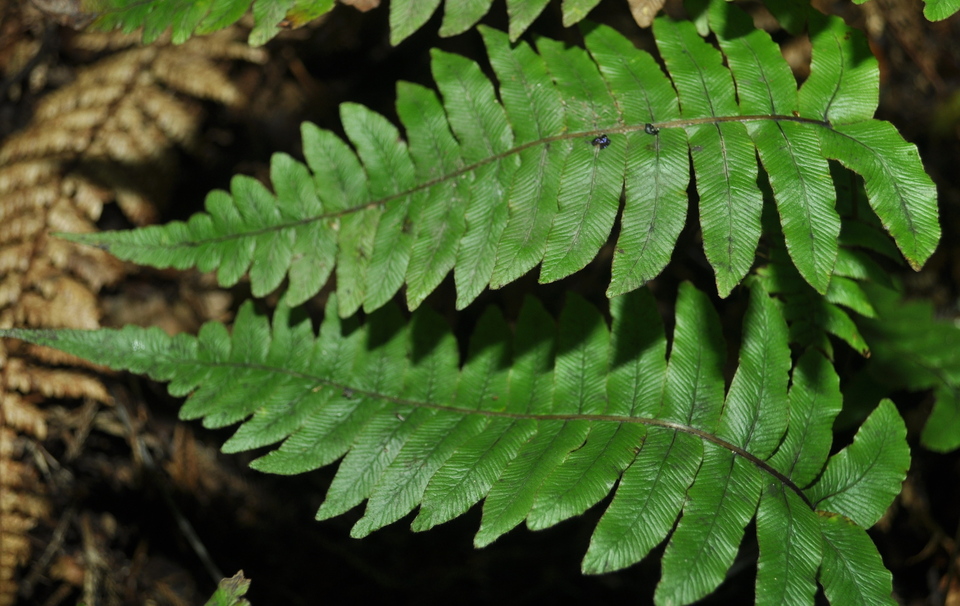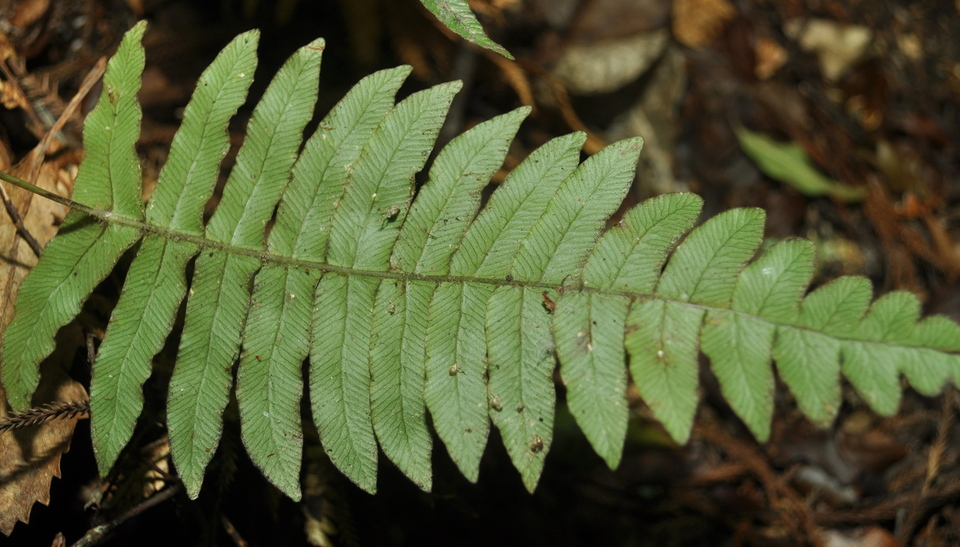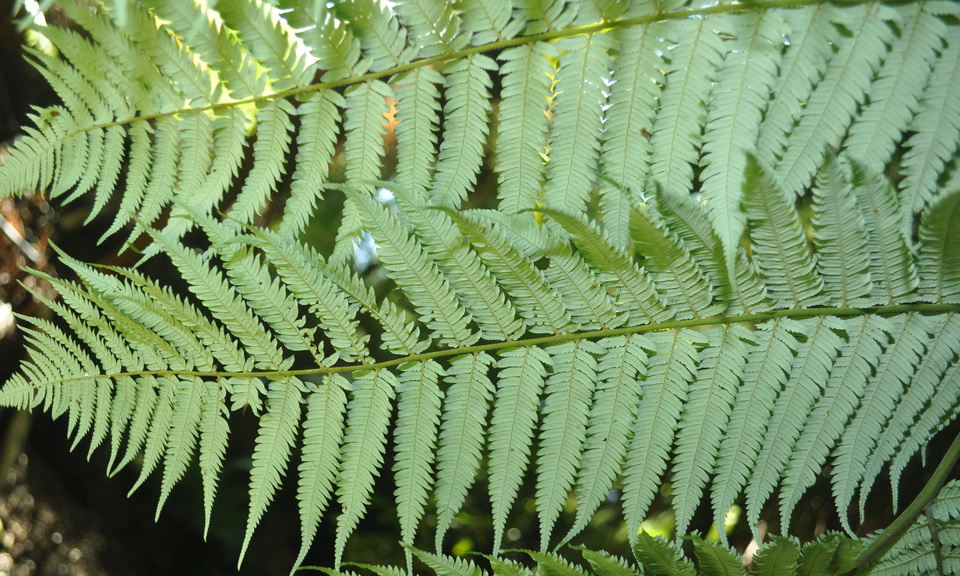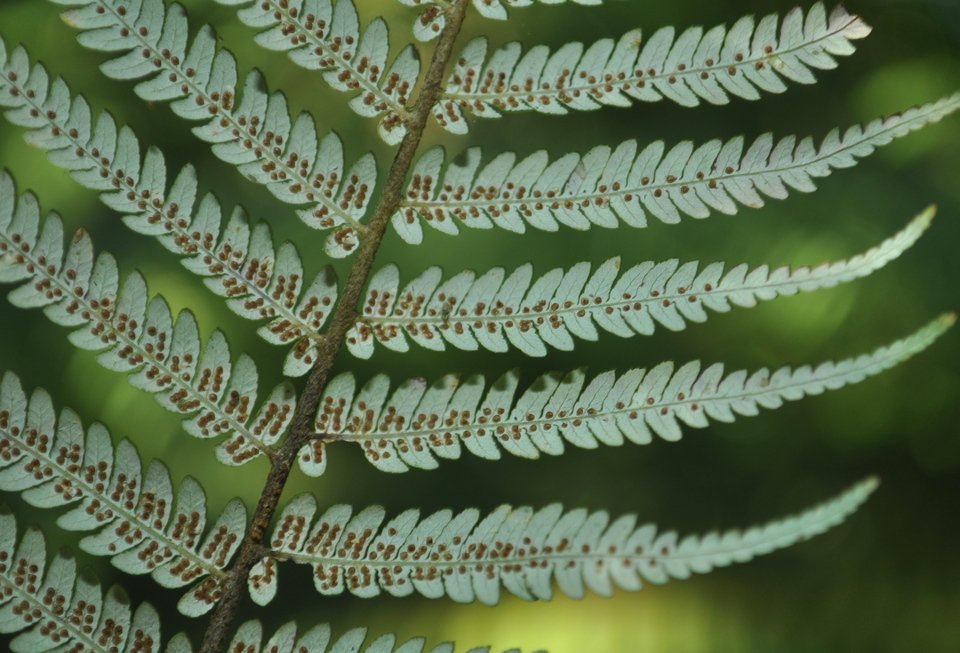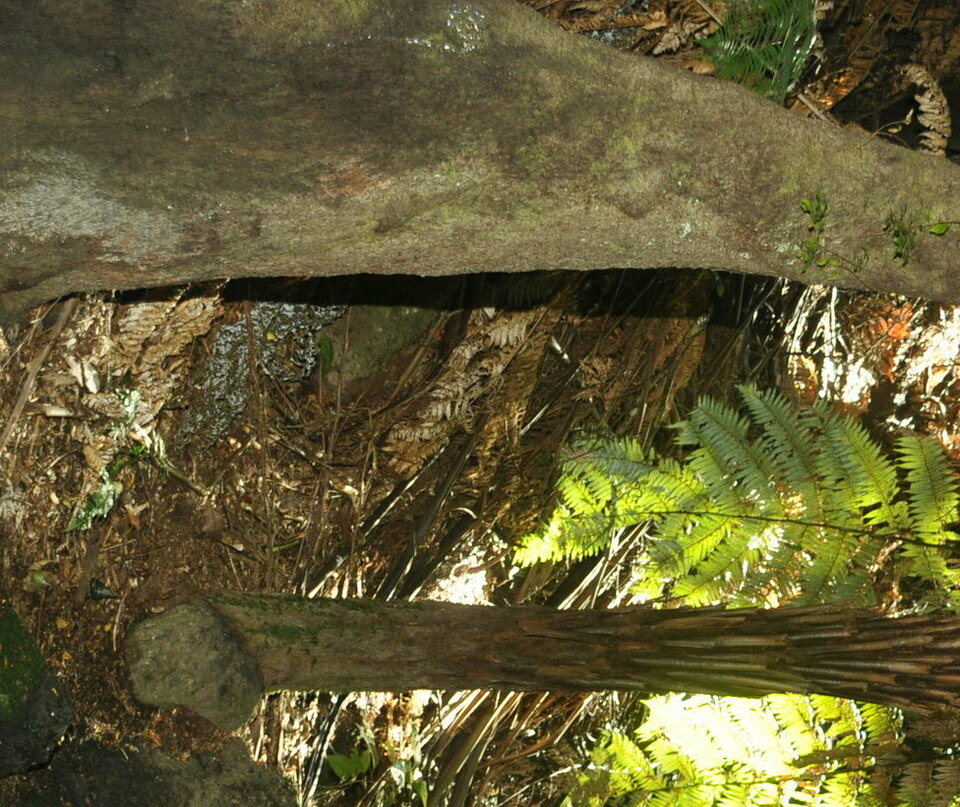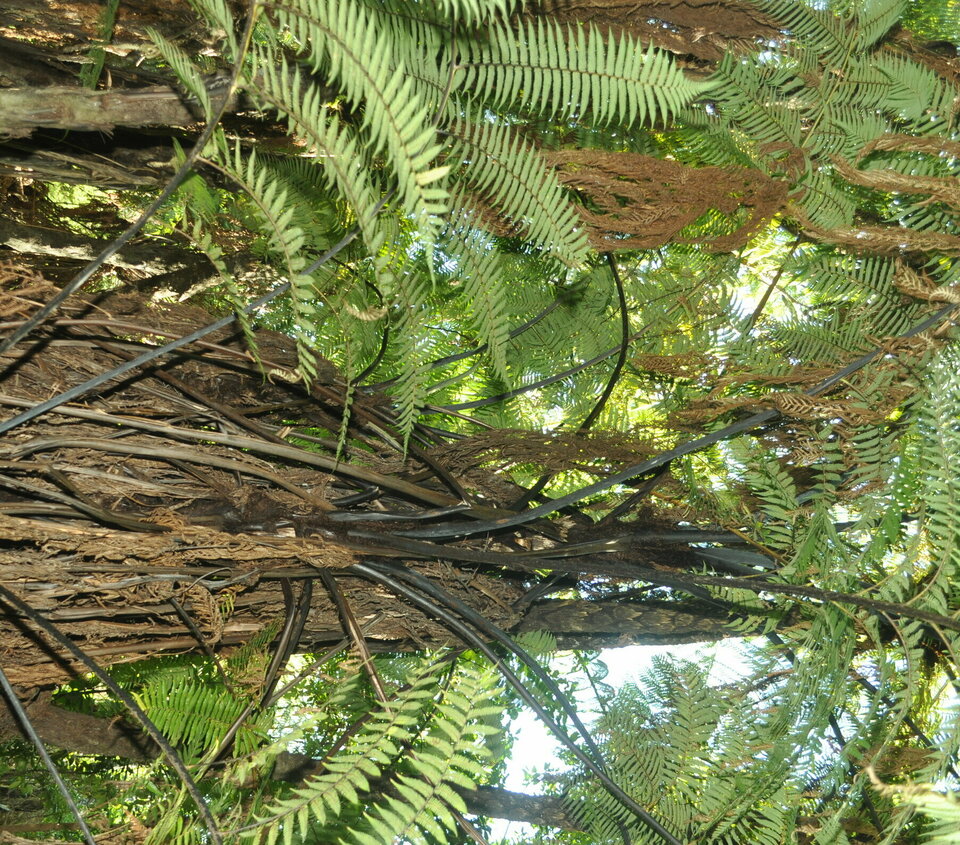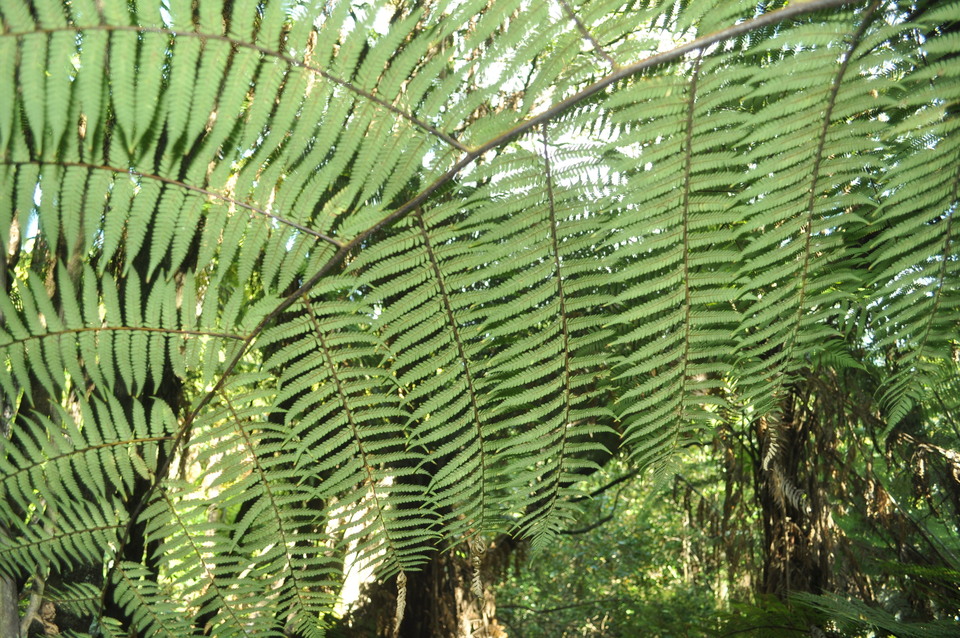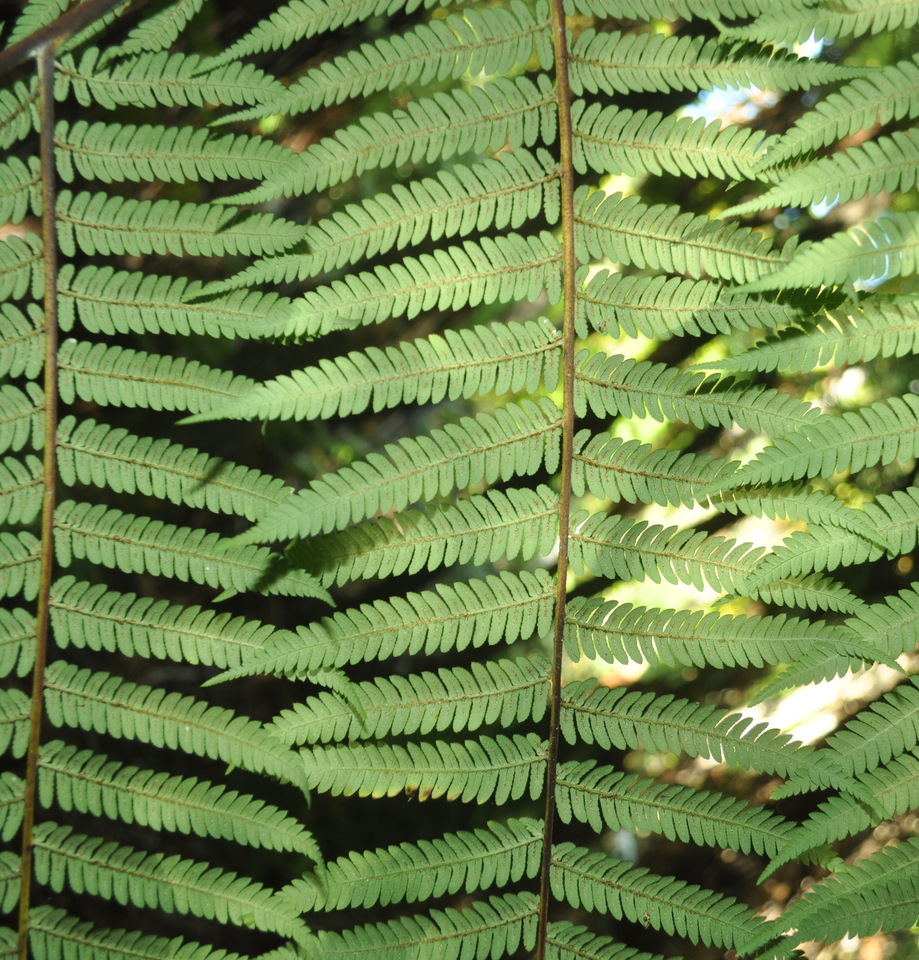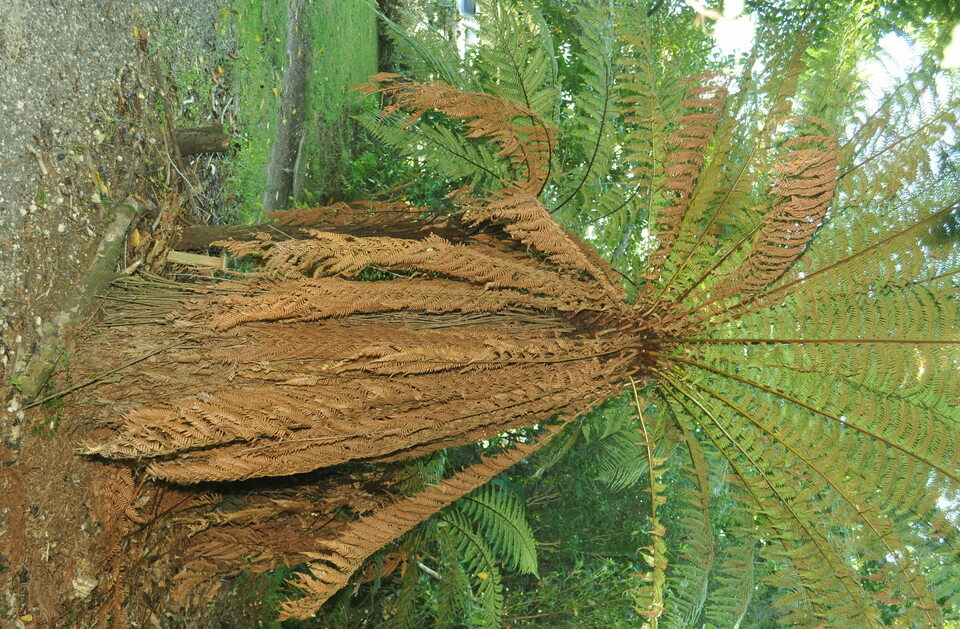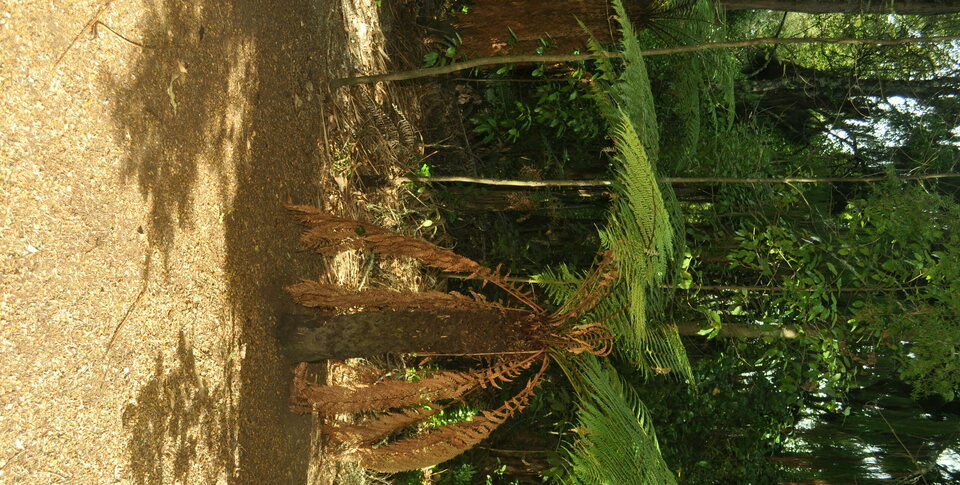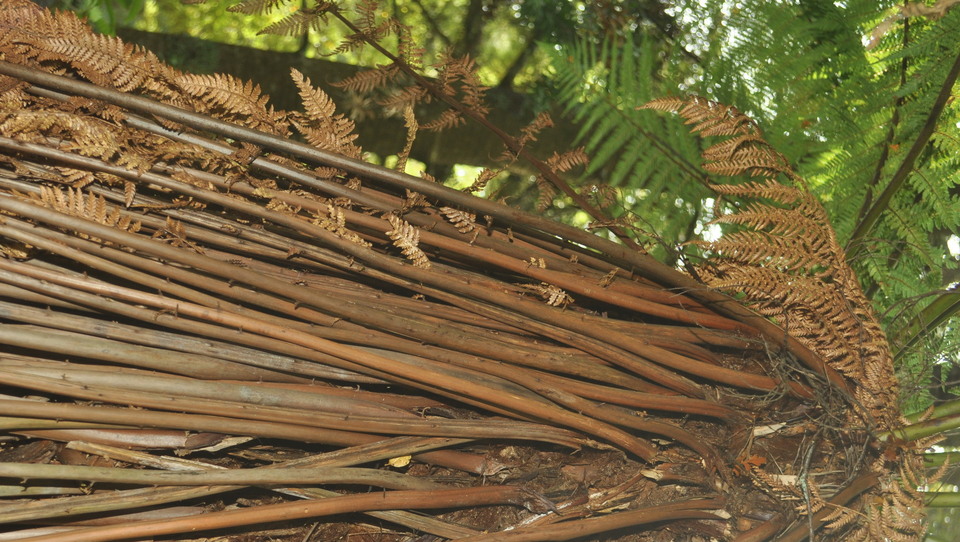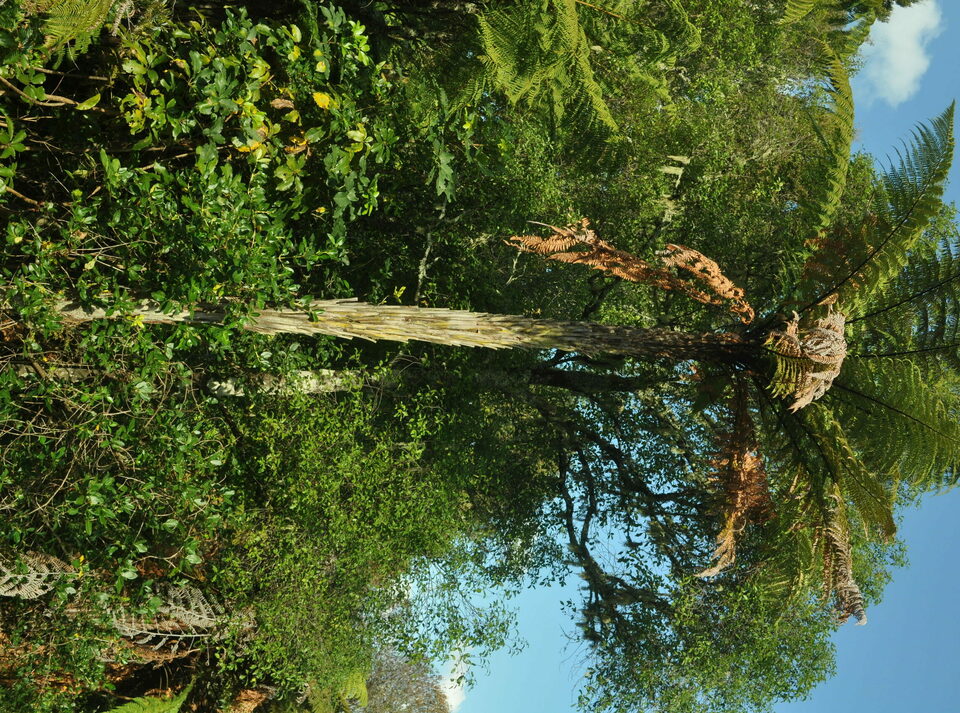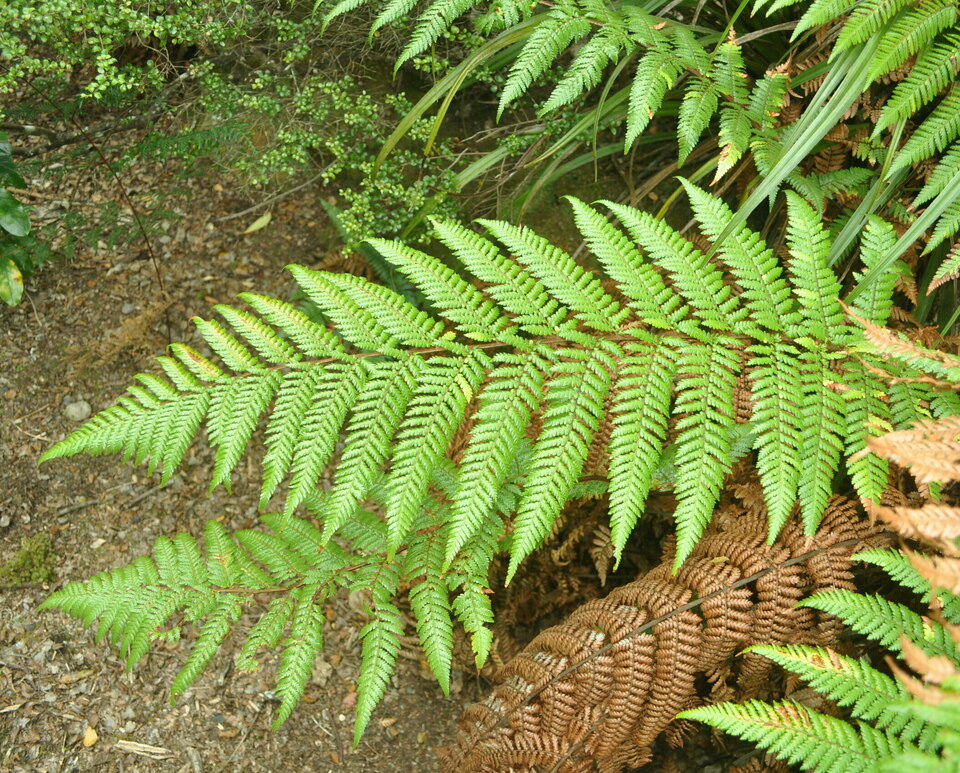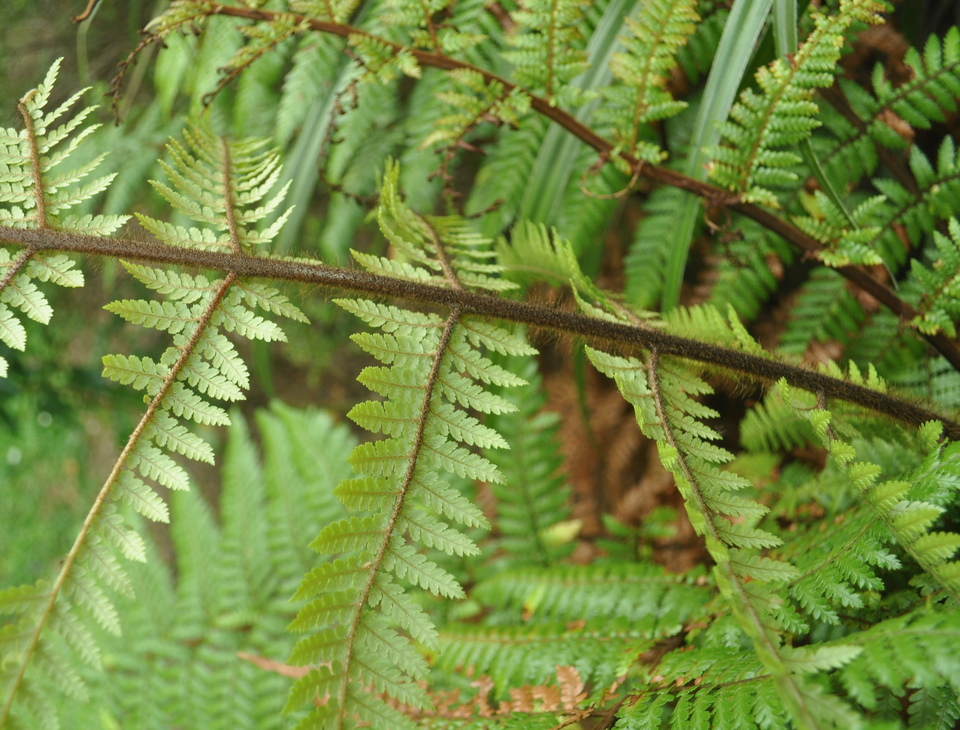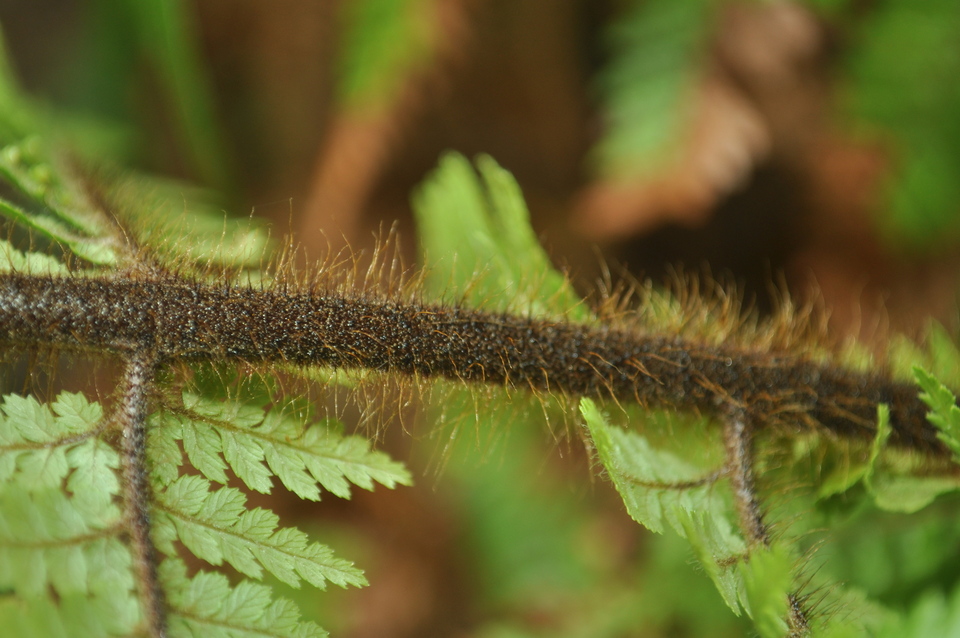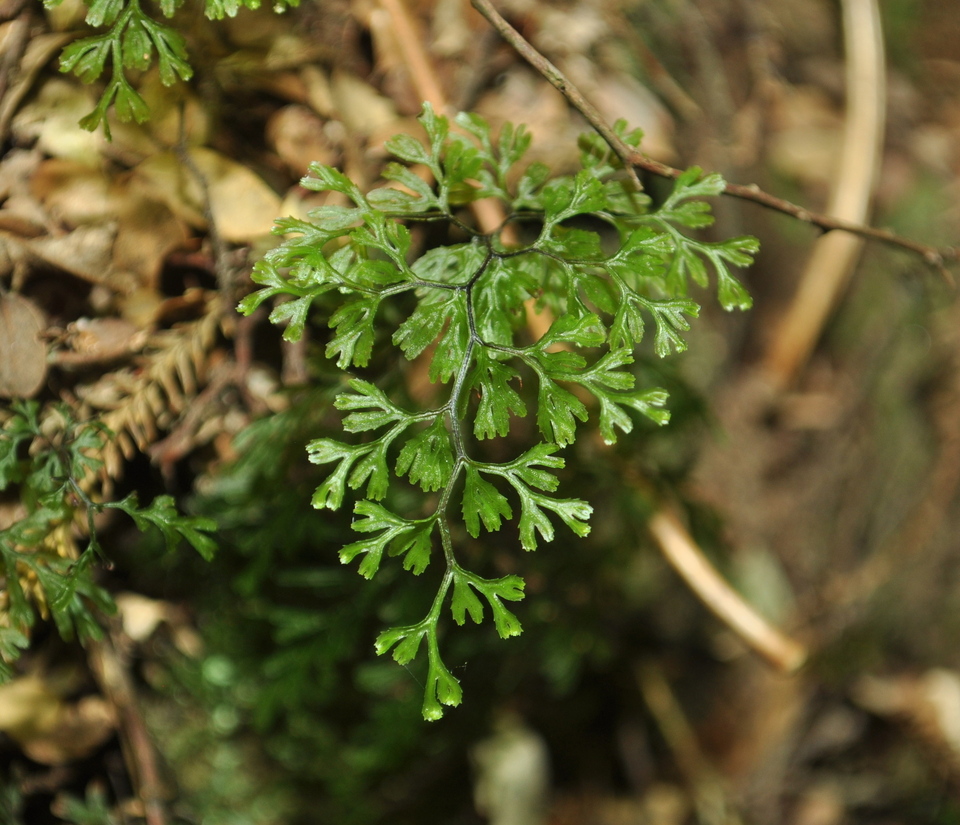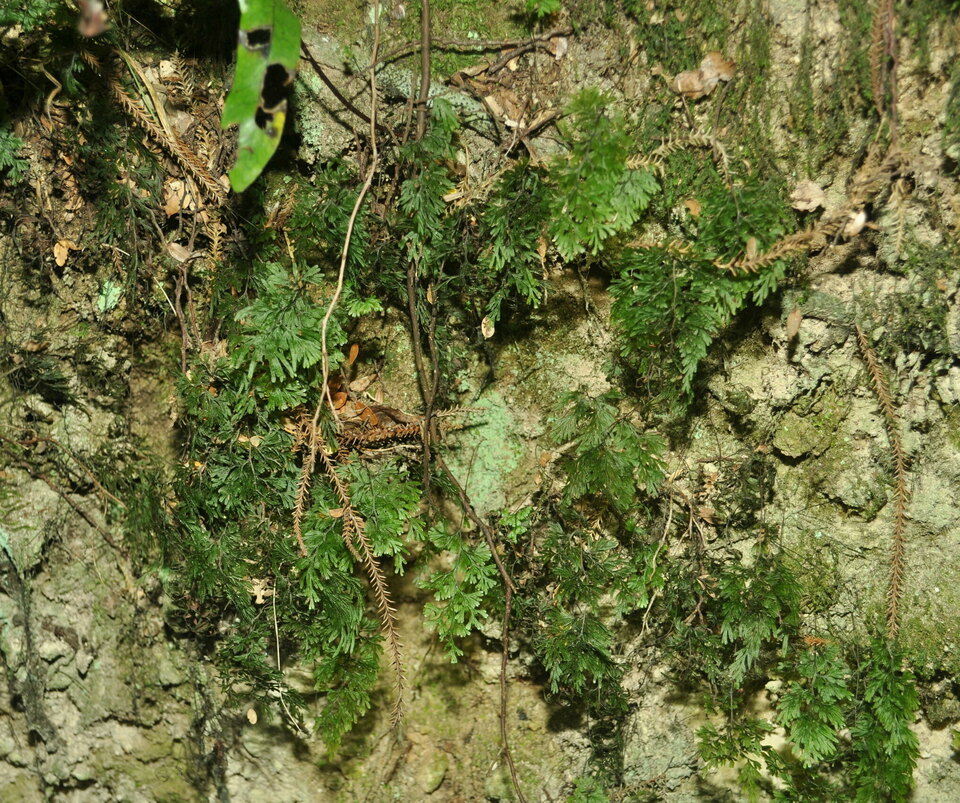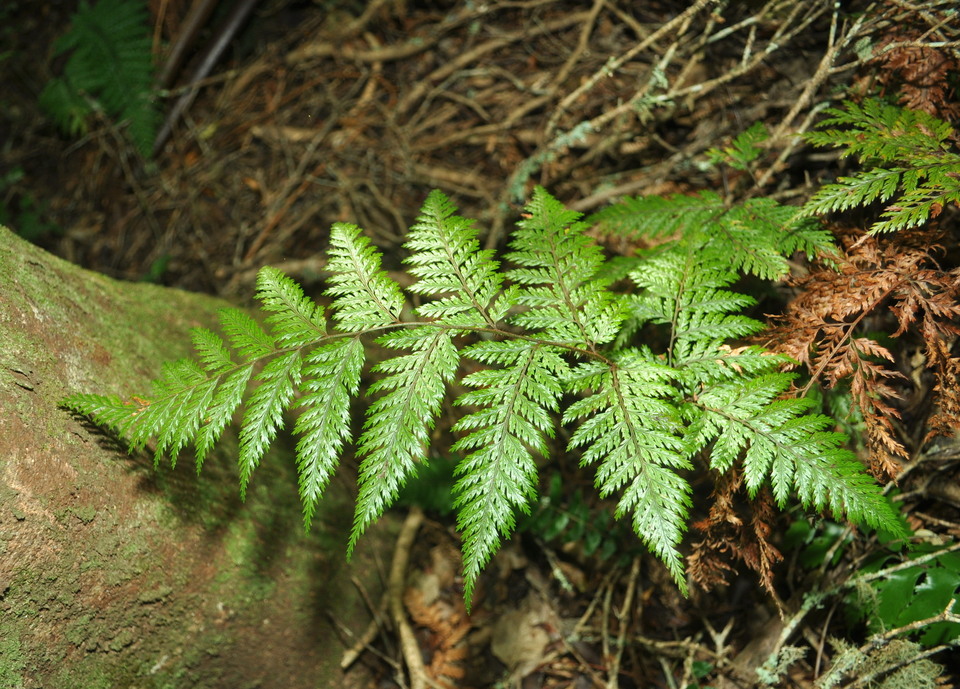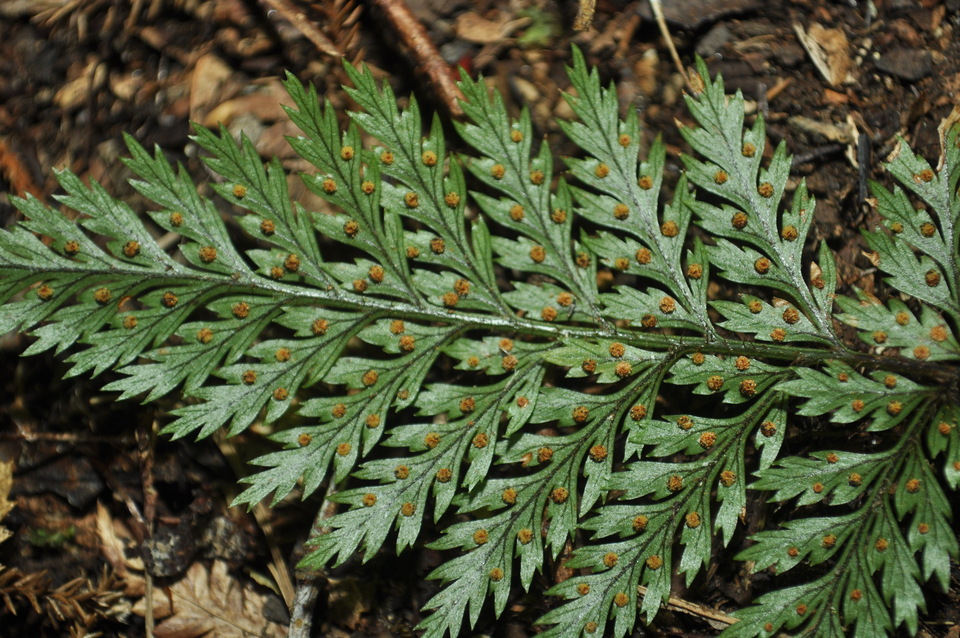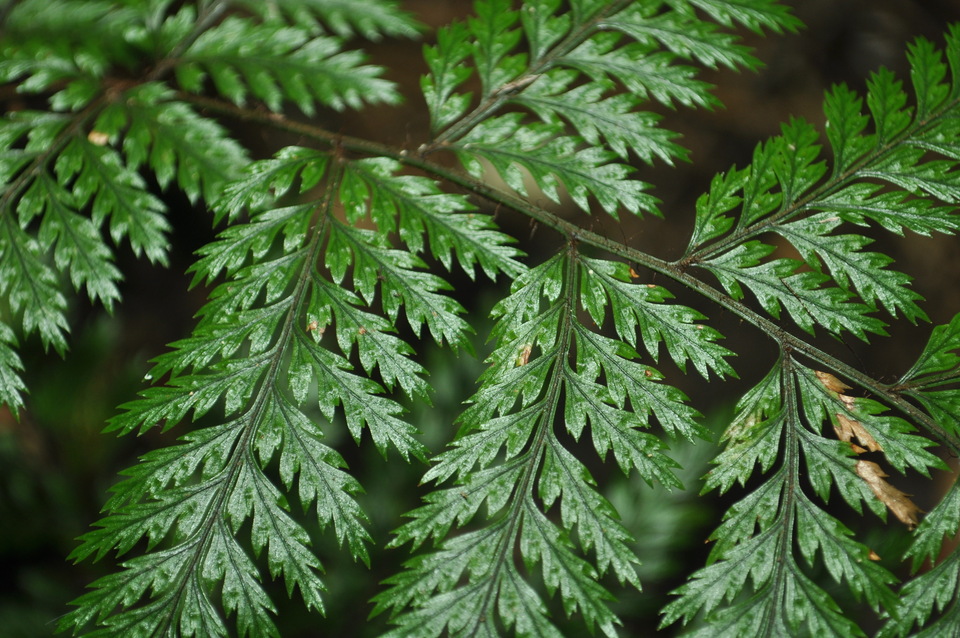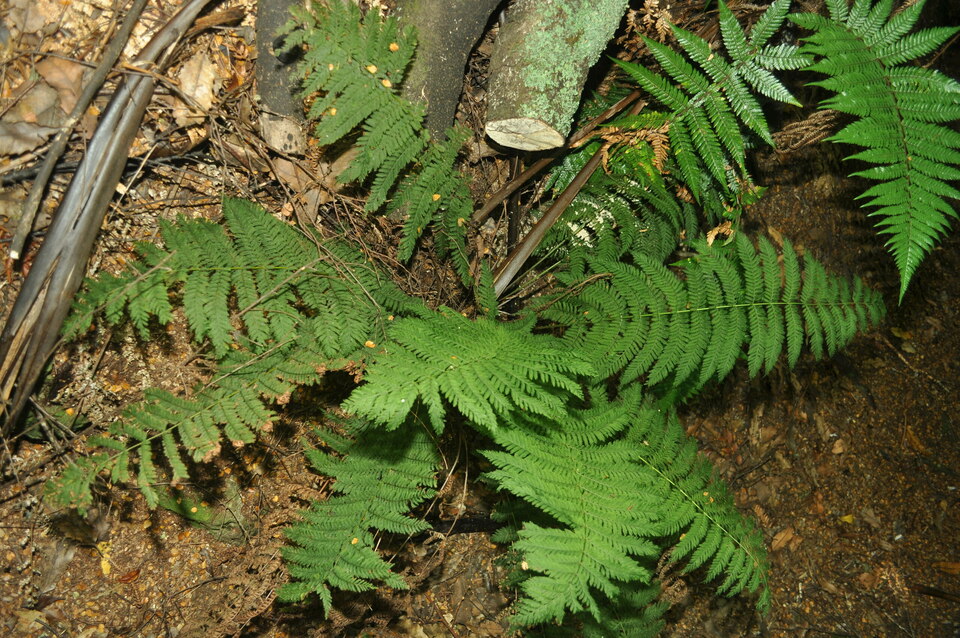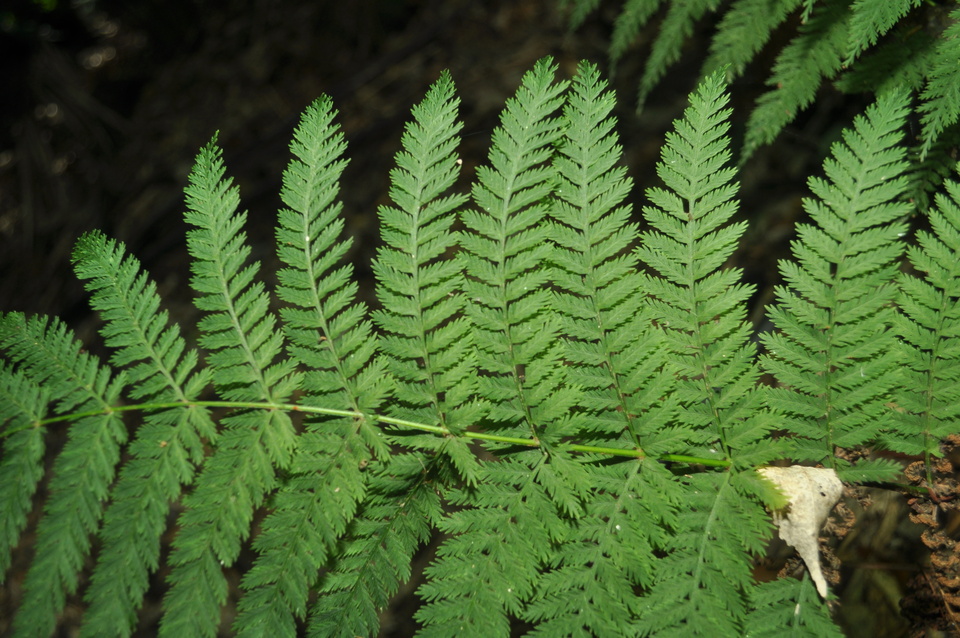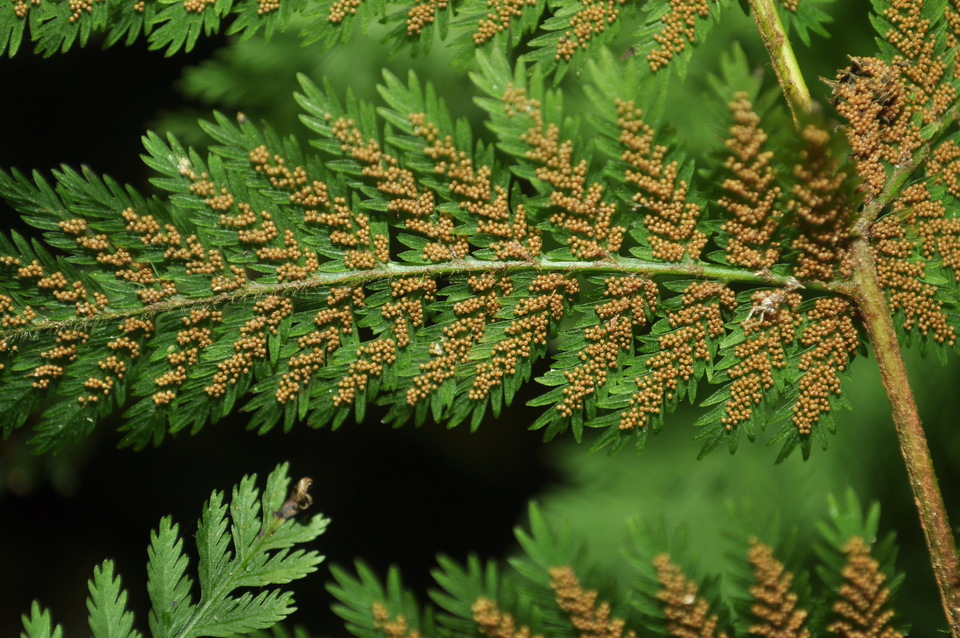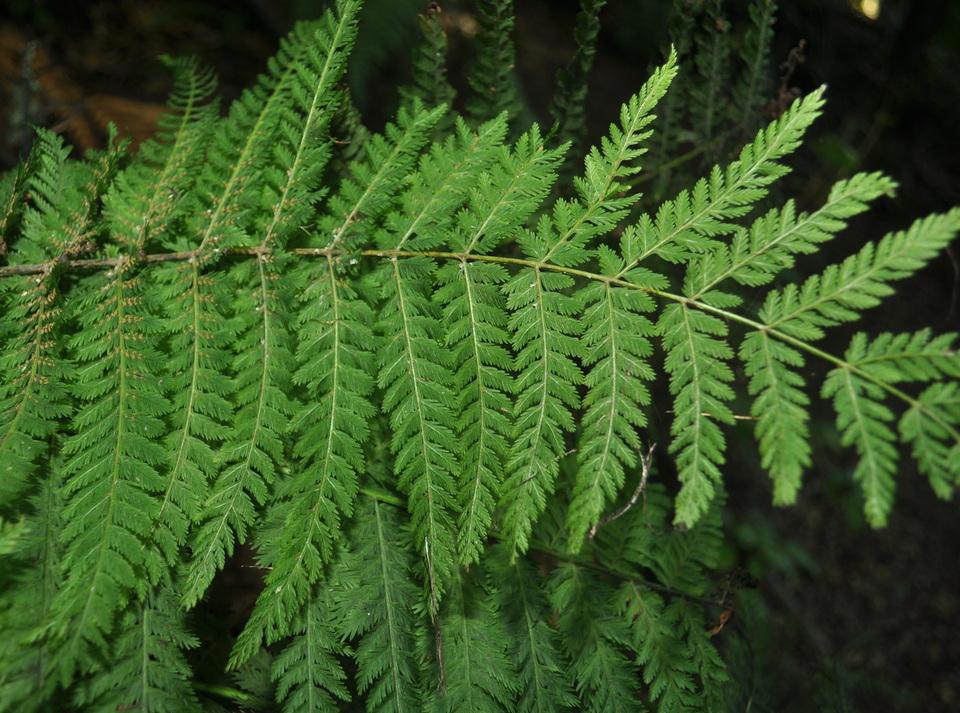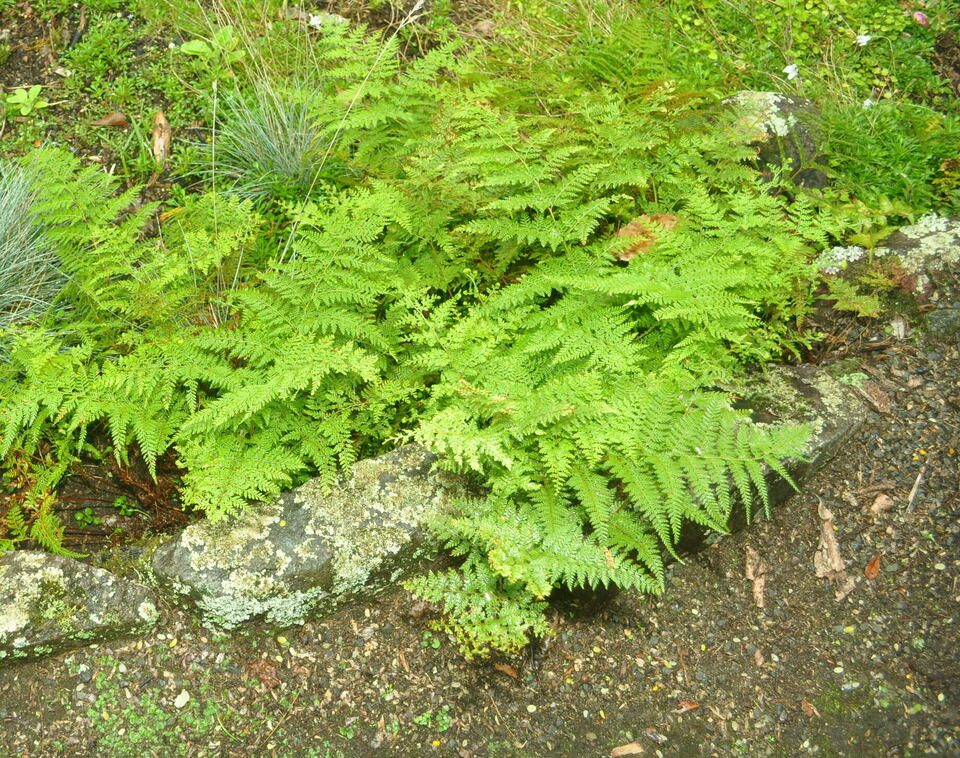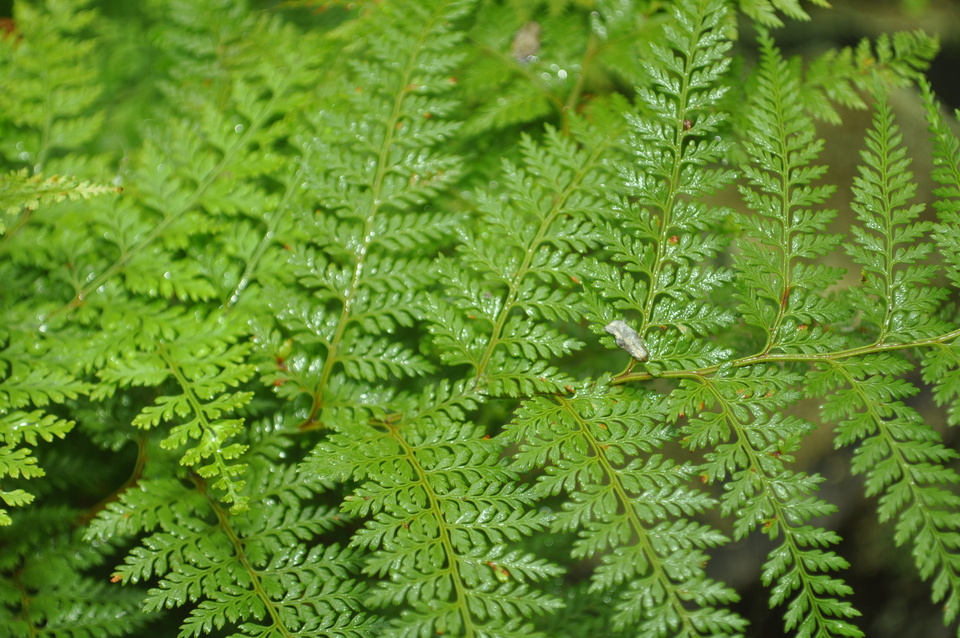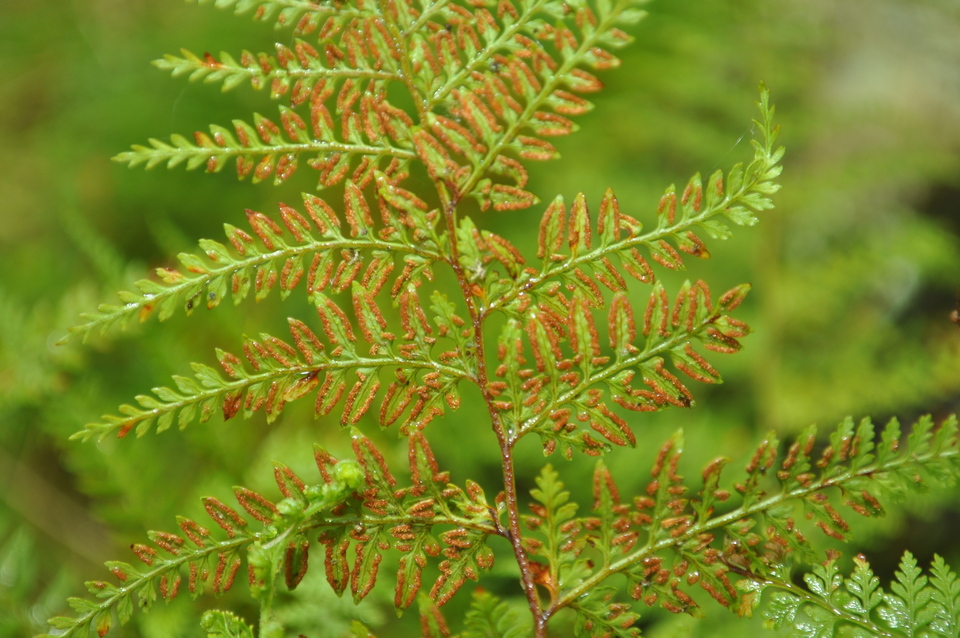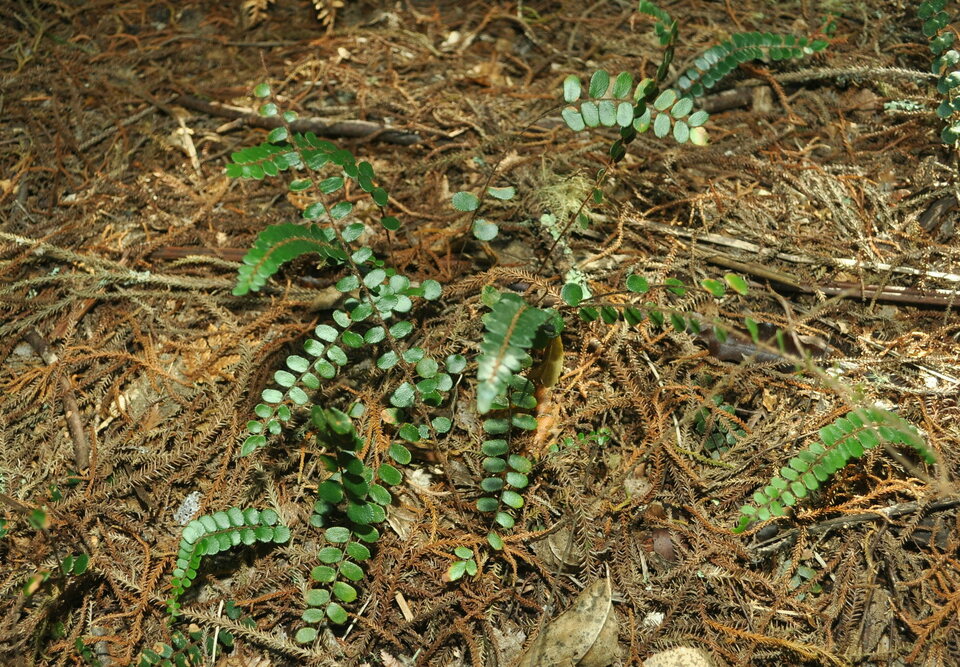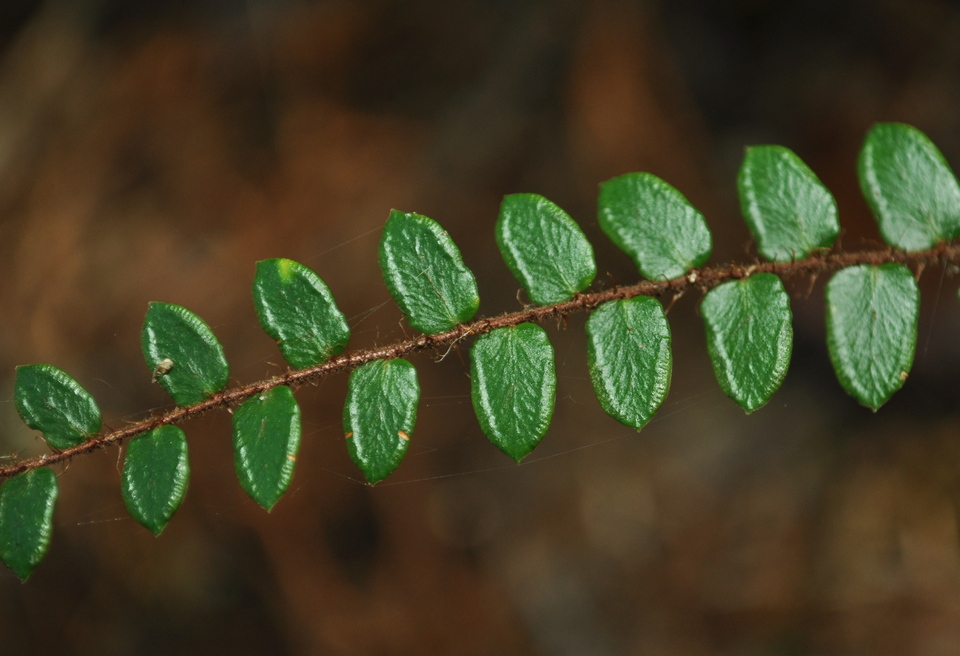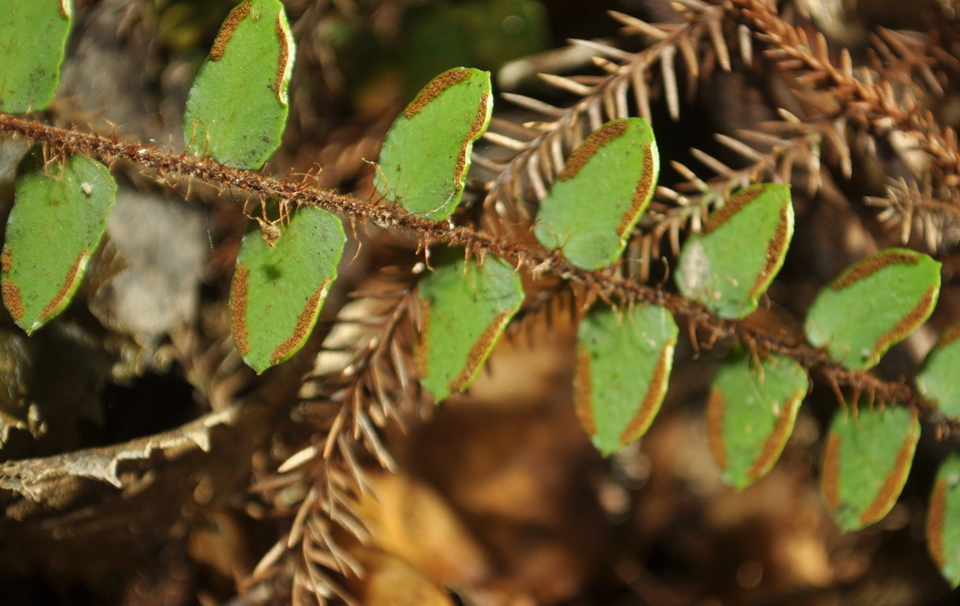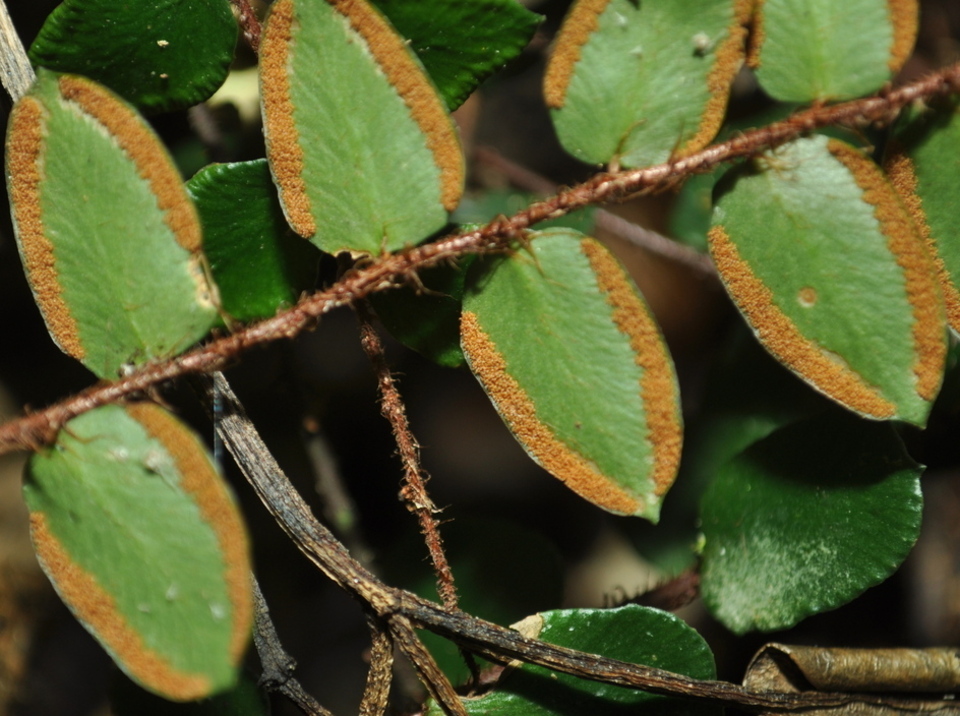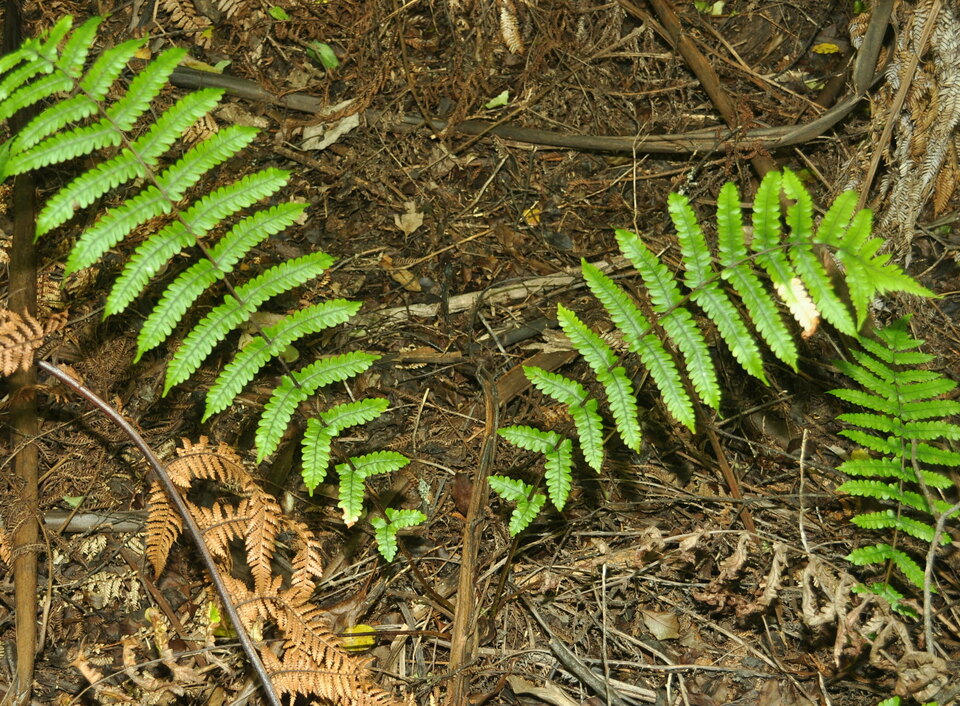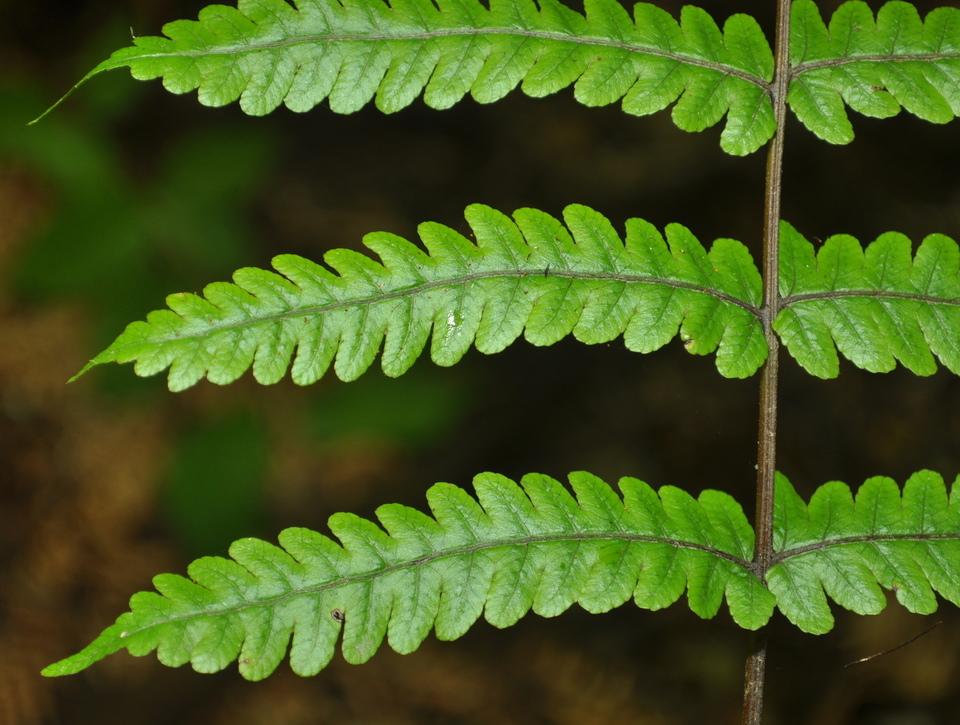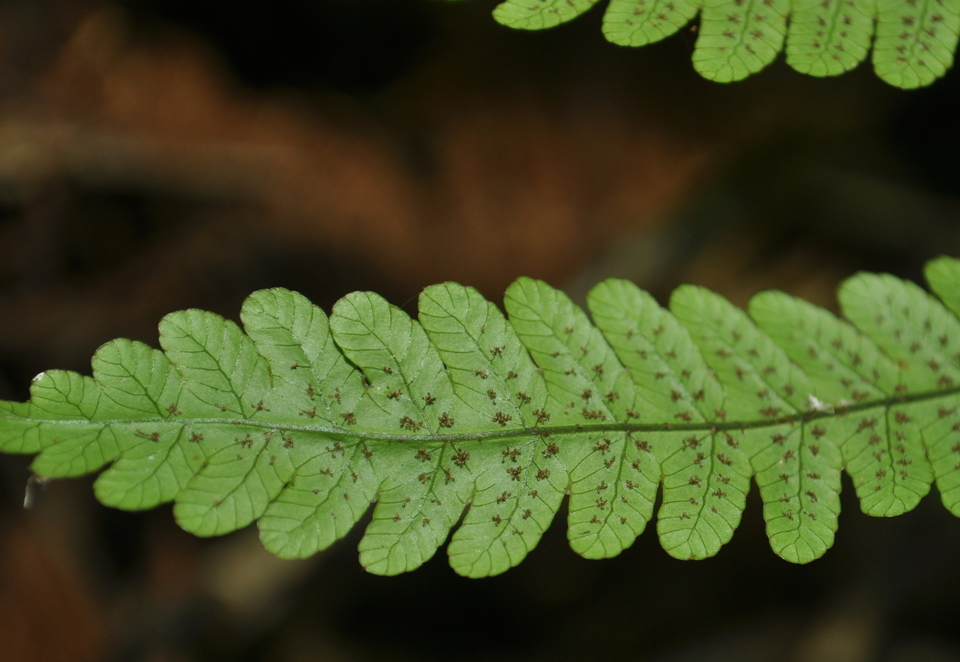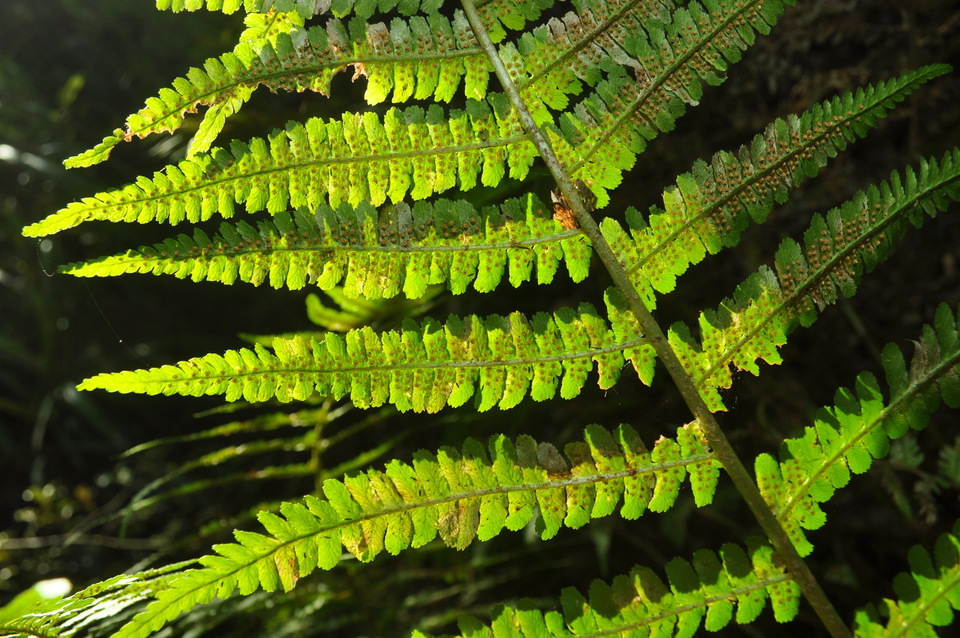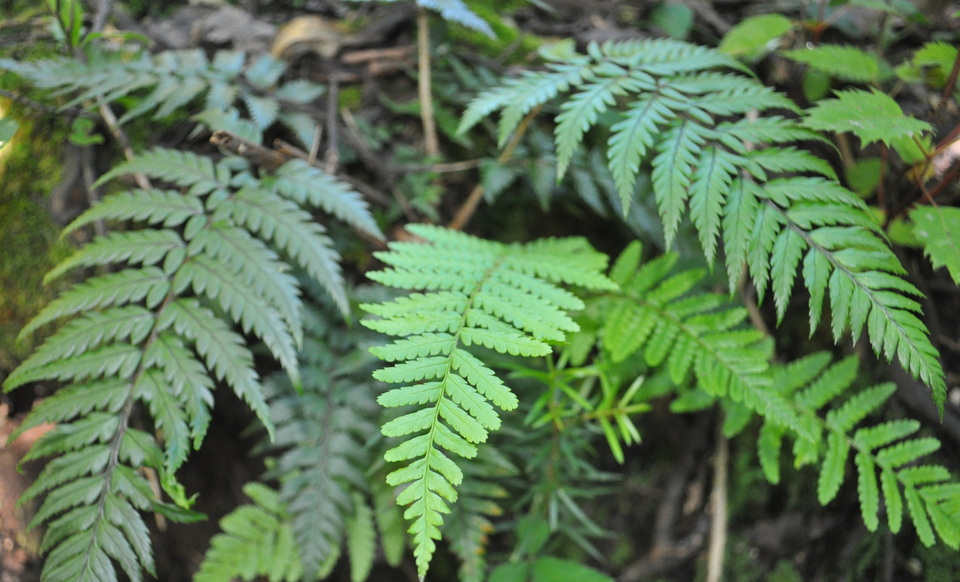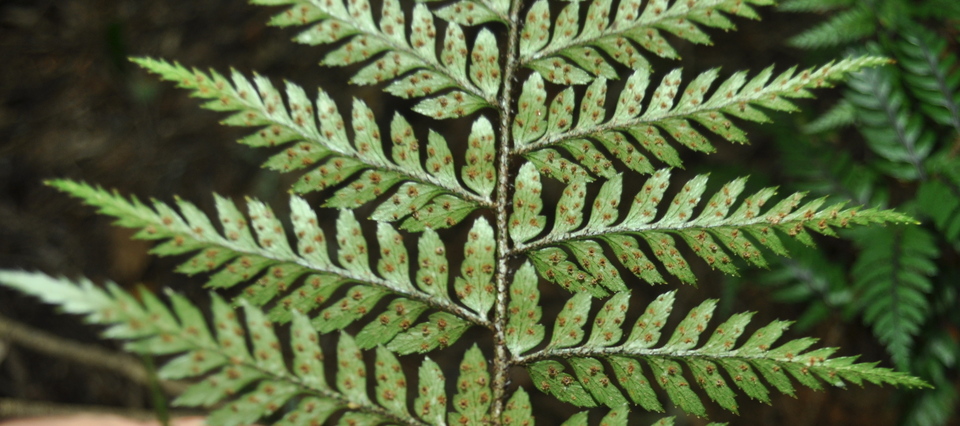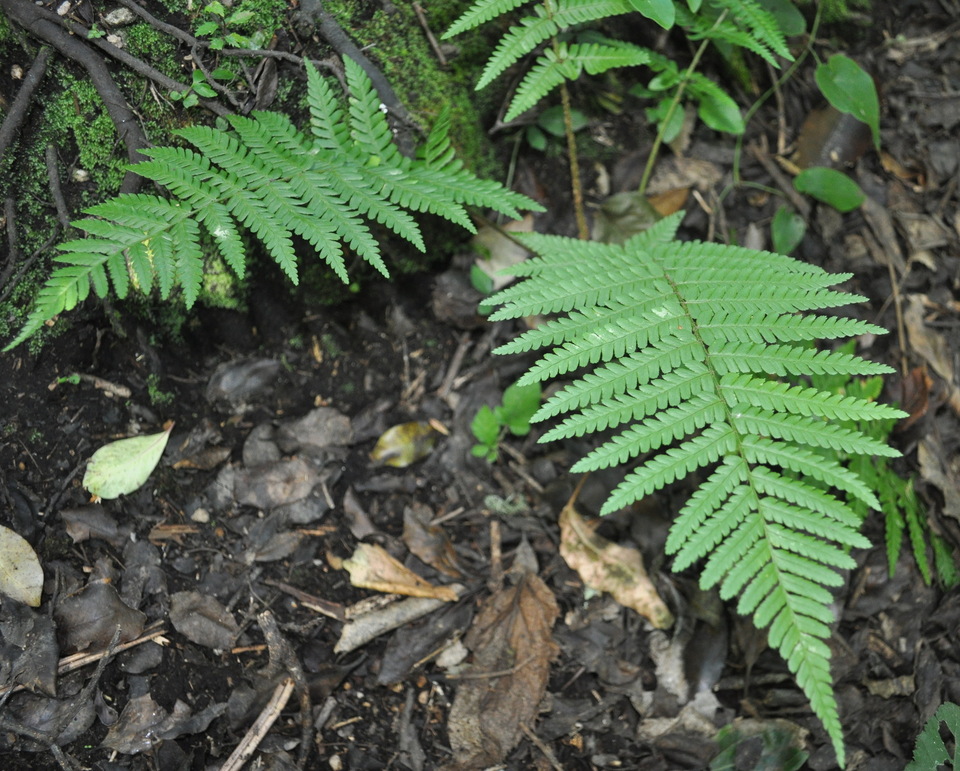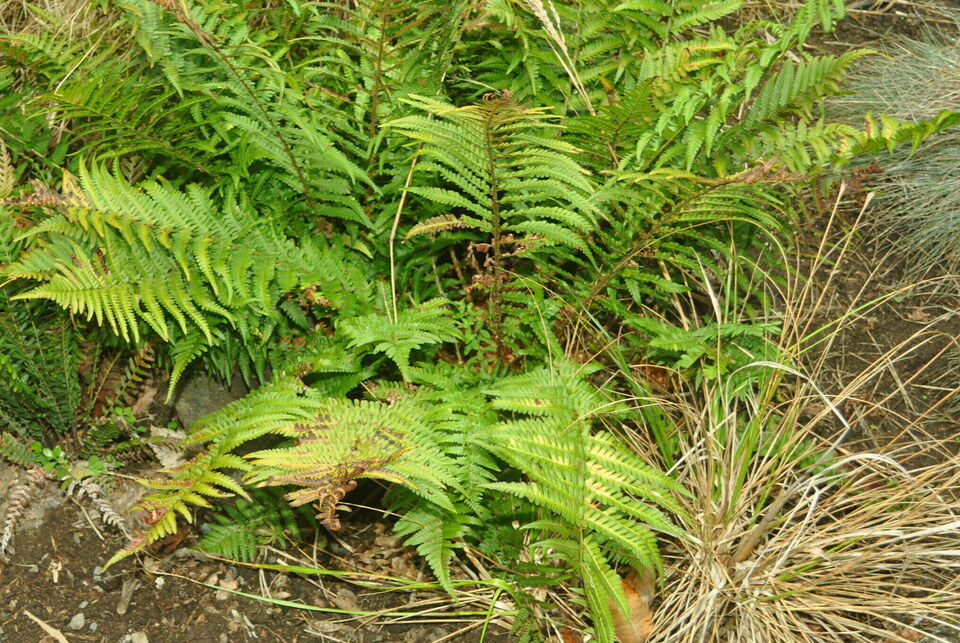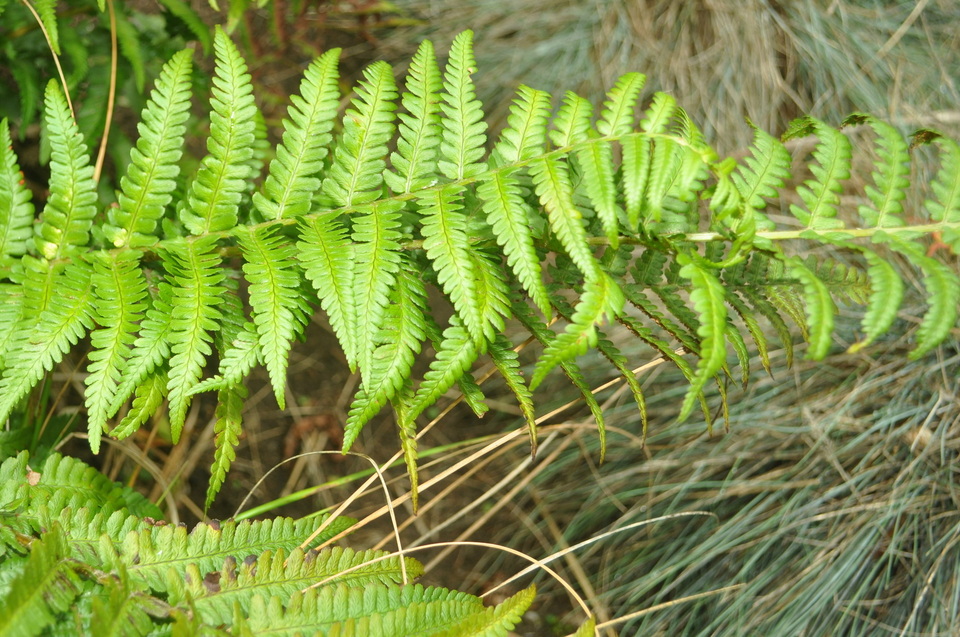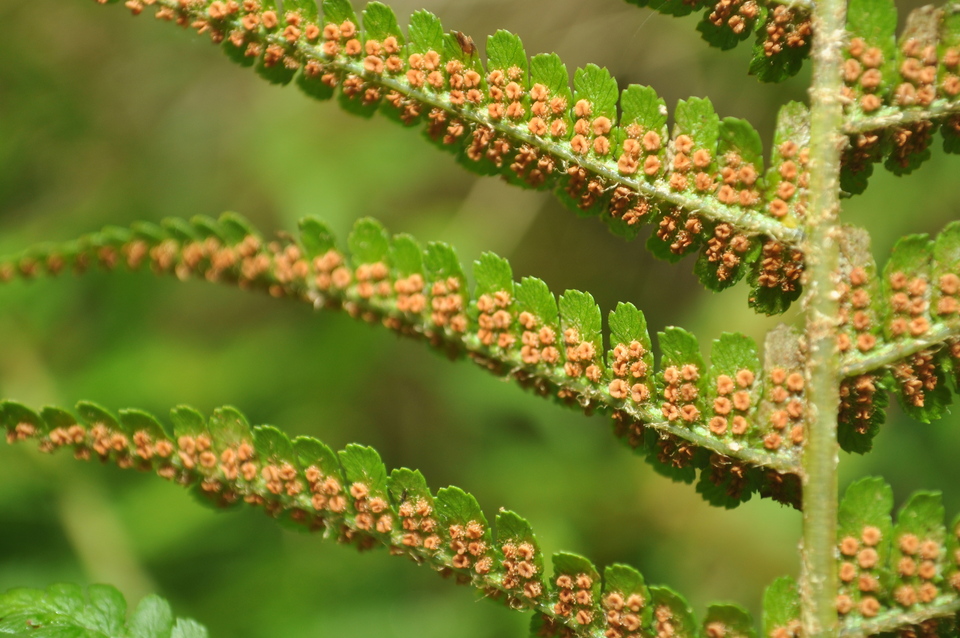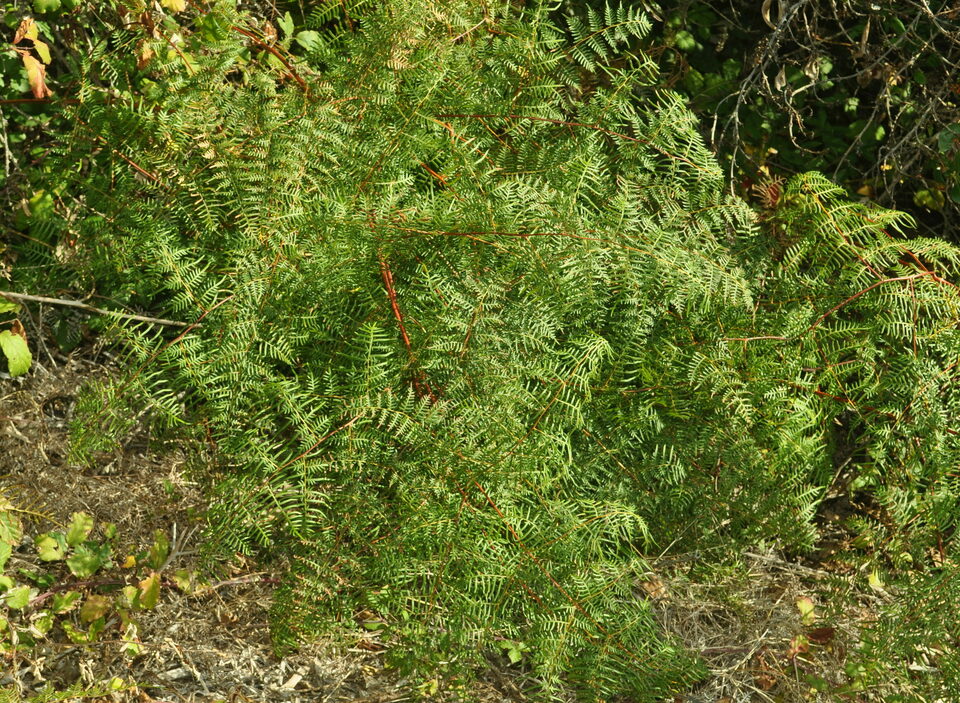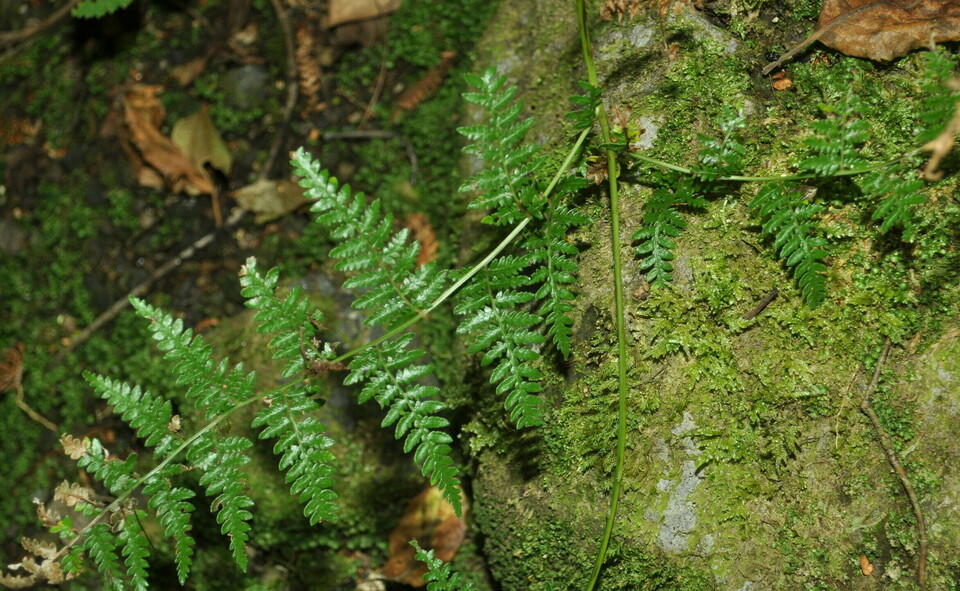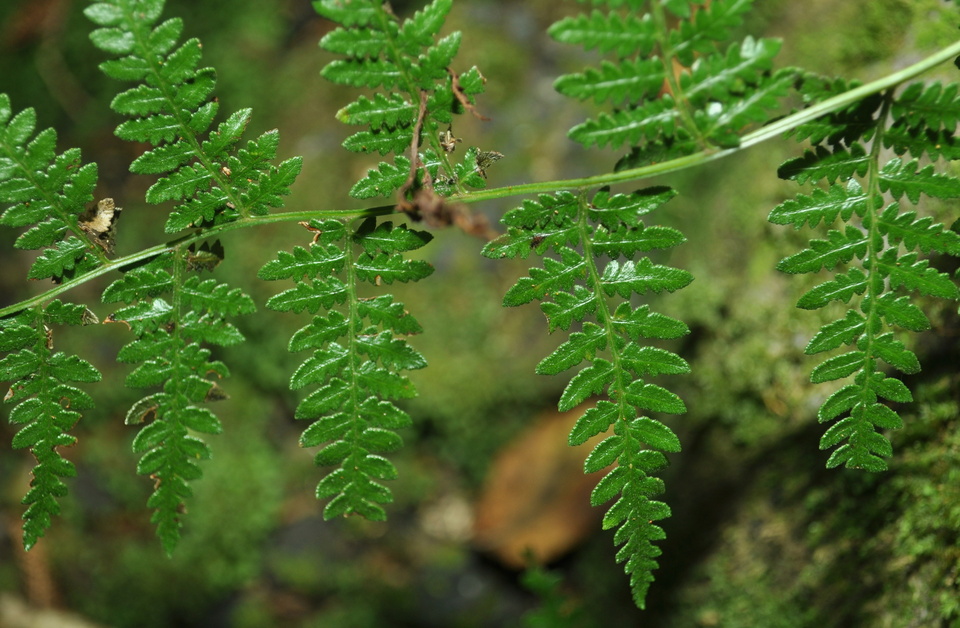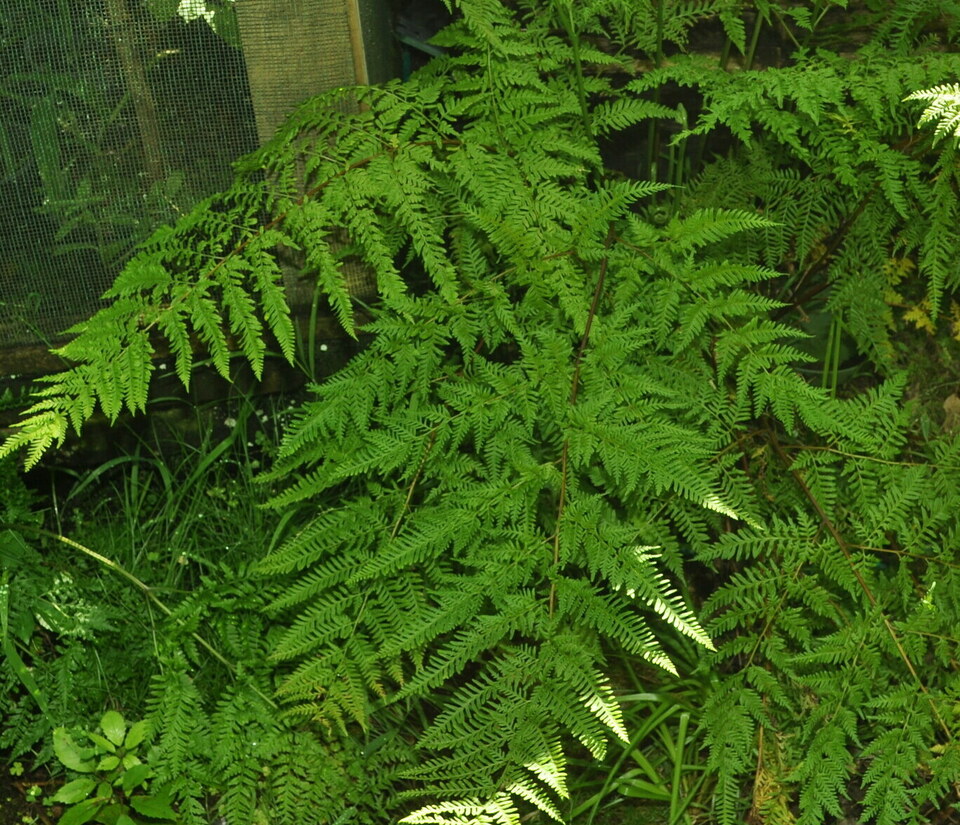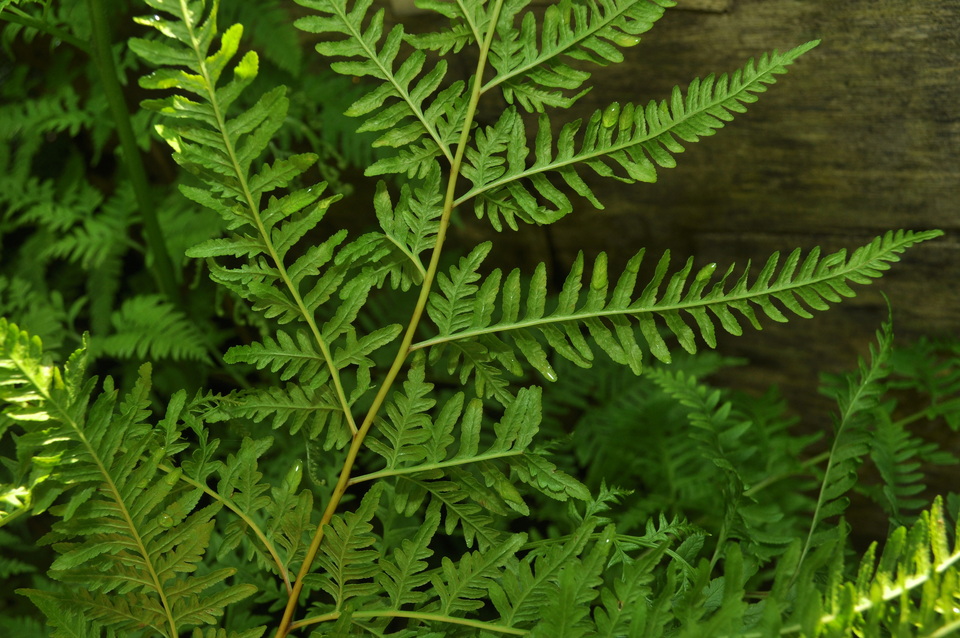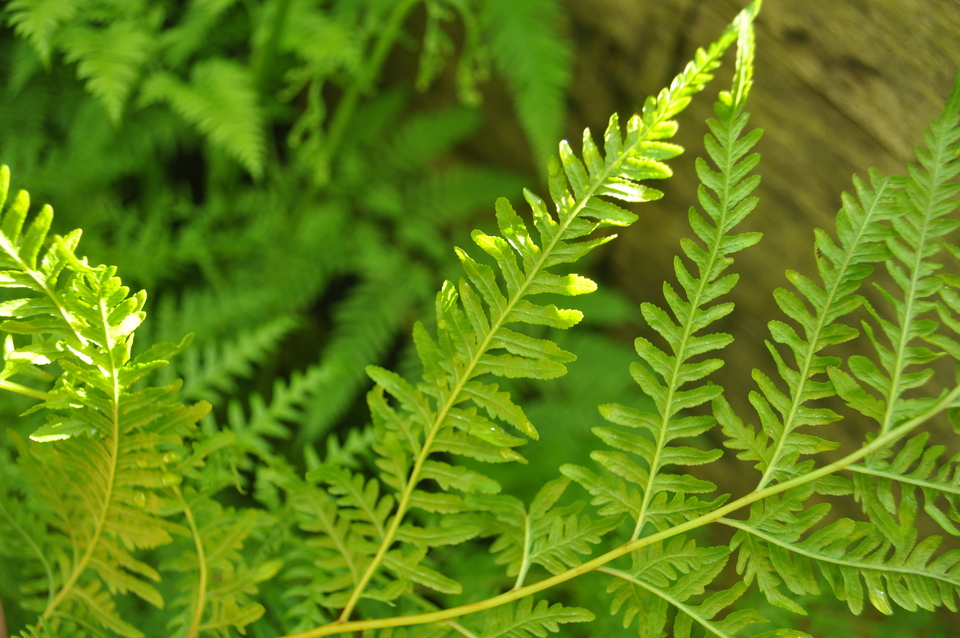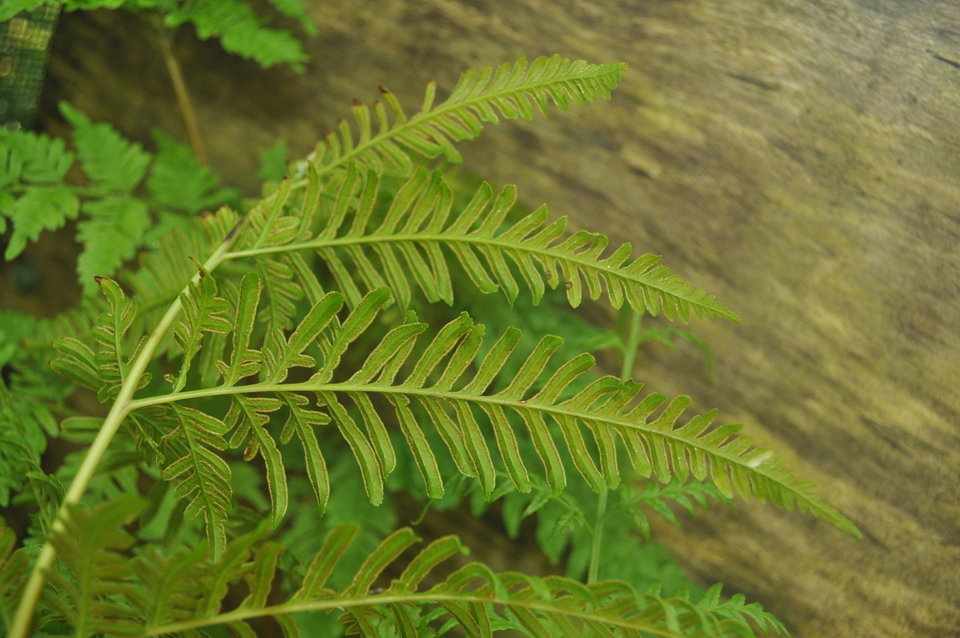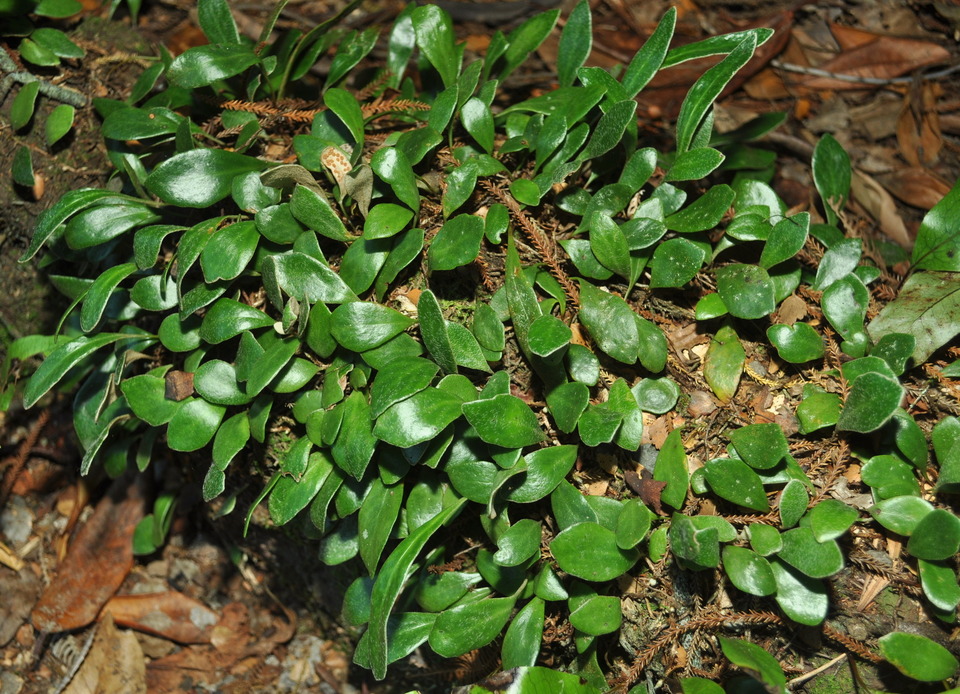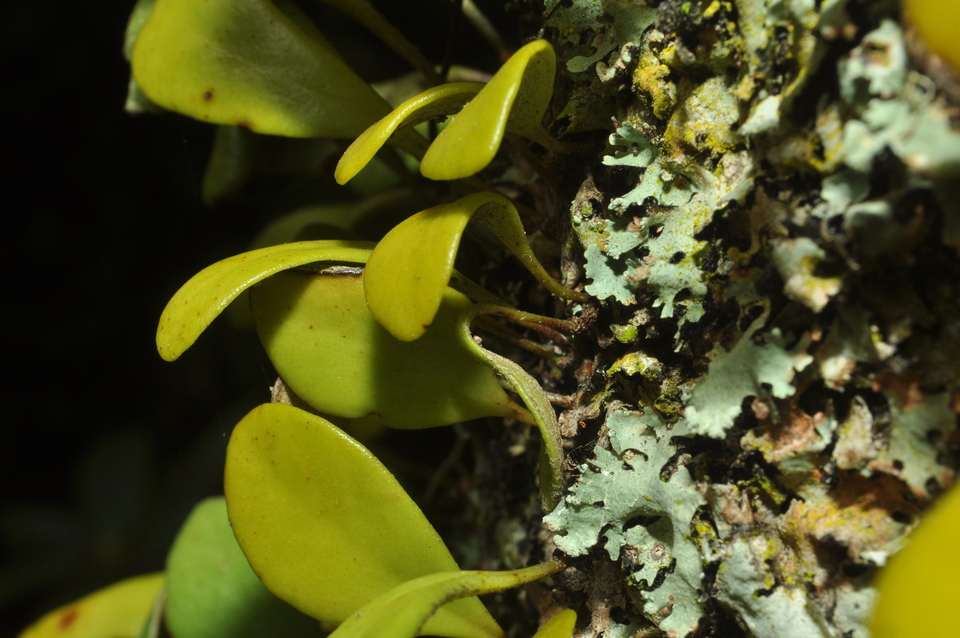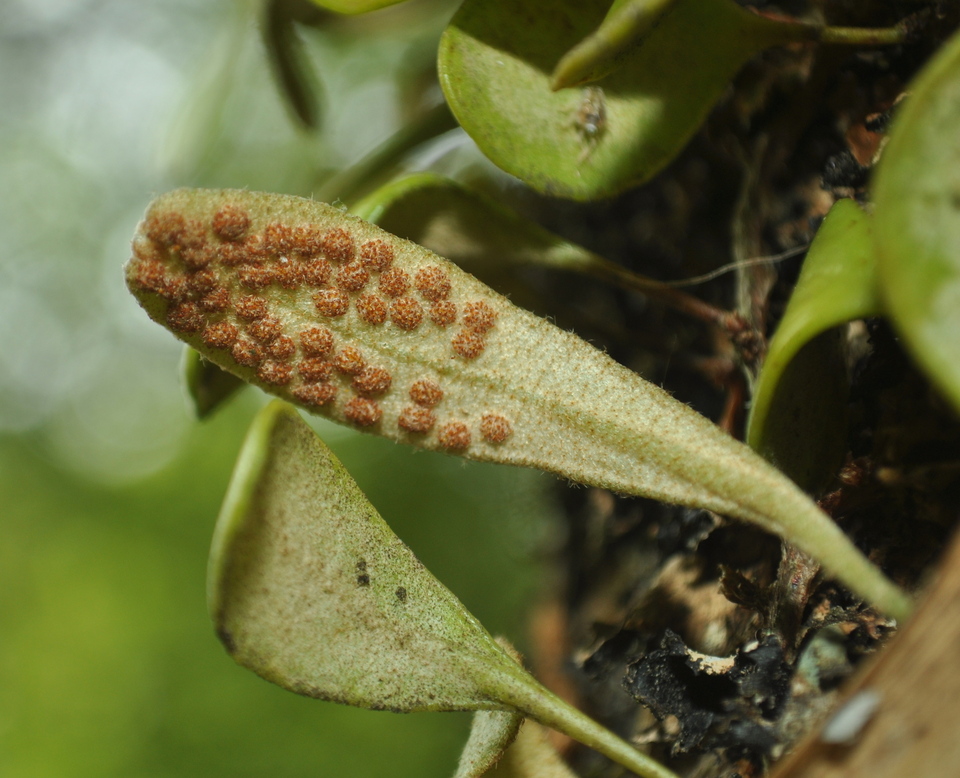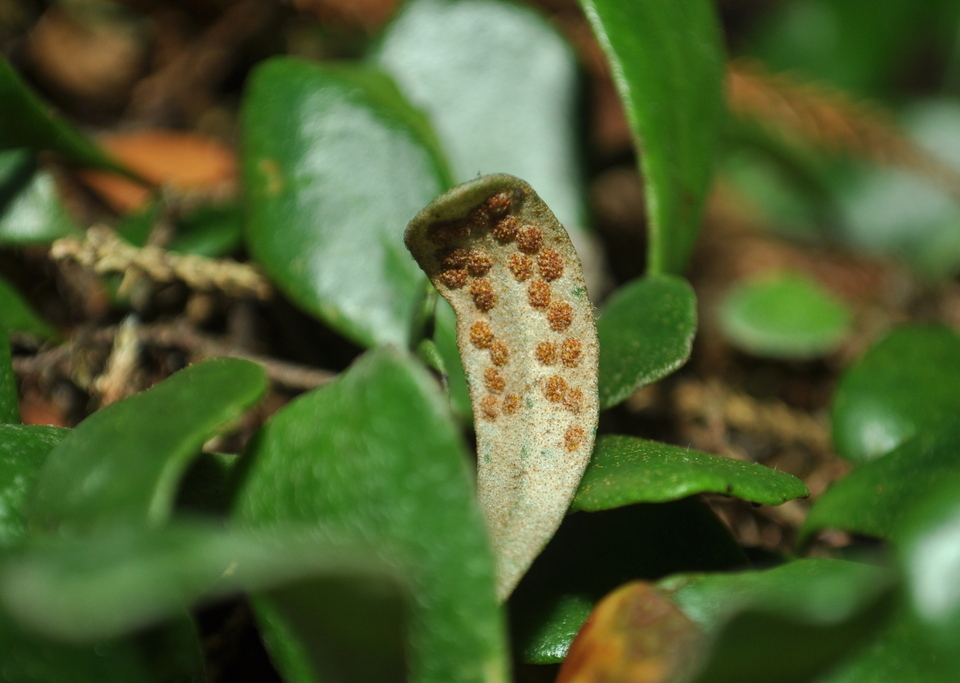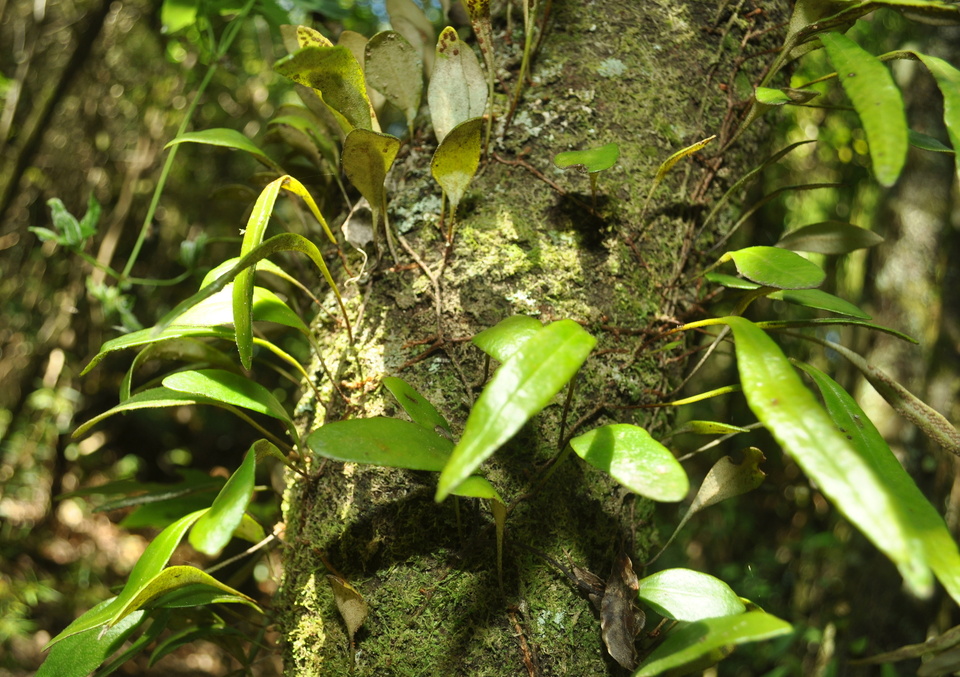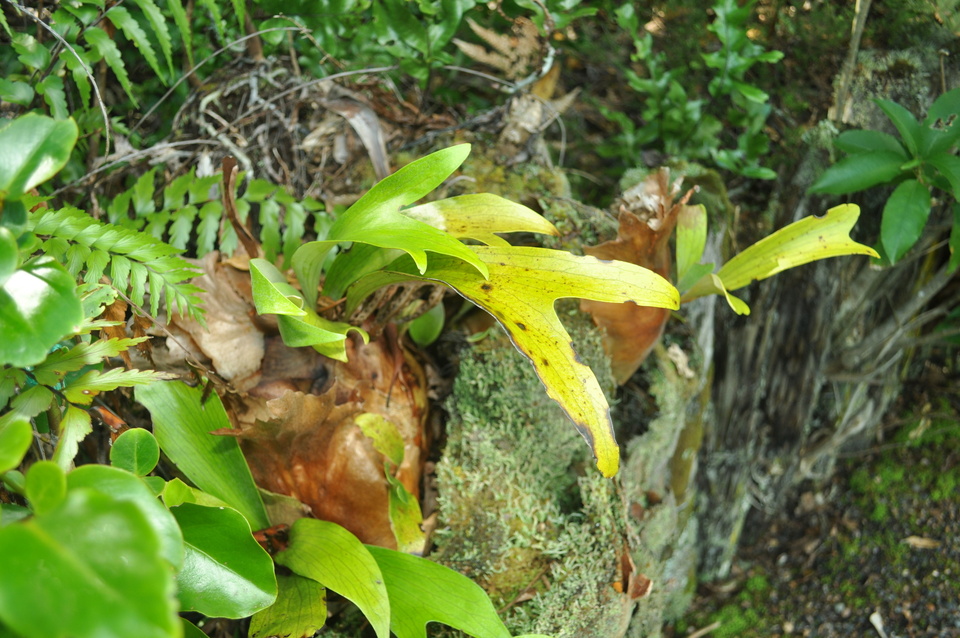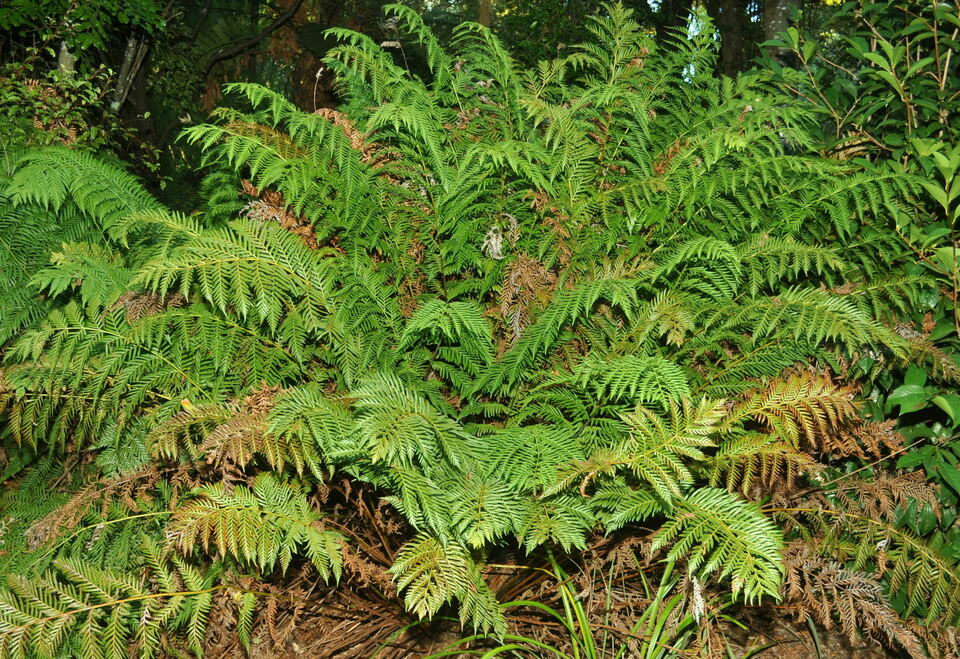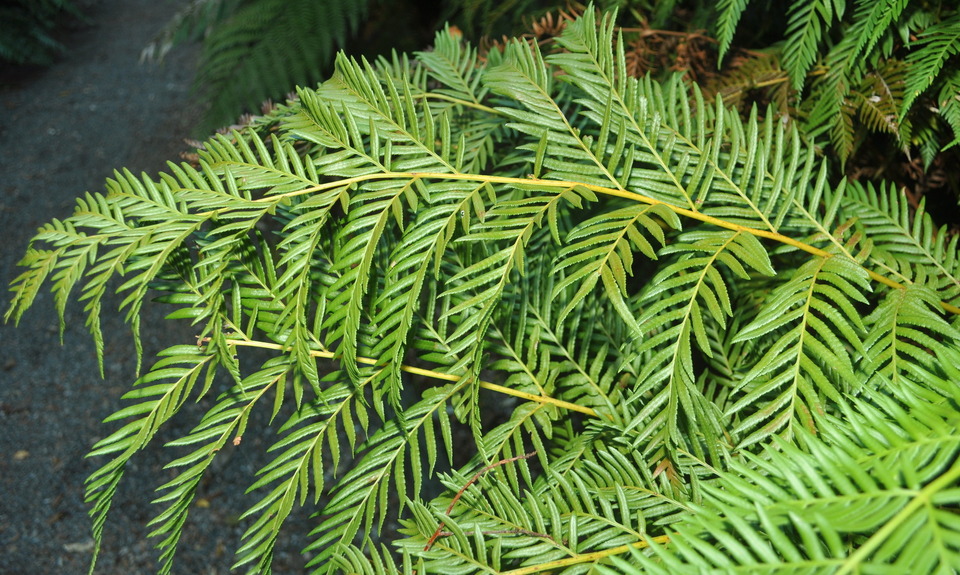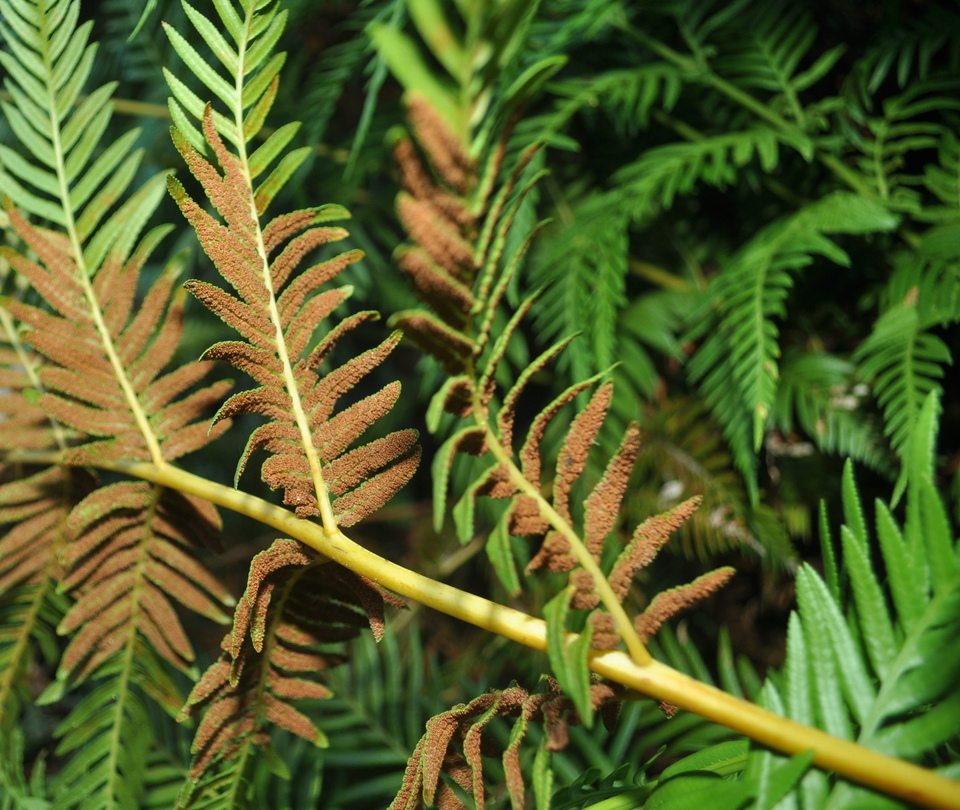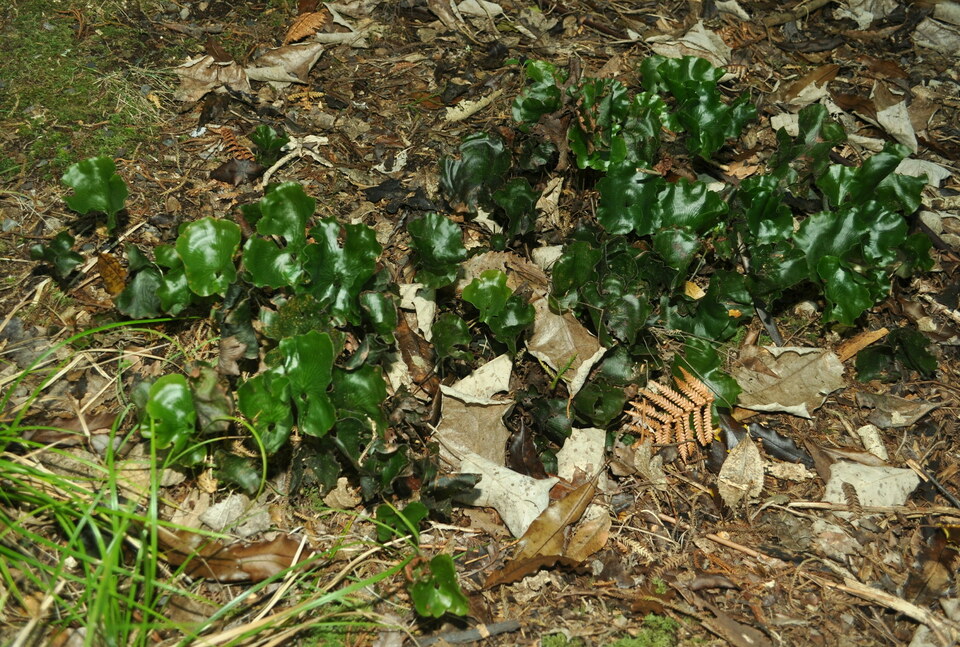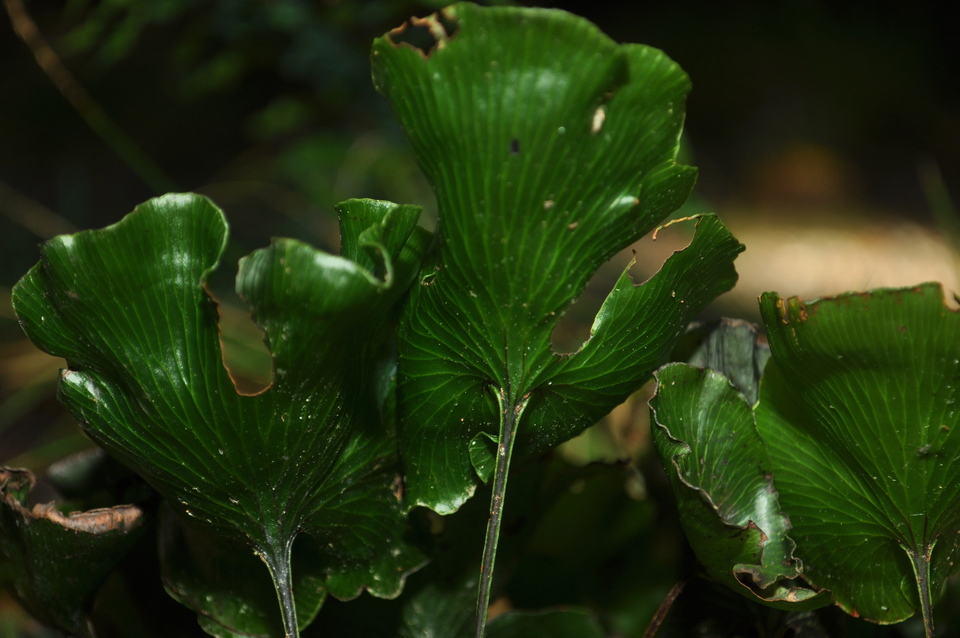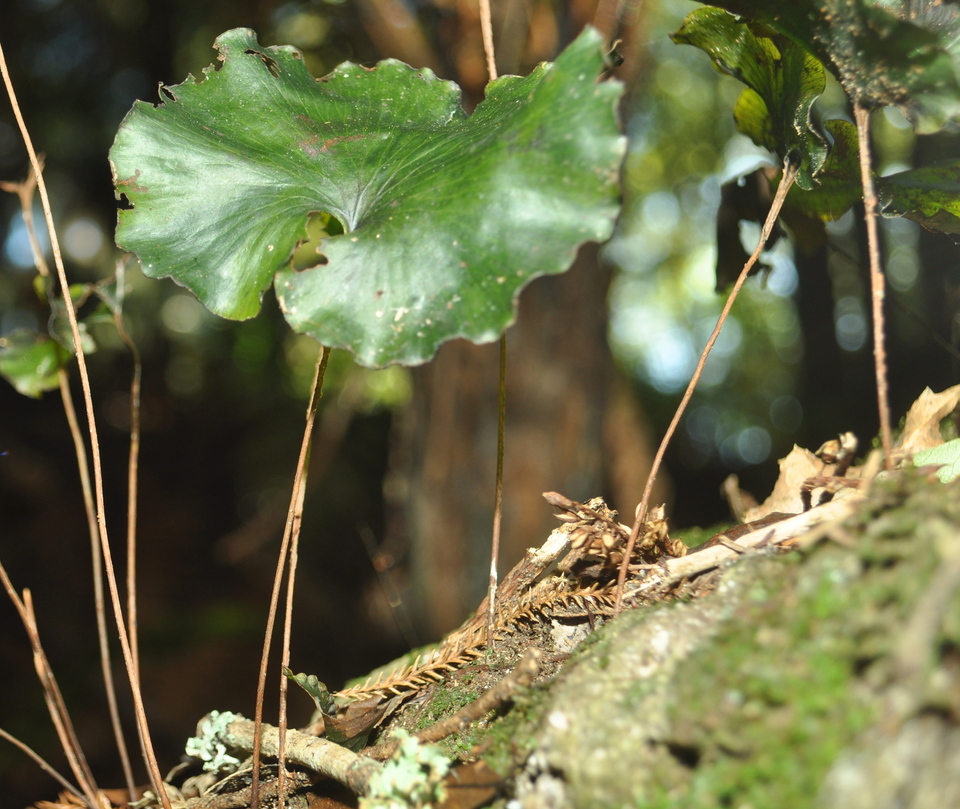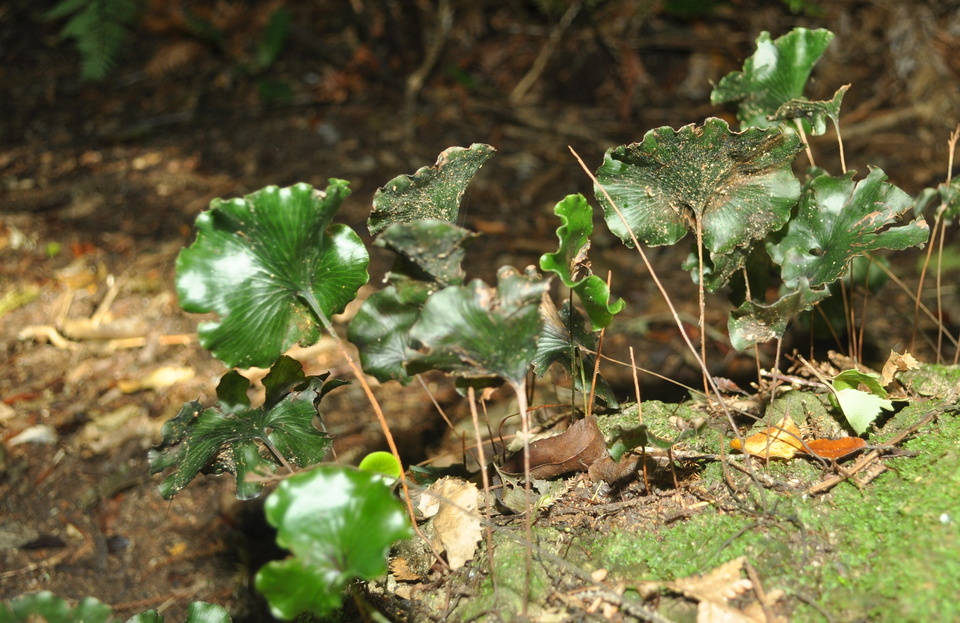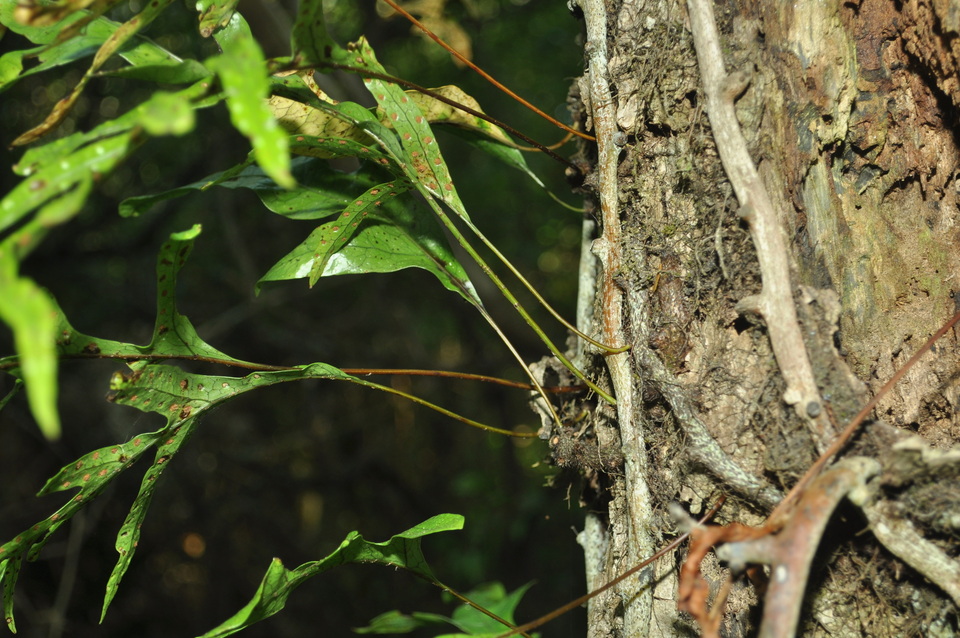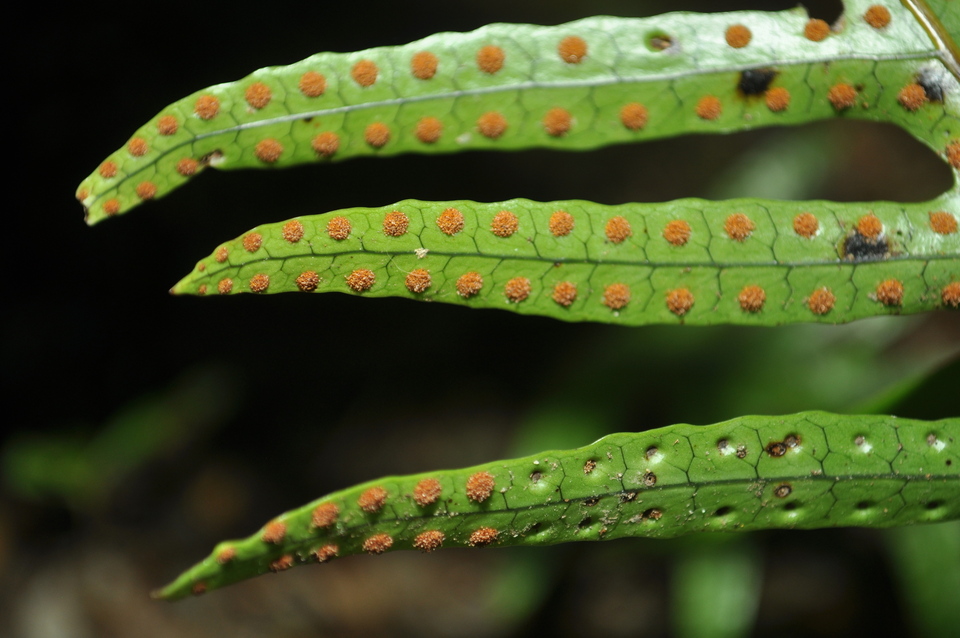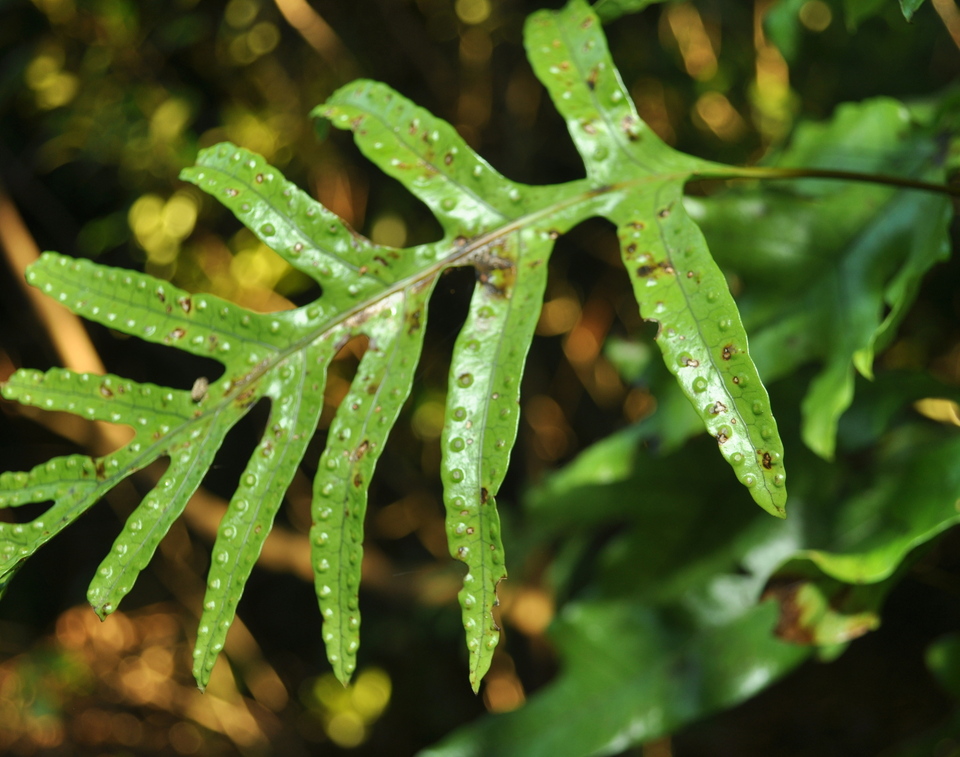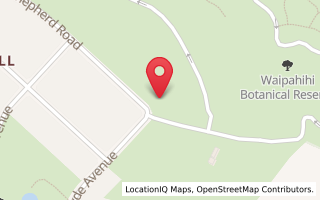Ferns
“I’ll buy you a beer when that fern flowers!”
Well, as we all know, ferns never flower, so the offer is pretty safe!!
Ferns don't have seeds either. They propagate (mostly) by spores, microscopic green or black specs that are flung out of the underside of the fern frond and carried away on the wind, looking for a suitably damp patch of bare soil on which to start a new fern. When you look at them under a microscope you can see the spores flying about. When the frond is heated and dries, the indusium decides it's time to trigger the release of the spores in its safe keeping. It’s quite a dynamic sight to behold.
The other common propagation method for ferns is by underground rhizome, or wandering root. The strangest must be the bulbil found on Asplenium bulbiferum and occasionally on Asplenium gracillimum.
There are many botanical names for the parts of the underside of the frond - sporangia, sorus (plural - sori), indusium, and "the covering over the sorus".
Suffice to say, each fern species has its own specially shaped sorus, and pattern of sori, (indusia). Try using a magnifying glass to identify them. With practice, many are identifiable with the naked eye.
Some books give ferns several European or Maori names depending on the locality and the sources of information. A good example is the gully fern. To complicate things further, the botanical names for many ferns have changed over time. The New Zealand Plant Conservation Network is the best source for correct names.
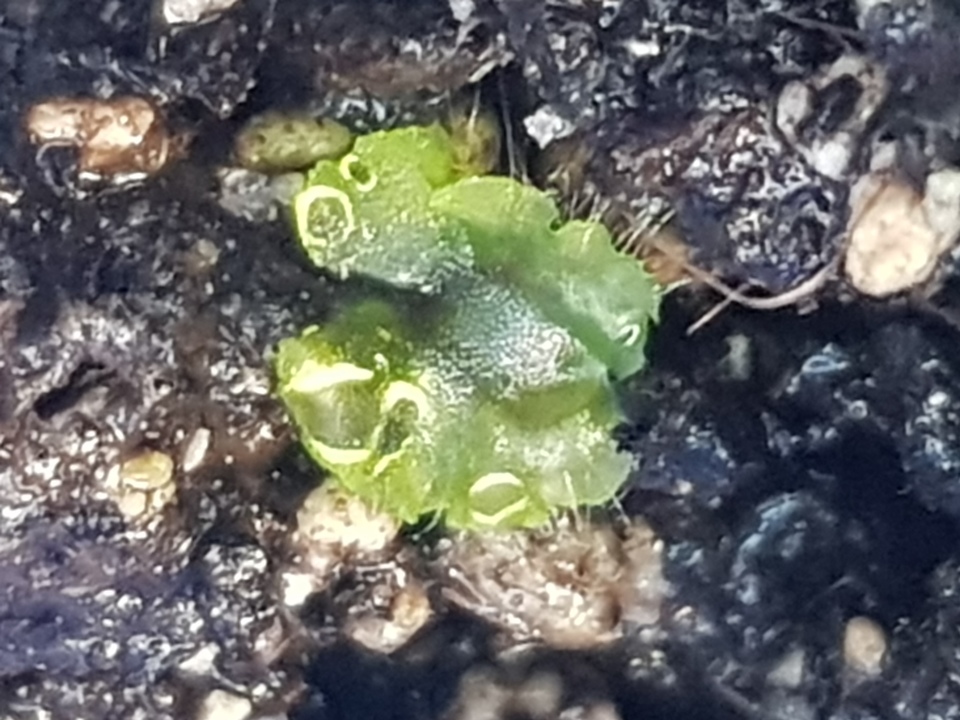
The spore which lands on damp bare soil, grows a green heart-shaped platform (prothallus - see the photograph above), up to 8mm across, which has both male and female organs. If moisture continues, then the male sperm is able to fertilise the egg and the first tiny frond (sporeling, gamephyte) grows and fine roots grow into the soil to find water and nutrients. The prothallus dies away, leaving the baby fern to grow up into something beautiful.
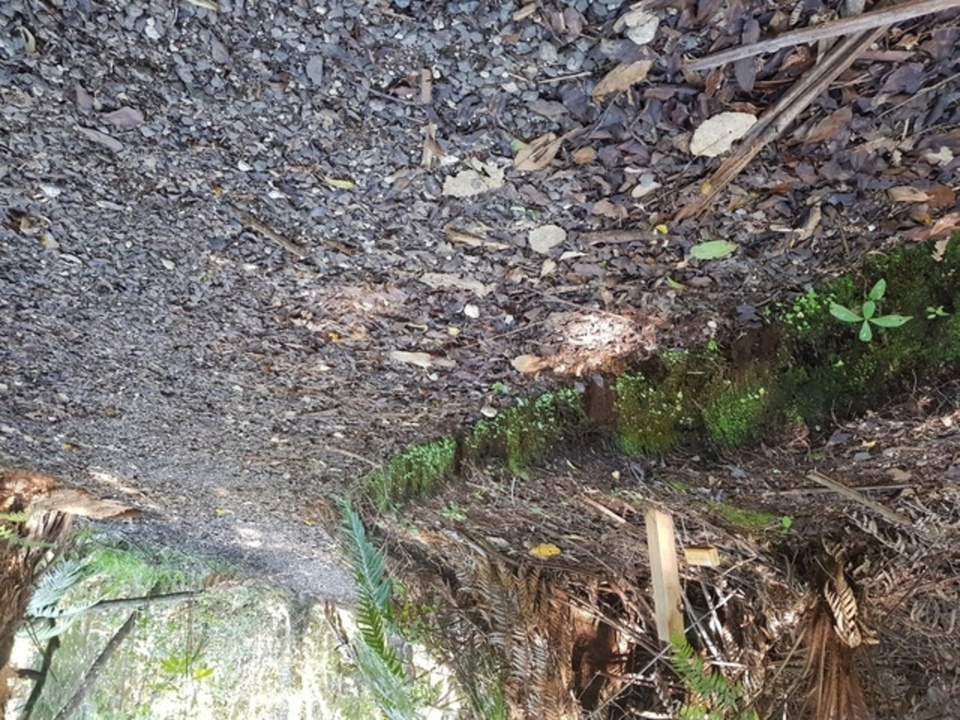
This picture shows a new bush track cut 18 months earlier. The shallow bank on the left of the track was spade cut and many small ferns have established themselves. The spores would have come in on the wind. The bank is shaded by the canopy above. It is south-facing and damp. Perfect! Ferns grow best where the sun doesn’t shine. So, not surprisingly, further along the track, where the bank is dry and gets the sun, there are no ferns.
Most of the ferns in the Gardens are Blechnum novae zelandiae (capense)(kiokio), with a few Paesia scaberula. Also in the picture are a few hopeful coprosmas. The baby ferns have established themselves very close together and as they grow, many will not survive, so we will take some for potting up and replanting elsewhere. Separating the plants at this early stage can be rather a delicate business.
The botanical (scientific) names of ferns can be confusing. During the days of the early explorer botantists, many new ferns were found. Since communication was poor, each explorer thought he/she was the first to find and name the species. Samples were collected and sent off to the Royal Herbarium at Kew Botanical Gardens in London. Here they were (and are still) compared with other similar samples and the names rationalised. Thus many ferns have collected several names over the years.
It is interesting to look at the same fern from books printed in the late 1800s, then books from the 1970s and later. The same fern can have names which appear and disappear.
Today's Blechnums were earlier identified under many different names, and others have been moved. Athyrium japonicum has become Deparia petersenii , identifiable by the vee-shaped pattern of sori on the underside of the frond. (This is a very common fern and easy to propagate.)
The result is a confusing array of names which can be off-putting to many. Fortunately we have the internet, and the New Zealand Plant Conservation Network, which so clearly identifies the botanical, common and Maori names of our ferns as they are accepted today.
In his book “Native Ferns” by Bruce Hamlin, (Botanist to the Dominion Museum in 1963), we are told that there are approximately 200 species of fern in New Zealand, whilst worldwide the number is estimated at over 10,000 species.
The Gardens are just over 420m above sea level and face south, so they get all the harsh, cold southerly winds. We have no streams, ponds or natural running water courses, and the soil is largely pumice with a top layer of rotted compost. Deep gullies are a feature which give shade, and in places the remains of wild pig rutting can be seen. Ferns grow abundantly in these damp, shaded places.
For a detailed and up-to-date description of NZ native ferns, view the New Zealand Plant Conservation Network site.
See below for images and descriptions of a selection of the ferns found in the Waipahihi Botanical Gardens. The order is mostly alphabetical under the accepted botanical name. All images were taken by Alan Griffith, in the Gardens.
Known ferns in the Waipahihi Botanical Gardens:
Adiantum cunninghamhii - maidenhair fern - puhinui
This is NZ's most common maidenhair fern. It is found on banks and under shading trees
"The name 'maidenhair' (given to Adiantum ferns generally) dates back at least to the fifteenth century, but it is not known whether it refers to the shimmering grace of the fronds, their fine black hair-like stalks, or to the fern's reputed medicinal properties."
Which Native Fern? by Andrew Crowe
Adiantum formosum - giant maidenhair fern
This is a rare species in NZ. The bush fronds grow to knee high on long black shiny stipes (stems). Look for it in shady places - where most ferns grow.
'Formosus' in Latin means handsome or beautiful.
Asplenium bulbiferum - hen and chicken fern - mouku
The little sprouts on the fronds are the bulbils. Once the old frond drops to the ground, the bulbils take root and, hopefully, grow into a new plant. This fern also produces spores the way other ferns do.
Asplenium flaccidum - hanging spleenwort - makawe
"Makawe' in Māori translates as 'hair of the head, or ringlets'.
'Spleenwort' (an old English name for Asplenium ferns generally) refers to a reputation dating back to the first century AD of one species (Asplenium ceterach) in healing enlarged spleens, liver and kidney complaints."
Which Native Fern? by Andrew Crowe
Asplenium gracillimum - hen and chicken fern
This one is an interesting variation of Asplenium bulbiferum - it rarely has bilbils. It is generally found at higher altitudes and in dry locations - which explains why we have lots of them in the Gardens.
Asplenium oblongifolium - shining spleenwort - huruhuru whenua
"'Altogether glowing' is a translation of the Māori name. The young curled shoots were eaten by Māori as greens and were described by one of the early missionaries, WIlliam Colenso, as 'very succulent and mucilaginous [gelatinous]'. Nowadays the fern is often eaten by goats and deer."
Which Native Fern? by Andrew Crowe
Asplenium polyodon - sickle spleenwort - petako
In the north this fern is most often found growing on trees or logs but in the south you will find it growing on the ground.
It is native to NZ but also to Madagasca, Asia, the Pacific Islands and Australia.
Lomaria discolor - crown fern - piupiu
"This is one of the few ferns to survive browsing by possums and deer, a fact thought to be due to the unusually high concentration of astringent-tasting tannins (over 14% by weight) present in the young fronds." [Previously known as Blechnum discolor.]
Which Native Fern? by Andrew Crowe
Cranfillia fluviatilis - star fern or creek fern - kiwikiwi
What do you think it looks like? - a star or a starfish ... or an octopus?
Parablechnum novae-zelandiae - cape or palm-leaf fern - kiokio
You'll see this fern all over NZ - have a look at track cuttings and the steep sides of roads - ideally damp bare soil where the sun doesn't shine. There is plenty of it along Shepherd Road and in the countryside north of Taupō.
Austroblechnum penna-marina - alpine hard fern or little hard fern
This fern produces red-brown fronds as well as green. The red-brown ones are fertile - they carry the spores. The green ones are just for show!
Cranfillia deltoides - mountain hard fern - korokio
This is an evergreen beauty with not one, but two types of frond. Its medicinal qualities have helped treat ailments for centuries, while its leaves have been used to subdue hunger and thirst. Hard-fern is widespread throughout the UK and the rest of Europe.Cyathea dealbata - silver fern - ponga
This is the one on Black Fern and All Black jerseys.
No other fern has the silvery white coating on the underside of the fronds. If you are out in the bush and think of using the fronds as bedding, put the silver side down so the spores don't irritate your skin.
Cyathea medullaris - black tree fern - mamaku
What a magnificent tree fern - the biggest one in NZ. The flesh inside the frond can be eaten but it's a bit slimy unless you steam it first in a hangi - they say it tastes better dried. The pith has also been used as a poultice for sores or wounds and if you eat the reddish gum it might treat worms or diarrhoea.
Dicksonia fibrosa - golden tree fern - whekī-ponga
Māori split the trunks of this fern into slabs for lining buildings, especially food storehouses. The fibres are too tough for rats. Plug any gaps or holes and the food is safe!
In fact the trunk is a dense collection of roots. You must not remove the fronds - they keep the tree cool, and conserve moisture rising up inside the fibrous trunk to keep the tree alive.
Dicksonia squarrosa - rough tree fern - whekī
Another building material - great for making walls because it doesn't rot as quickly in the ground as other materials. The trunks were made into poles and used as columns in meeting houses. To make walls, panels made from reeds or fern stalks were attached to the poles.
Hymenophyllum sanguinolentum - filmy ferns - mauku
"NZ has almost 30 native filmy ferns. As the name suggests they have thin fronds, many only one cell thick. Several have strong chemical defences that are apparently capable of preventing competing plant seeds from germinating or of halting their growth if they do."
Which native Fern? by Andrew Crowe
Lastreopsis hispida - hairy fern - tuakura
This fern is sometimes called 'hairy legs' because of its unusually bristly stipe (stem).
Leptopteris hymenophylloides - crape fern - heruheru
"There are two kinds of crape fern: this, the more common one, is called single crape fern to distinguish it from the more striking and delicate true, or double, crape fern - Prince of Wales feathers."
Which Native Fern? by Andrew Crowe
Paesia scabulera - ring fern - mātātā
This fern creeps - often all over pasture.
Another thing that makes it different is that it has a fragrance when the sun has been on it for a while. It contains an essential oil that could be used for making perfume.
Pellaea rotundifolia - button fern or round-leaved fern or NZ cliff brake - tarawera
This little cutie grows pretty well anywhere - native, exotic forests and grassland; on rocky outcrops, stony banks, stream banks, scree, cliffs, roadsides, river terraces, swamp margins; on limestone, sandstone, greywacke, schist, scoria, lava, rhyolite, peat and sand; montane and lowland .... but not on Stewart Island.
Pakau pennigera - gully fern - pakau
A graceful fern - mature gully ferns develop a short trunk.
"The fronds of this fern were among the flavouring plants used by Māori to tie around, place under or over, vegetable food in hāngi."
Which Native Fern? by Andrew Crowe
Polystichum neozealandicum - common shield fern - pikopiko (formerly Polystichum richardii)
The young fiddleheads (curled up baby fronds) are delicious - cook them the way you cook asparagus, drain and serve on toast - with butter.
But - probably not environmentally justifiable unless you are in survival mode.
Polystichum vestitum - prickly shield fern - pūnui
Another emergency food - with so little native forest left now, it would be better to treat the fiddleheads of this fern as emergency food rather than a delicacy. Not that browsing goats, sheep, cattle and deer would think of saving a forest by not eating it!
Pteridium esculentum - bracken - rārahu or rāhurahu
This is a very useful fern. The root (really an underground stem) was the most important wild vegetable for early Māori. It needs to be cooked properly though - the furry brown fiddleheads are now proved to be cancer-causing if you eat them raw. Bracken produces a light-brown dye useful for weaving. Also, it is an early coloniser, preparing the way for regrowth of native bush.
Pteris macilenta - sweet fern or sweet brake - titipo
But is not sweet to eat or smell!
"Hold a frond up to the light to see the characteristic net-like pattern of veins."
Which Native Fern? by Andrew Crowe
Pteris tremula - shaking brake - turawera
"In summer, says one early writer, 'surveyors cutting lines through the warm sheltered gullies in which it abounds, often find the smell so strong as to be unpleasant, and I often have heard it called 'stinking fern' on this account, though many people rather like the scent.' "
Which Native Fern? by Andrew Crowe
Pyrrosia elaegnifolia - leather-leaf fern - ngārara wehi
A really hardy fern, you can find it doing equally well on an old tree in a city or in the bush.
Its fleshy fronds and the fine hairs on the underside of the fronds help keep the fern from drying out during periods of drought.
Platycerium - staghorn or elkhorn fern
Platycerium is a genus of about 18 fern species in the polypod family, Polypodiaceae. Ferns in this genus are widely known as staghorn or elkhorn ferns due to their uniquely shaped fronds.
Members of this family of ferns are found on every continent except Europe and Antarctica.
Todea barbara - royal fern or king fern
This is a relatively rare crown fern found mostly in the far North.
We have two well-established clumps of Todea in the Gardens. They have been there for many years and do not appear to have multiplied in that time.
Hymenophyllum nephropyllum - kidney fern - konehu
This is one of the most beautiful NZ native ferns. It is also remarkable - for two reasons.
It forms a delicate mat of fronds such that seeds of other plants can't grow on it. Also, it tolerates drought by tightly furling its fronds and then unfurling them when the rains comes.
Zelandia pustulata - hound's tongue or kangaroo paw fern - kōwaowao or pāraharaha
This one gets around too - you'll see it in pretty well every part of the Gardens.
Thomas Frederick Cheeseman (1845-1923) - botanist, museum director, teacher
Rev William Colenso (1811-1899) - printer, missionary, explorer, naturalist, politician
Allan Cunningham (1791-1839) - English botanist and explorer, primarily known for his travels in Australia to collect plants
James Dickson (1738-1822) - Scottish nurseryman, plant collector, botanist and mycologist
Sir Joseph Dalton Hooker OM GCSI CB PRS (1817-1911) - British botanist and explorer
Sir John Kirk, GCMG, KCB, FRS (1832-1922) - physician, naturalist, companion to explorer David Livingstone
Dr Francis Logan (1784-1862) - Scottish surgeon to Royal Navy, and his son, Houston Francis Logan - both interested in NZ ferns and enthusiastic collectors
Wilhelm Friedrich von Gleichen-Russwurm (1717-1783) - sometimes recorded as Wilhelm Friedrich von Gleichen, German botanist and microscopistReferences:
Listed in date order: (because over the years taxonomic /scientific name changes have been made)
Flora Novae-Zelandiae, Hooker (1855)
Fern and Fern Allies, GM Thomson (1882)
The Ferns of New Zealand and its Immediate Dependancies, HC Field (1890)
New Zealand Ferns, HB Dobbie (1921)
Manual of the New Zealand Flora, TF Cheeseman (1925)
New Zealand Ferns, HB Dobbie and M Crookes (1952)
Book of Ferns, Greta Stevenson (1954)
Flora of New Zealand, HH Allan (1961)
Native Ferns (Nature in New Zealand series), Bruce Hamlin (1963)
New Zealand Ferns in Your Garden, Muriel E Fisher and L Ward (1976)
Which Native Fern? A Crowe (1994)
New Zealand Ferns and Allied Plants, PJ Brownsey, JC Smith-Dodsworth (1st pub 1989; revised 2021)
A Photographic Guide to the Ferns of New Zealand, Lawrie Metcalf (2003)
| Top |

